Ahoy, matey! The Jolly Roger has been a symbol of pirates and adventure for a long time. Today, many people choose this design as a tattoo to show their bold spirit. But what makes the Jolly Roger so cool, and why do so many people love it?
In this blog post, we’ll go on a journey to learn about the Jolly Roger tattoo. We’ll look at its history, starting with famous pirates from the 17th and 18th centuries. We’ll see how this fearsome flag turned into a sign of defiance and uniqueness.
Here’s what we’ll talk about:
- History: We’ll trace the Jolly Roger back to its pirate days. Learn about the notorious pirates who used this flag to scare their enemies.
- Meaning: The Jolly Roger stands for many things, like rebelling against the rules and celebrating freedom and adventure.
- Designs: The classic skull and crossbones have inspired many tattoo styles. You’ll see everything from simple black ink to bright, detailed designs.
- Modern Impact: The Jolly Roger is not just about old pirates. It is still popular today among groups like punk rock bands and motorcycle clubs.
- Getting a Tattoo: If you’re thinking about a Jolly Roger tattoo, we’ll give you tips on picking the right design and a good tattoo artist that fits your style and story.
So, get ready to set sail with us as we explore the exciting world of Jolly Roger tattoos. Whether you love history, cool tattoo art, or the rebellious pirate spirit, there’s something here for everyone. Enjoy the adventure!
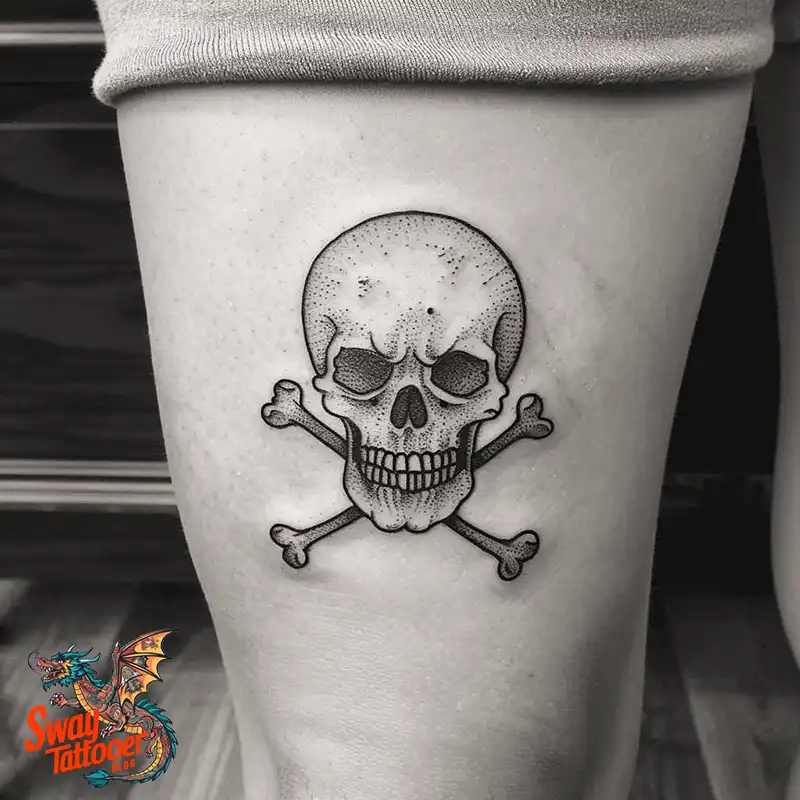
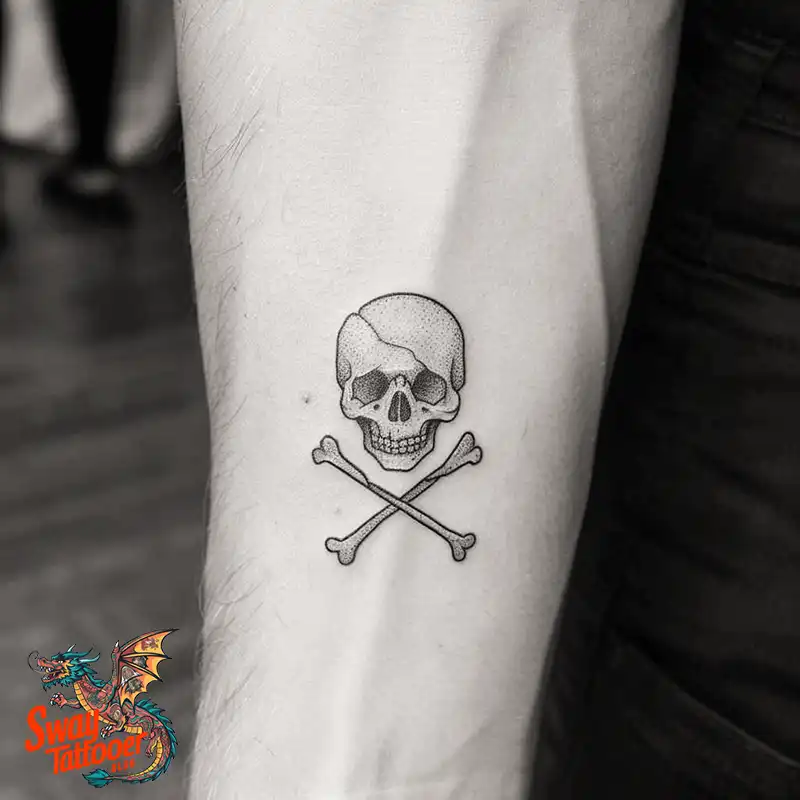
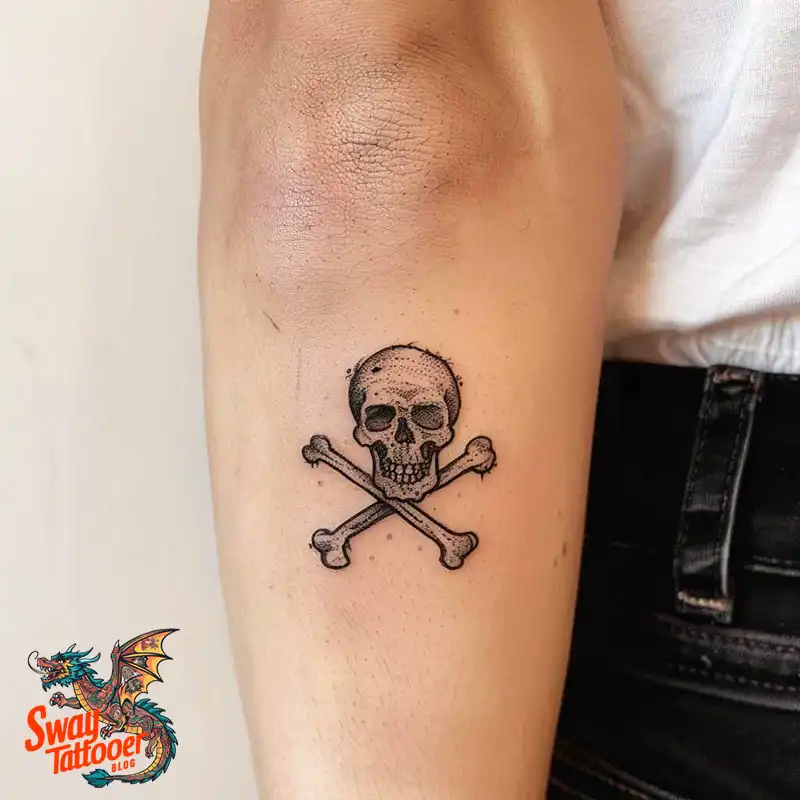
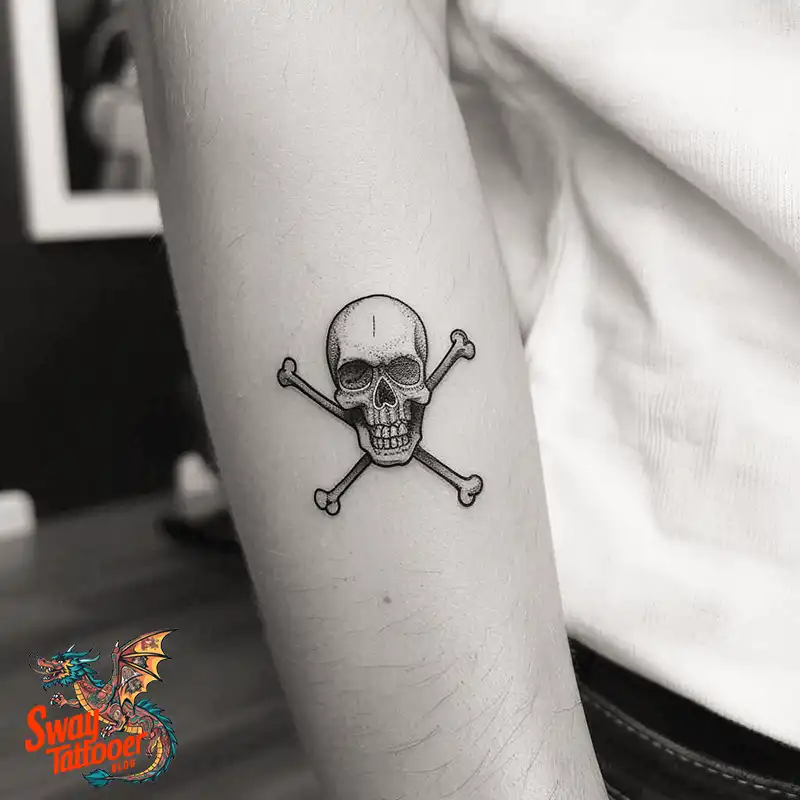
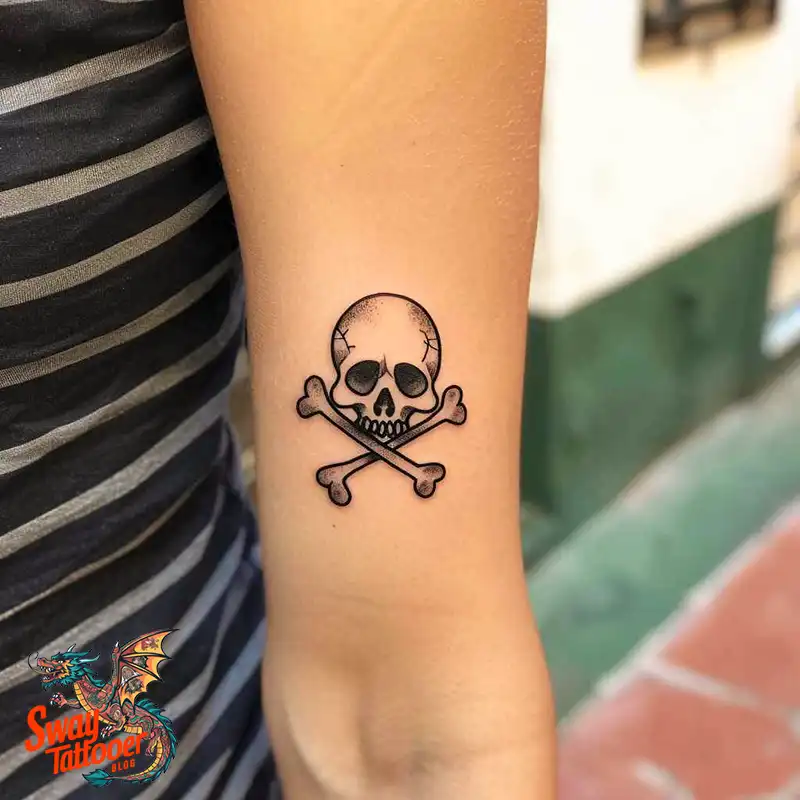
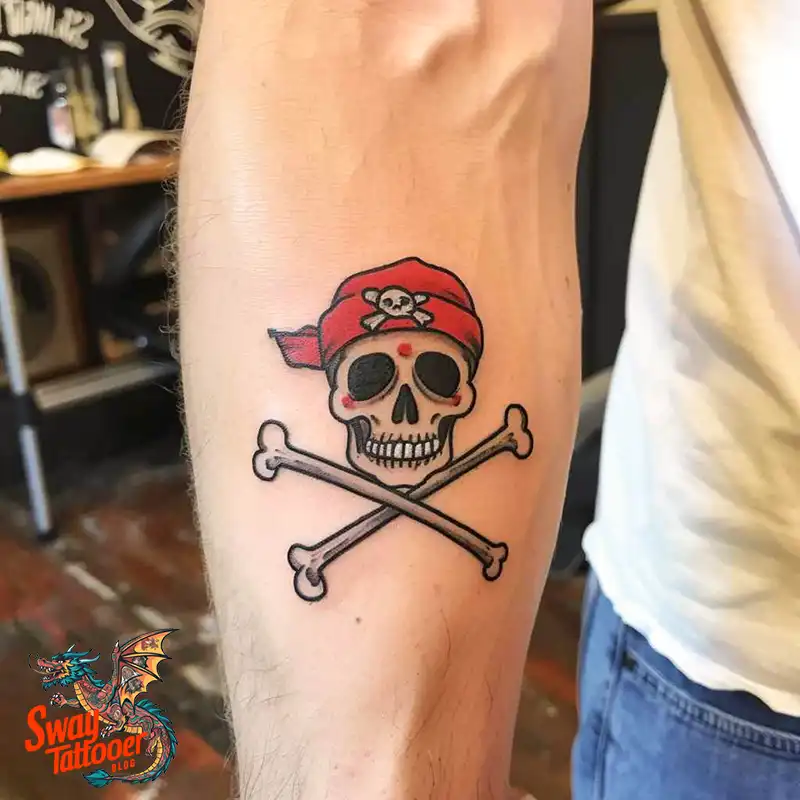
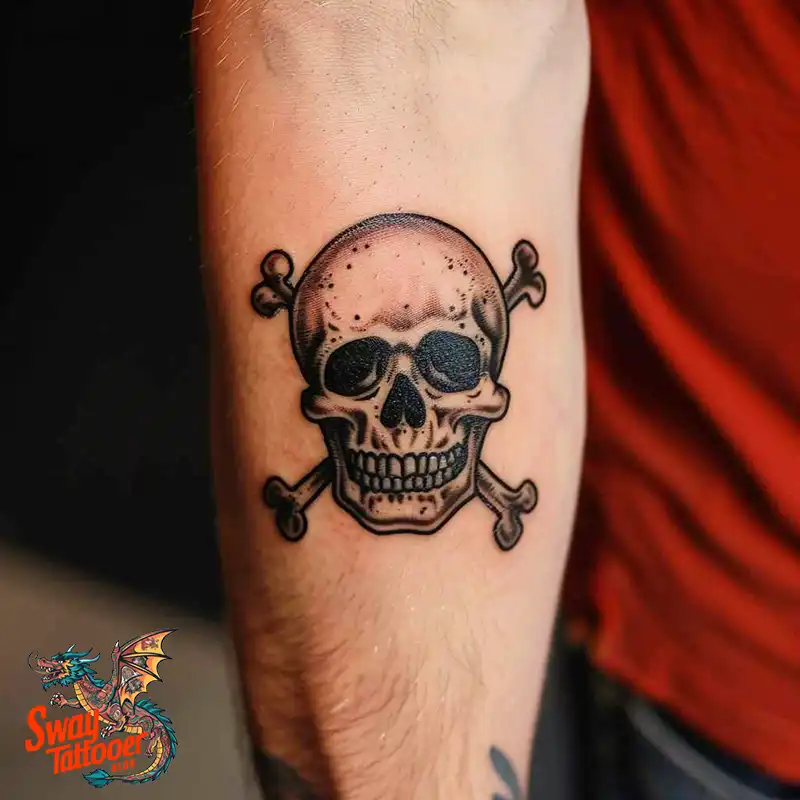
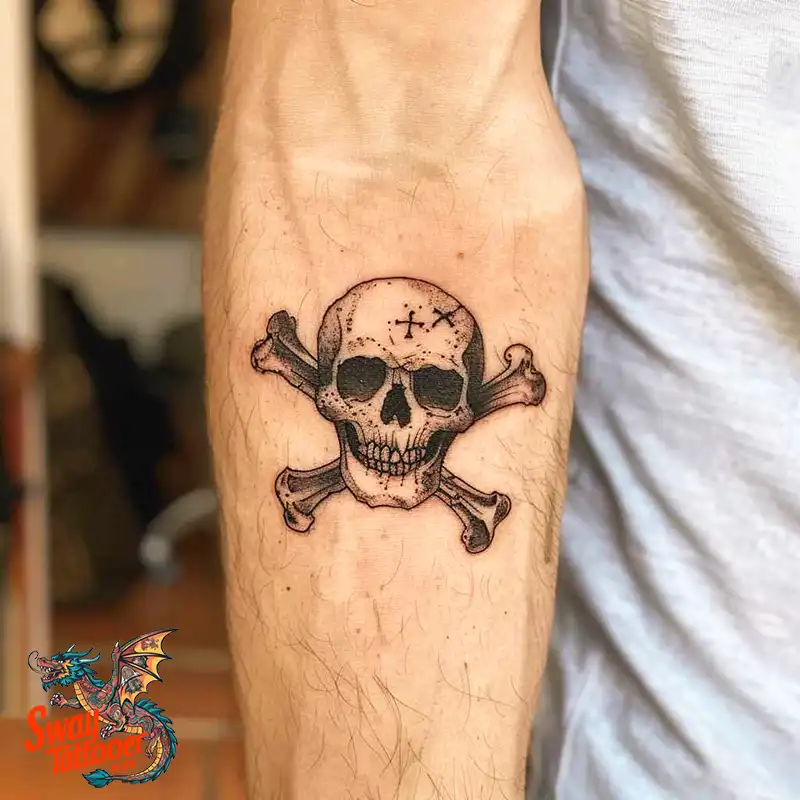
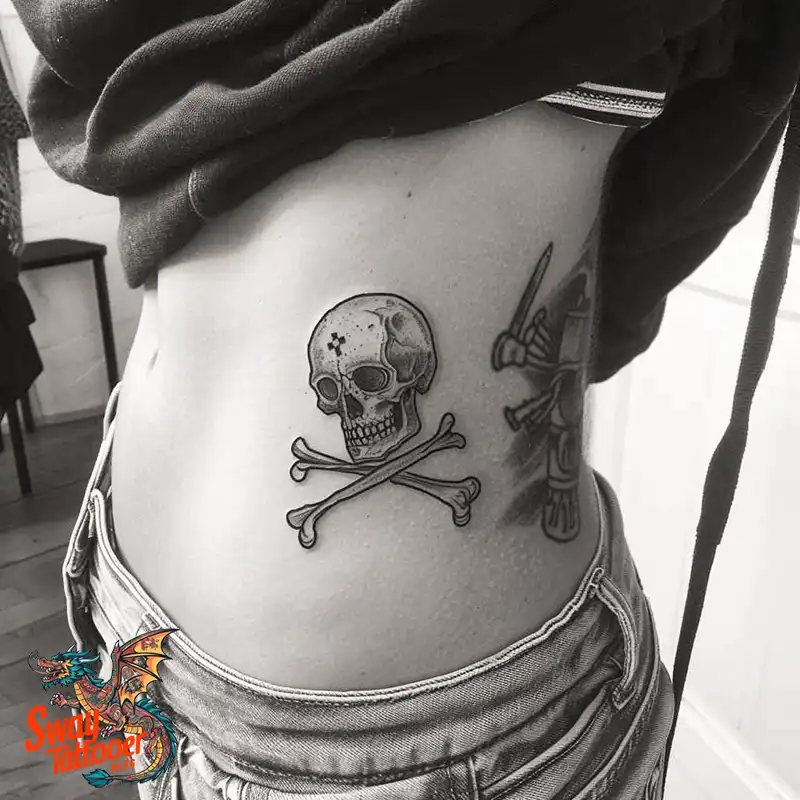
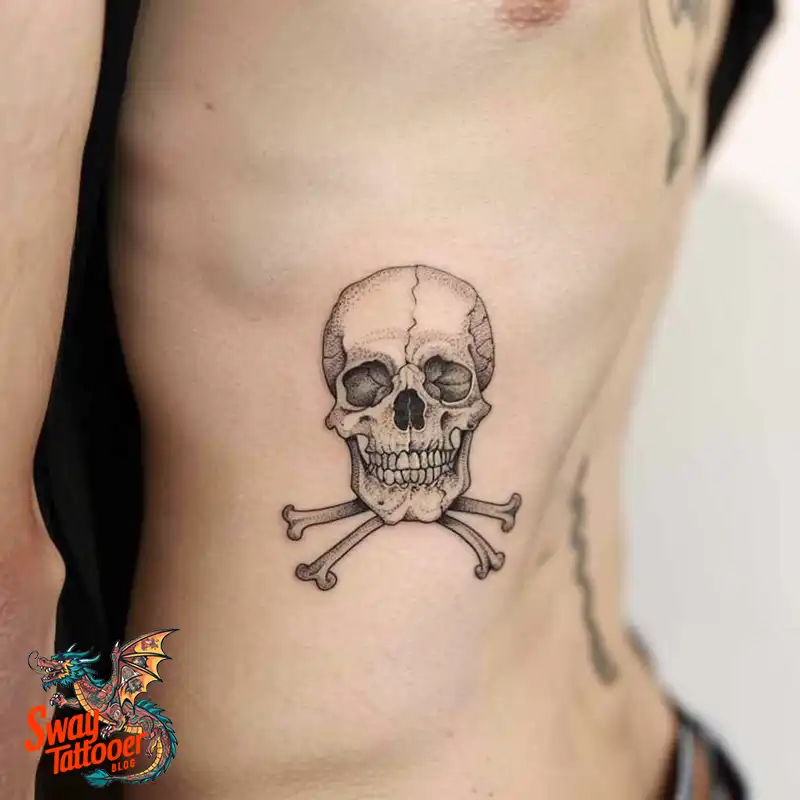
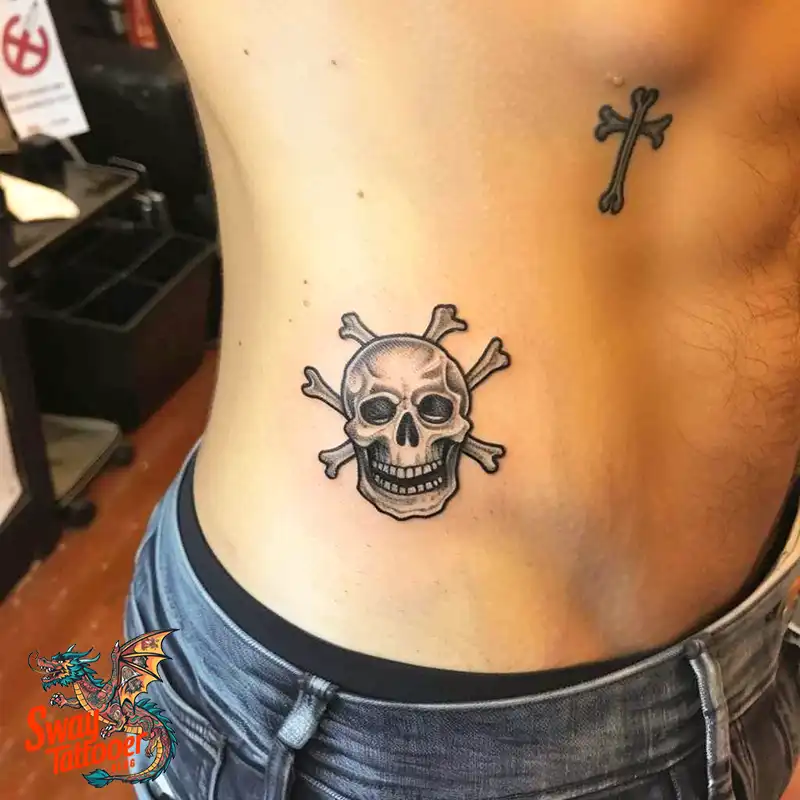
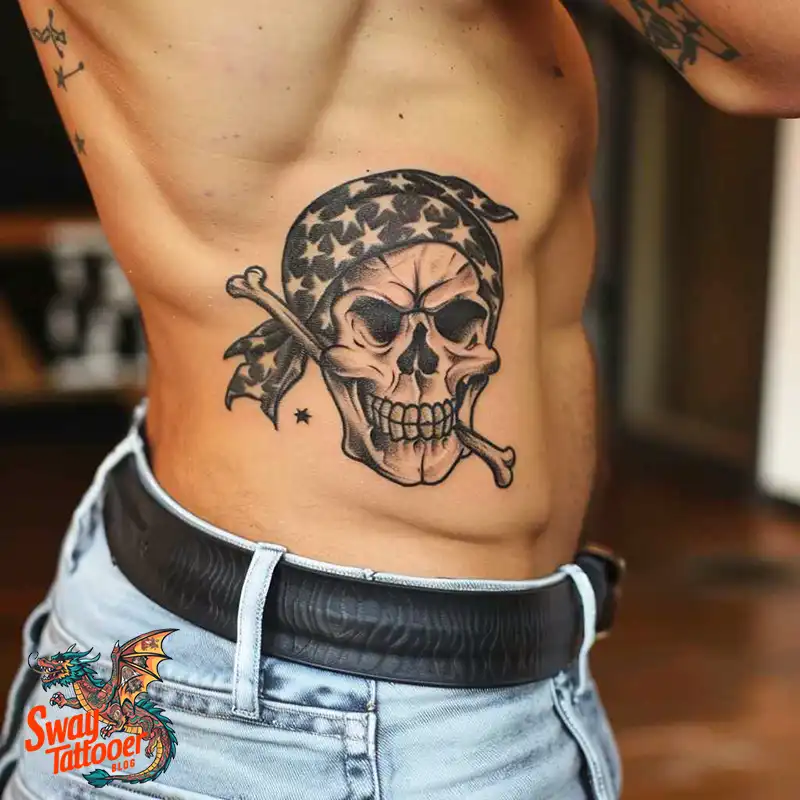
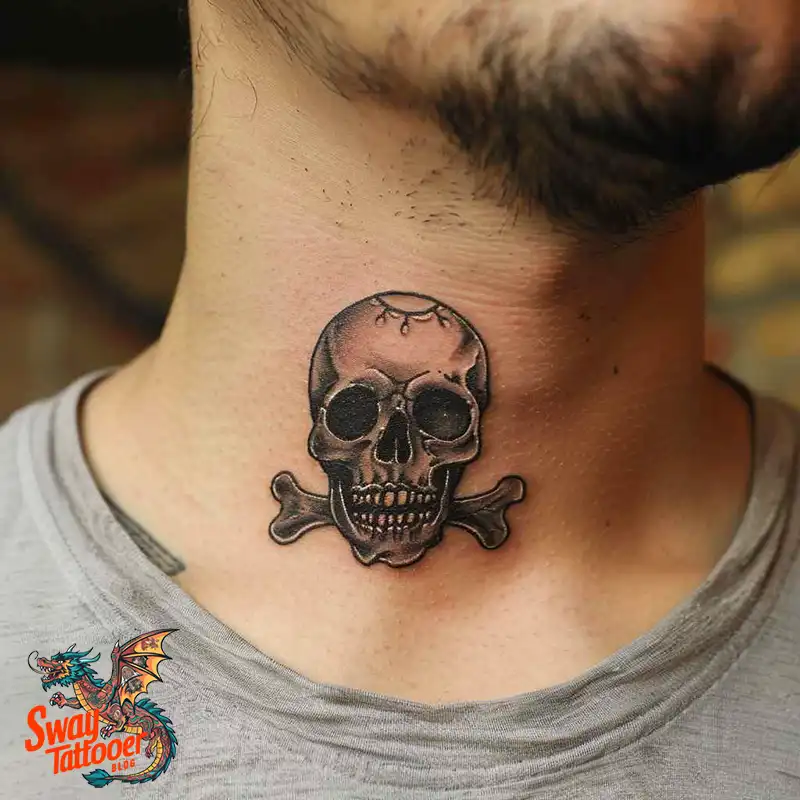
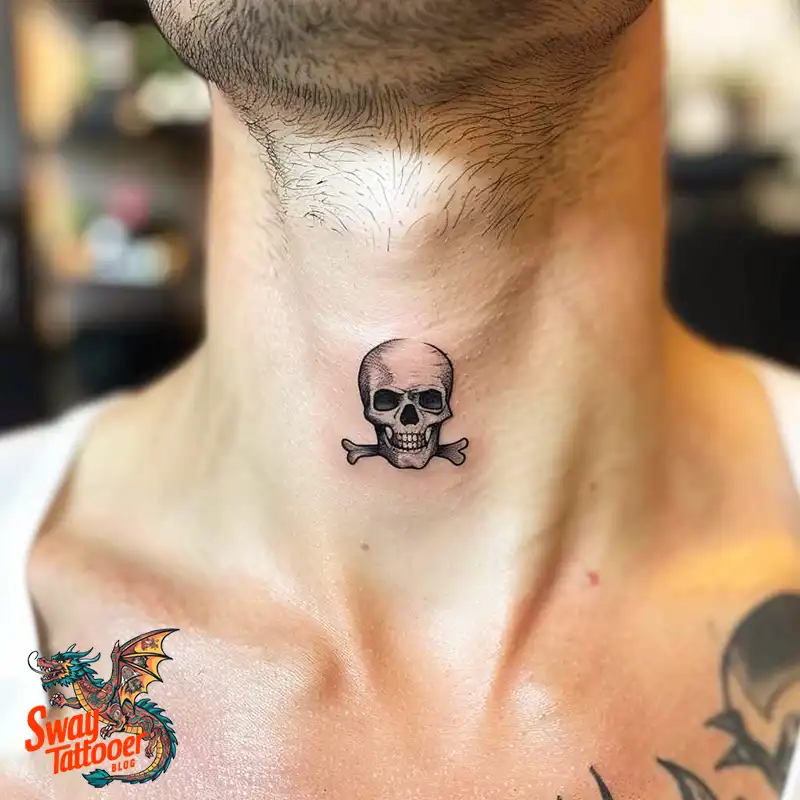
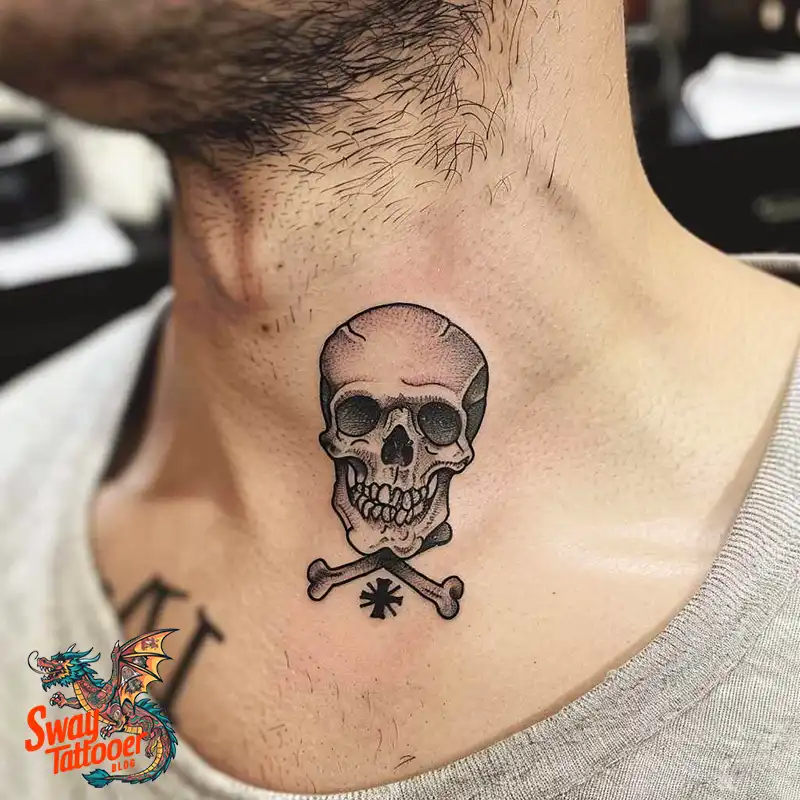
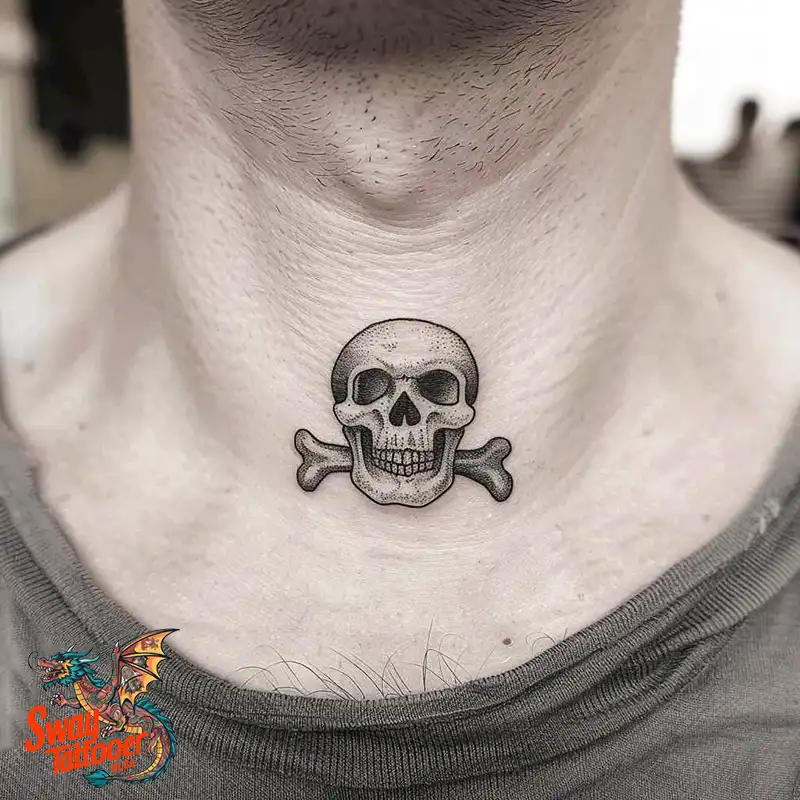
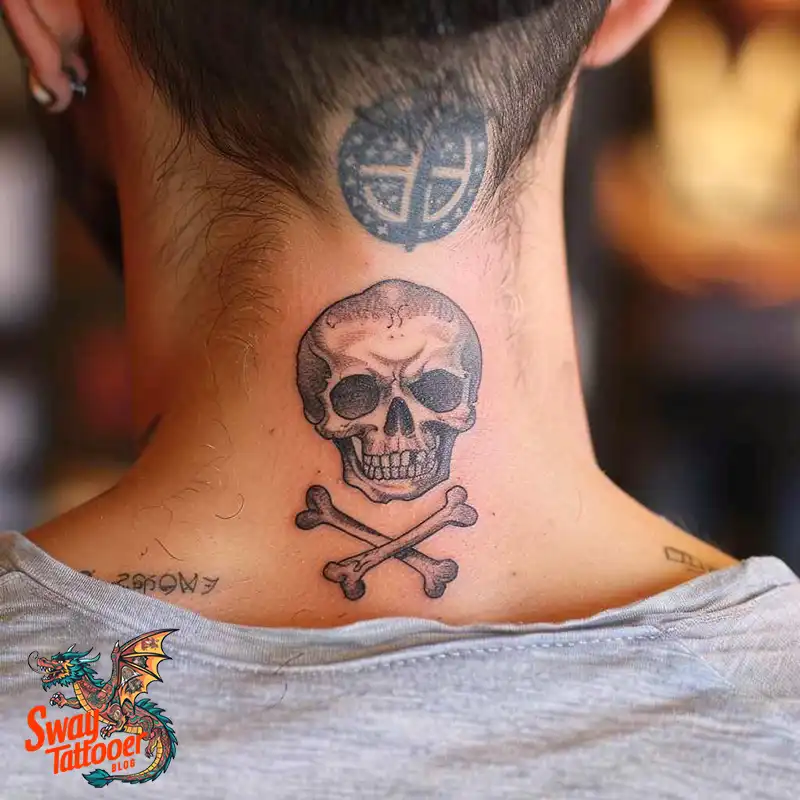
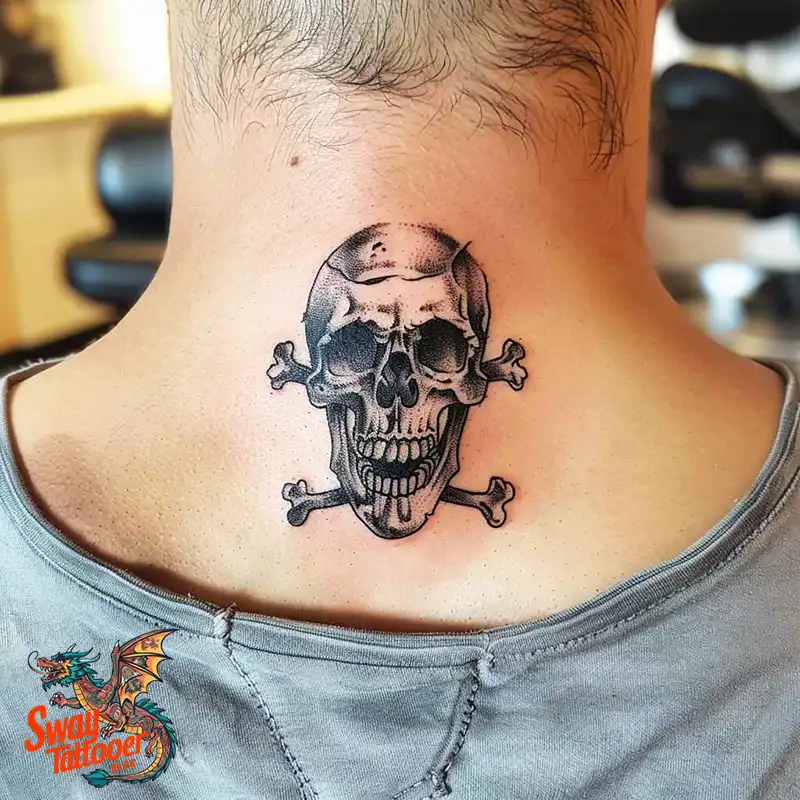
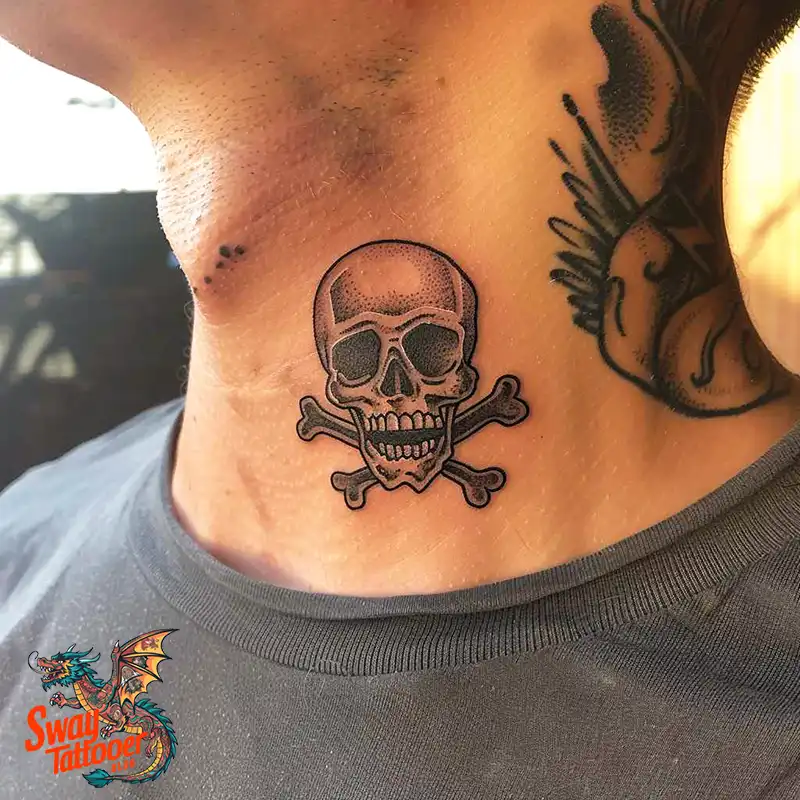
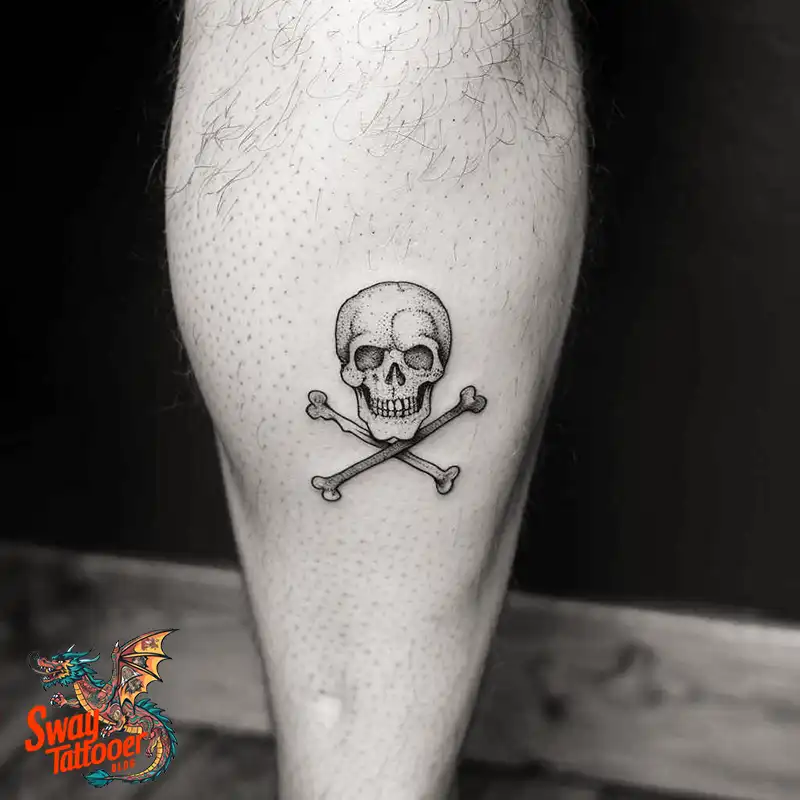
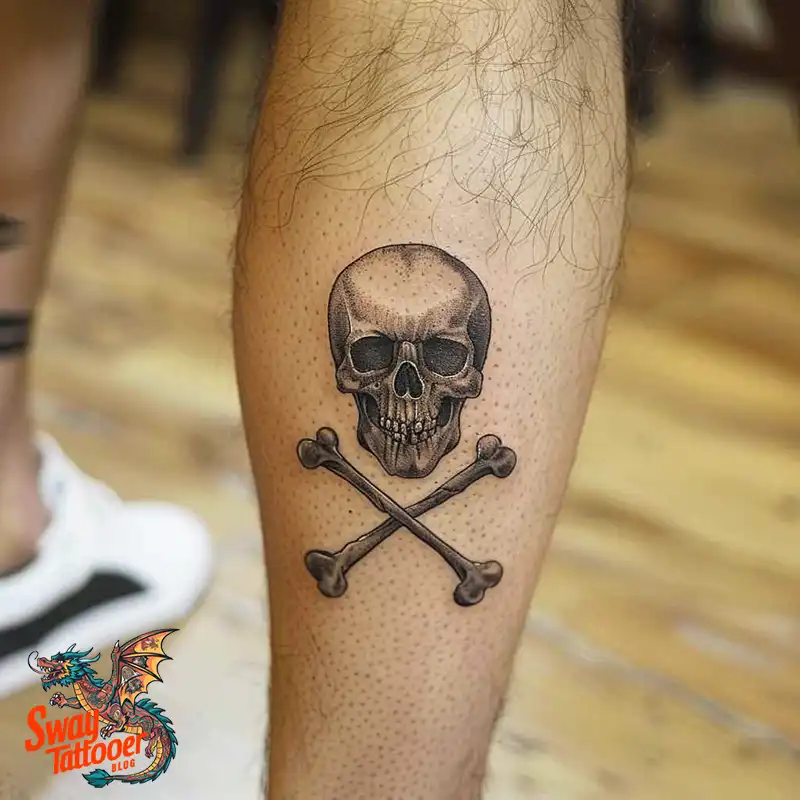
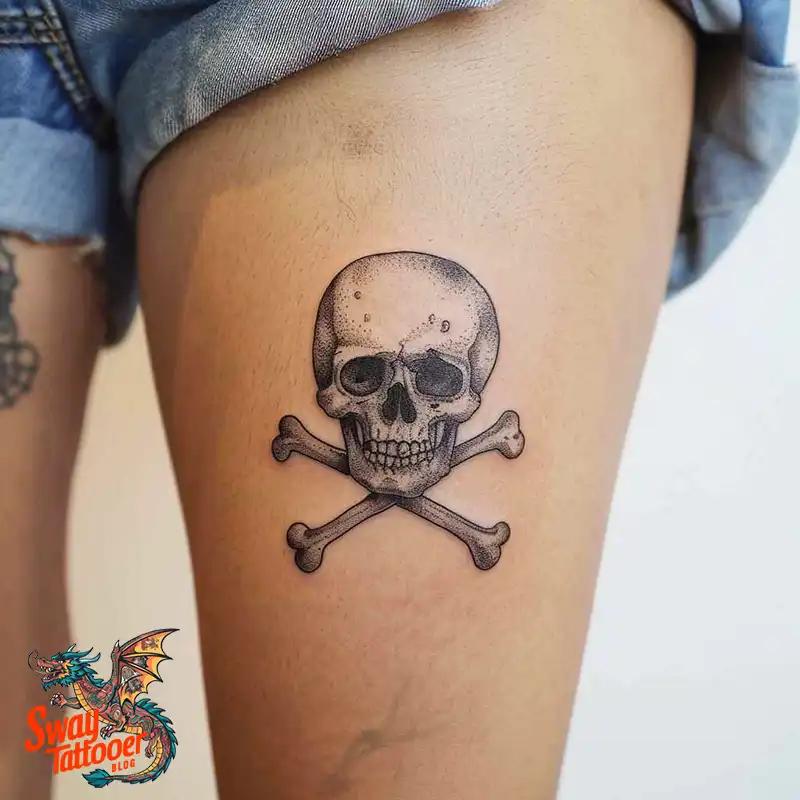
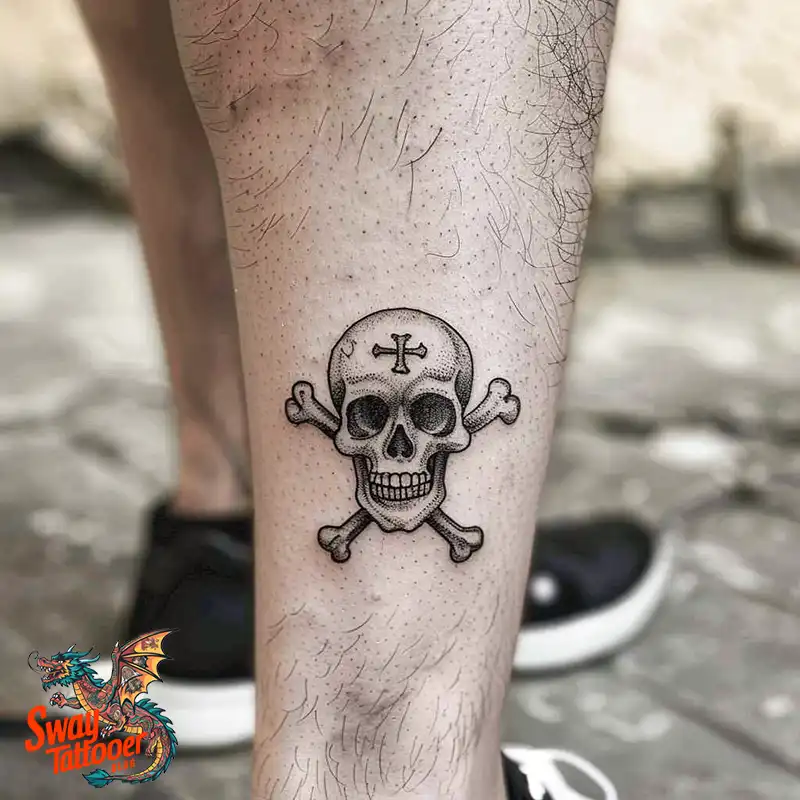
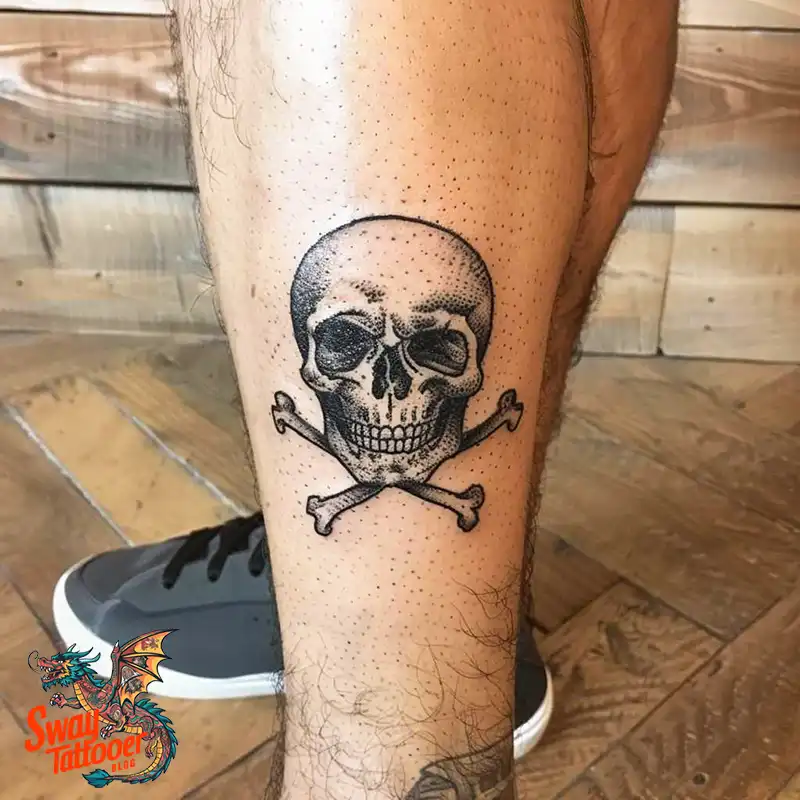
The Allure of Jolly Roger Tattoos:
The Jolly Roger, with its iconic skull and crossbones, has long been a symbol of piracy and rebellion. Over the centuries, this emblem has transcended its nautical origins to become a popular motif in tattoo art. Jolly Roger tattoos are not only a nod to the adventurous spirit of the high seas but also an expression of defiance, freedom, and individuality. In this blog post, we will delve deep into the history, symbolism, and artistry behind Jolly Roger tattoos, providing insights for enthusiasts and curious minds alike.
Historical Background of the Jolly Roger
The term “Jolly Roger” is believed to have originated in the early 18th century, though its exact etymology remains a subject of debate among historians. The image was famously flown by pirate ships to instill fear and signal their intentions to potential targets. Some key points about its history include:
- Pirate Identity: The Jolly Roger was a pirate’s calling card, used to distinguish themselves from other maritime threats like privateers or navy ships.
- Psychological Warfare: The flag’s menacing imagery played a critical role in psychological warfare, often leading ships to surrender without a fight.
- Variations: While the classic skull and crossbones is the most recognized, other variations included hourglasses, spears, and bleeding hearts, each with its own sinister connotations.
Symbolism Behind Jolly Roger Tattoos
Rebellion and Defiance
Jolly Roger tattoos are often chosen by individuals with a rebellious streak. The symbol captures the essence of defiance against societal norms and an embrace of one’s own path. Some aspects include:
- Individualism: The tattoo is a statement of personal freedom and non-conformity.
- Anti-Establishment: It can signify a stand against authority and the status quo.
- Courage: The boldness of pirates resonates with those who wish to showcase their bravery and adventurous spirit.
Mortality and Memento Mori
The skull and crossbones are also a stark reminder of mortality, evoking the concept of “memento mori” – a Latin phrase meaning “remember you must die.” For many, this serves as a powerful reminder to live life fully and authentically.
- Life’s Transience: A recognition of the fleeting nature of life.
- Carpe Diem: An encouragement to seize the day and make the most of every moment.
- Acceptance: Embracing death as a part of life’s journey.
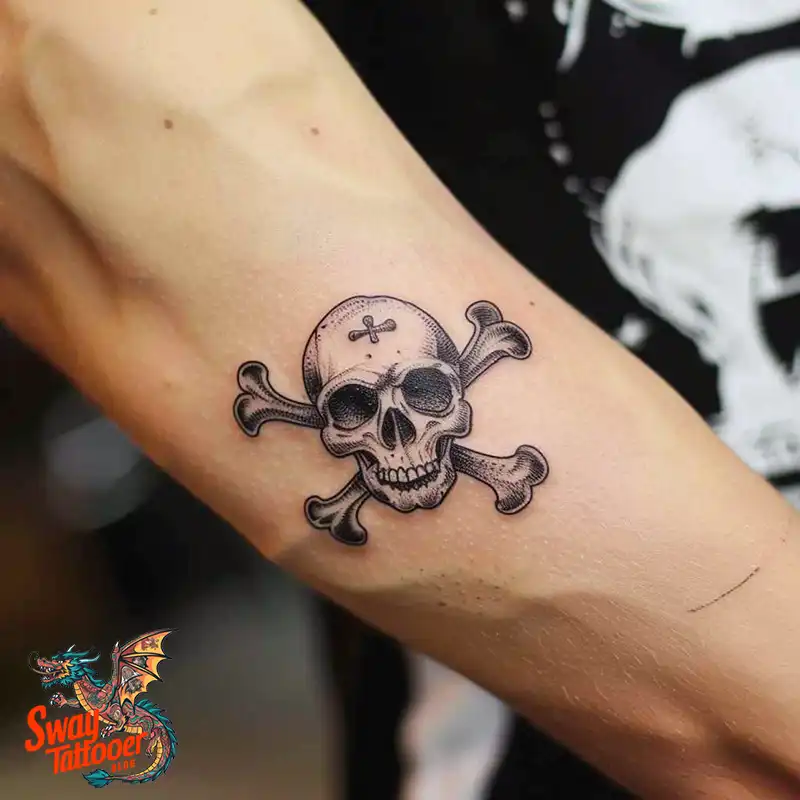
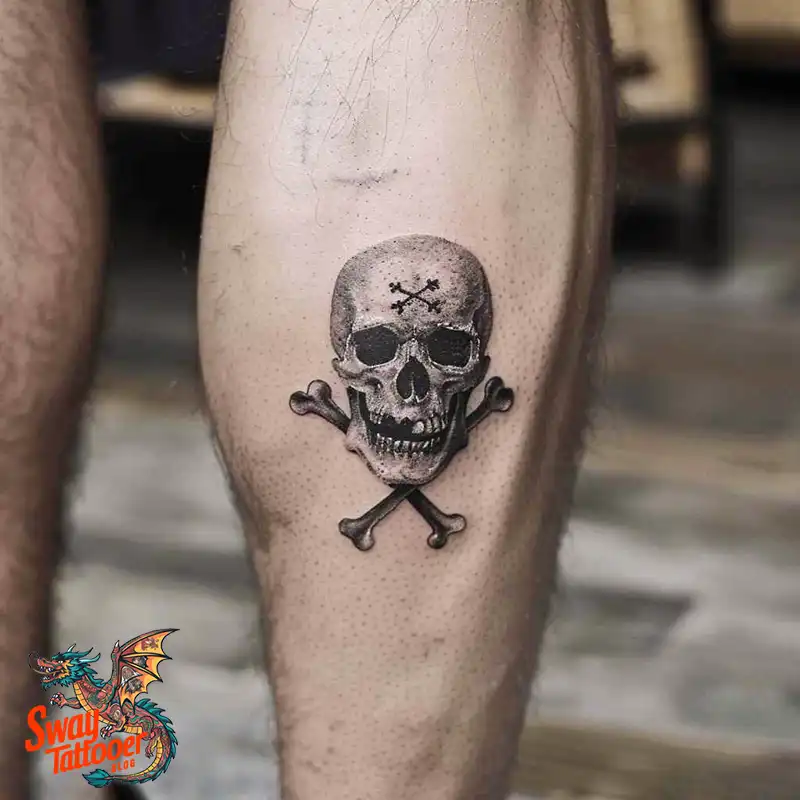
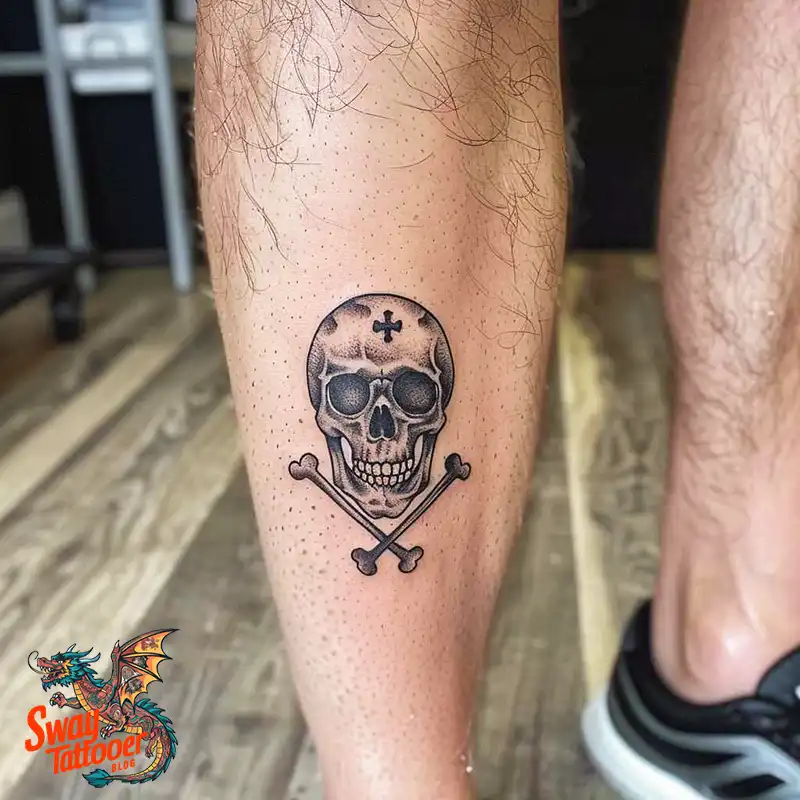
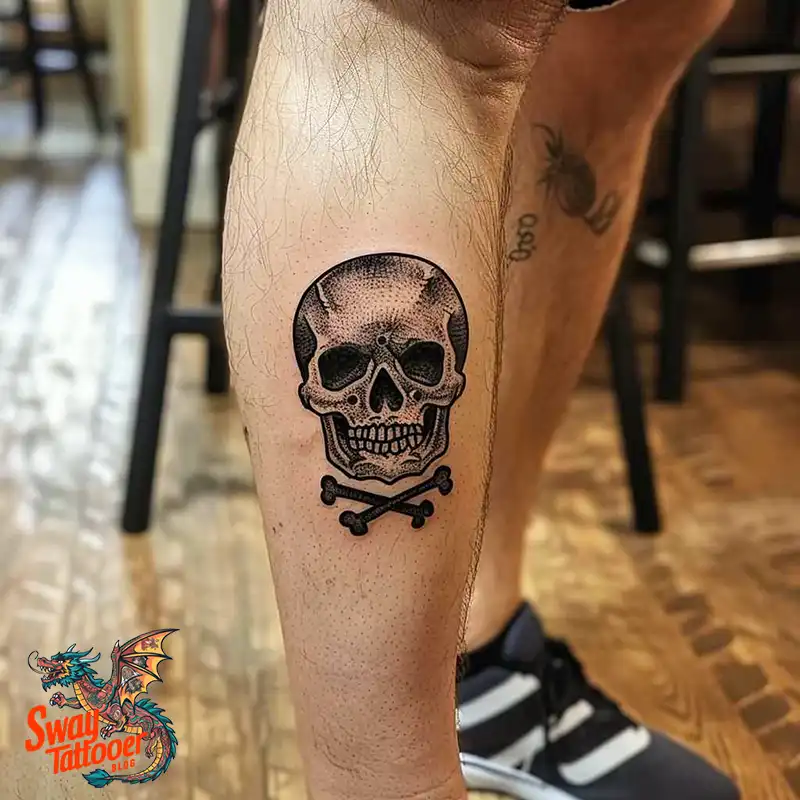
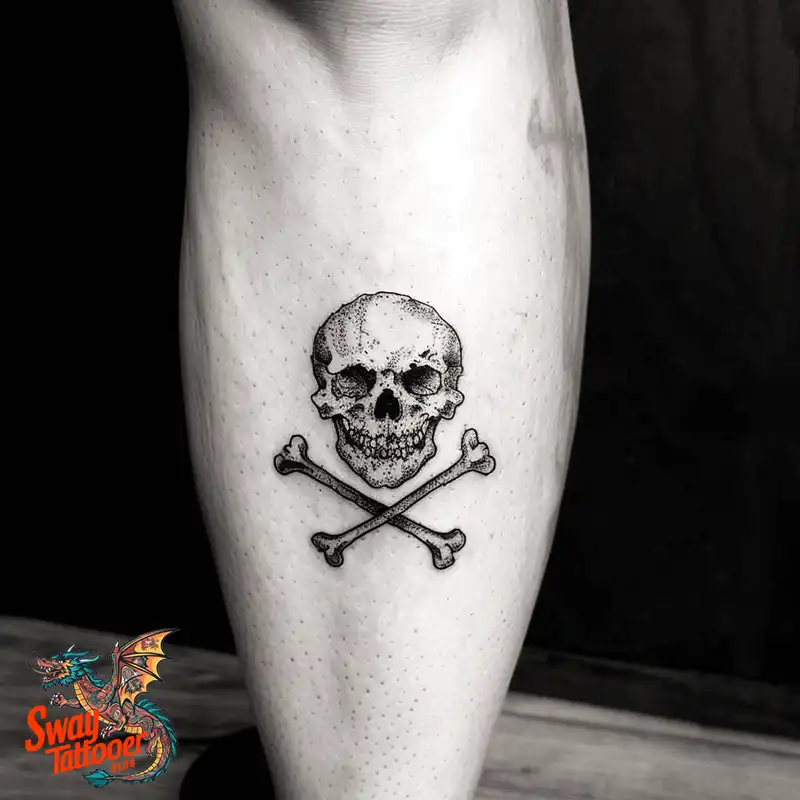
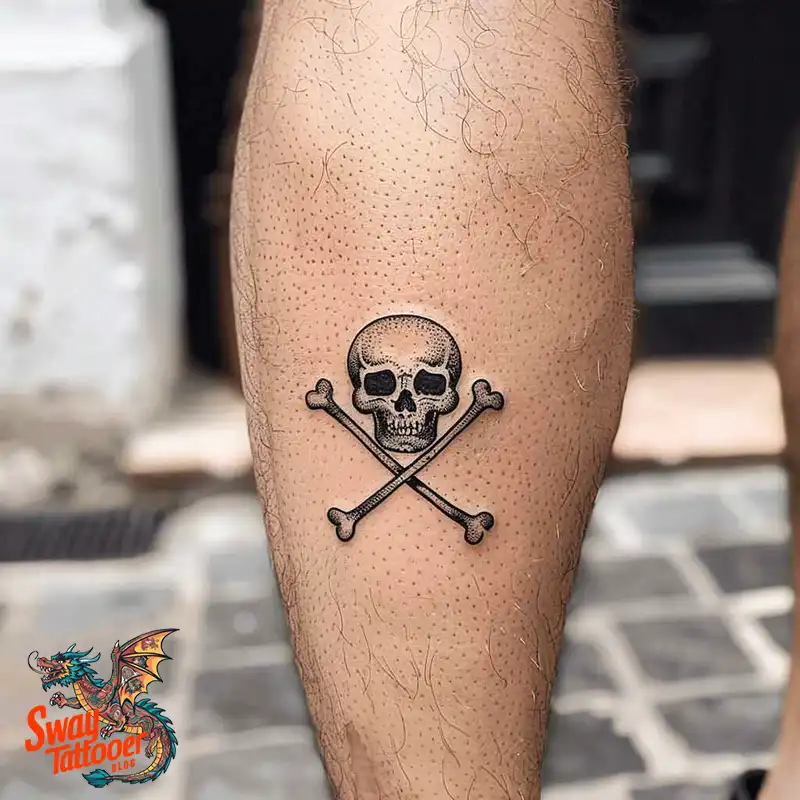
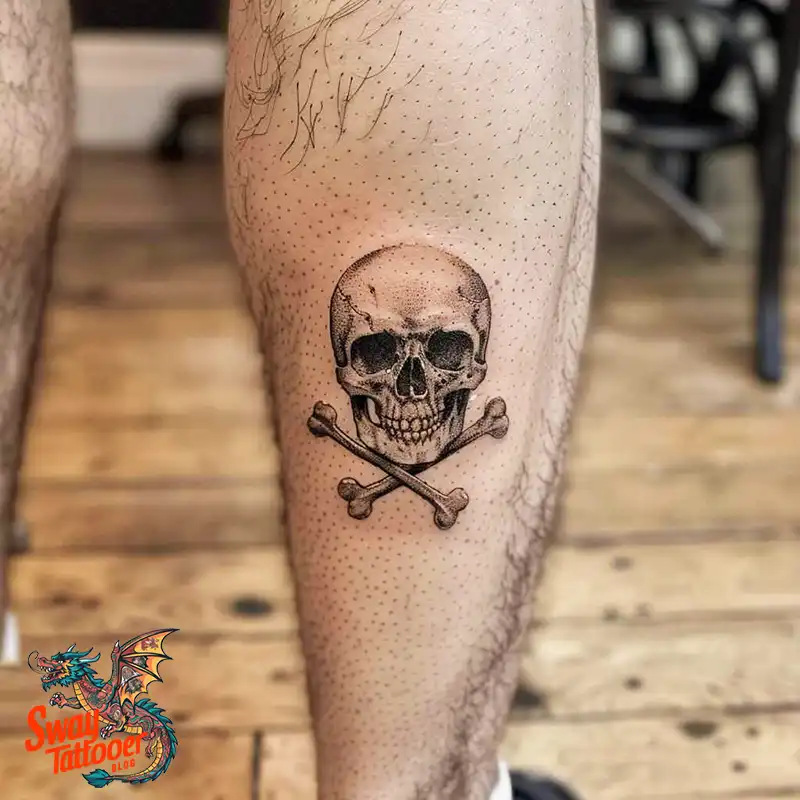
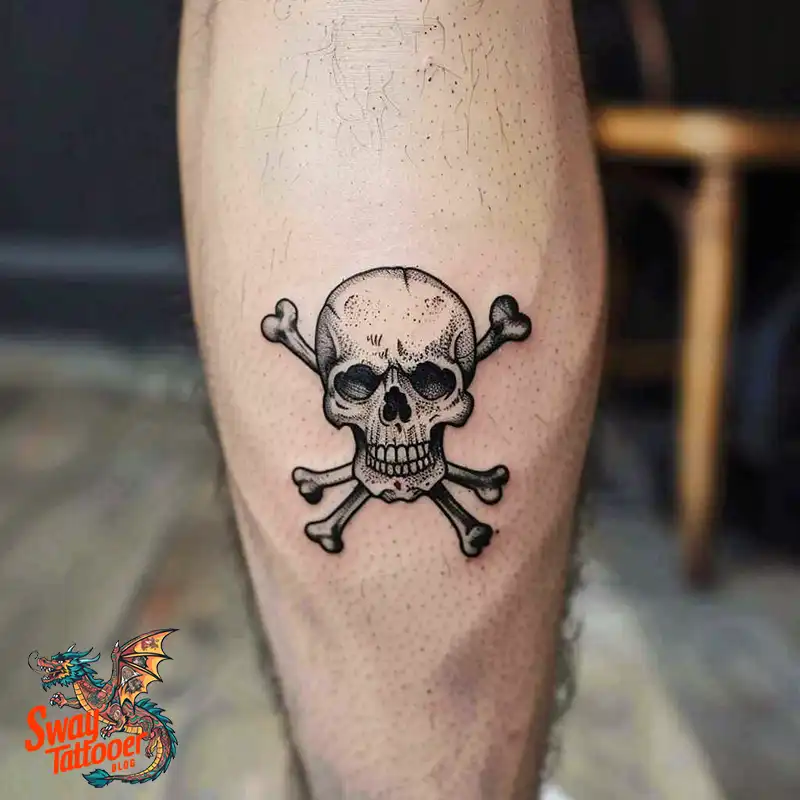
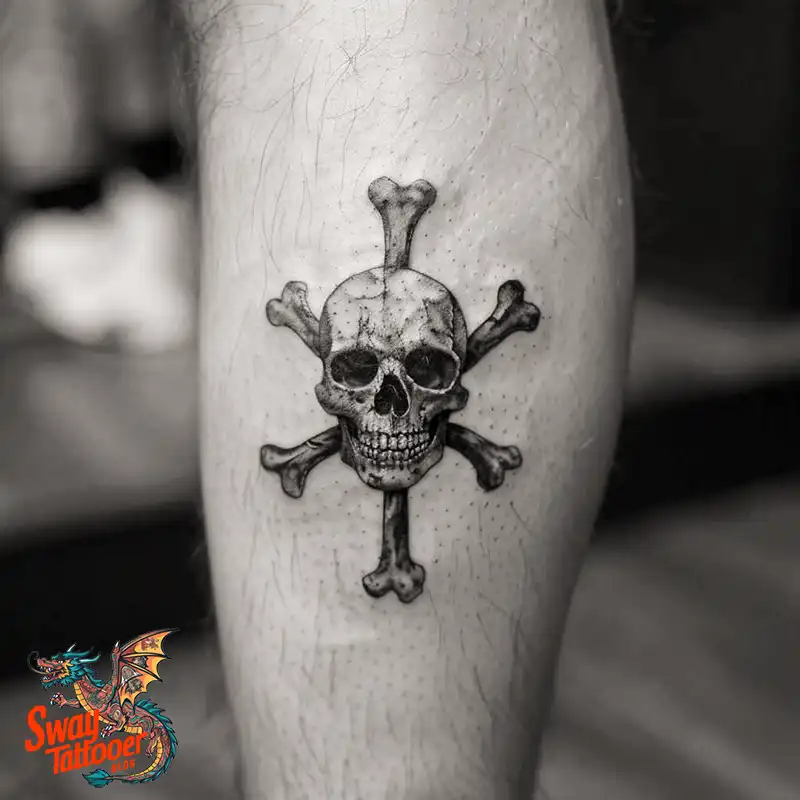
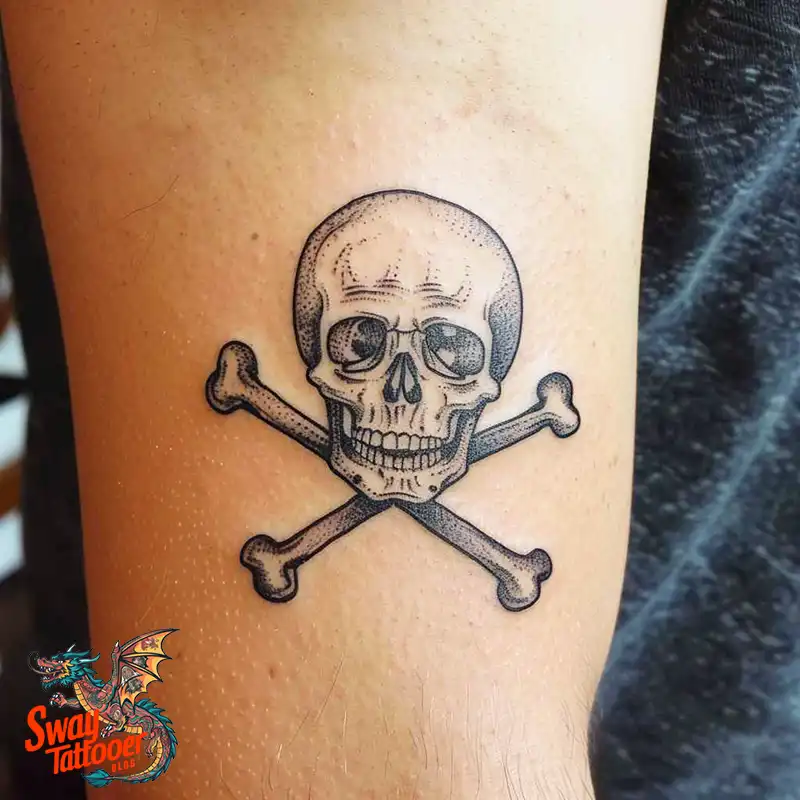
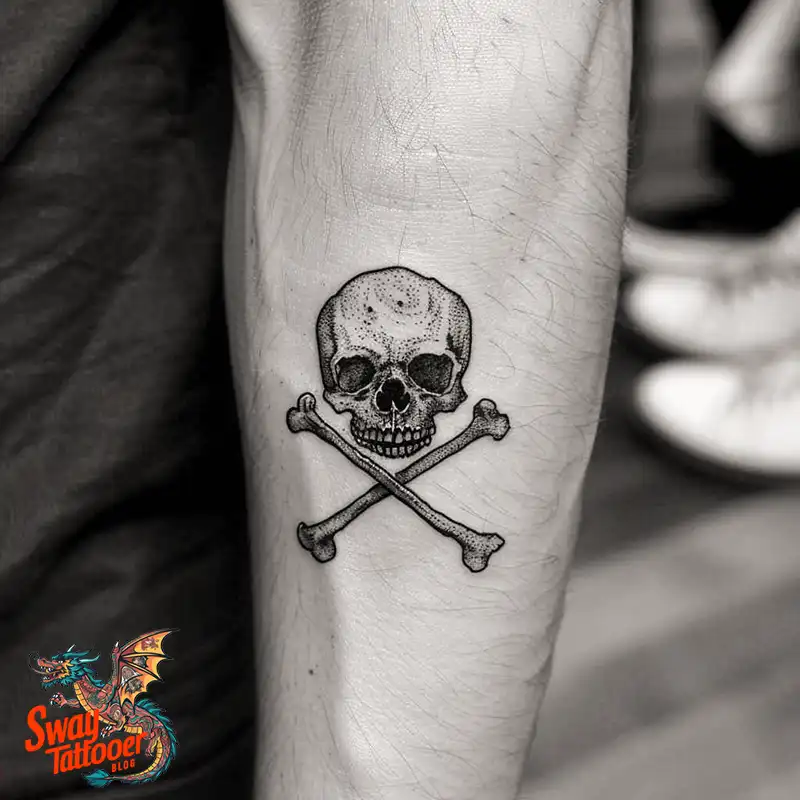
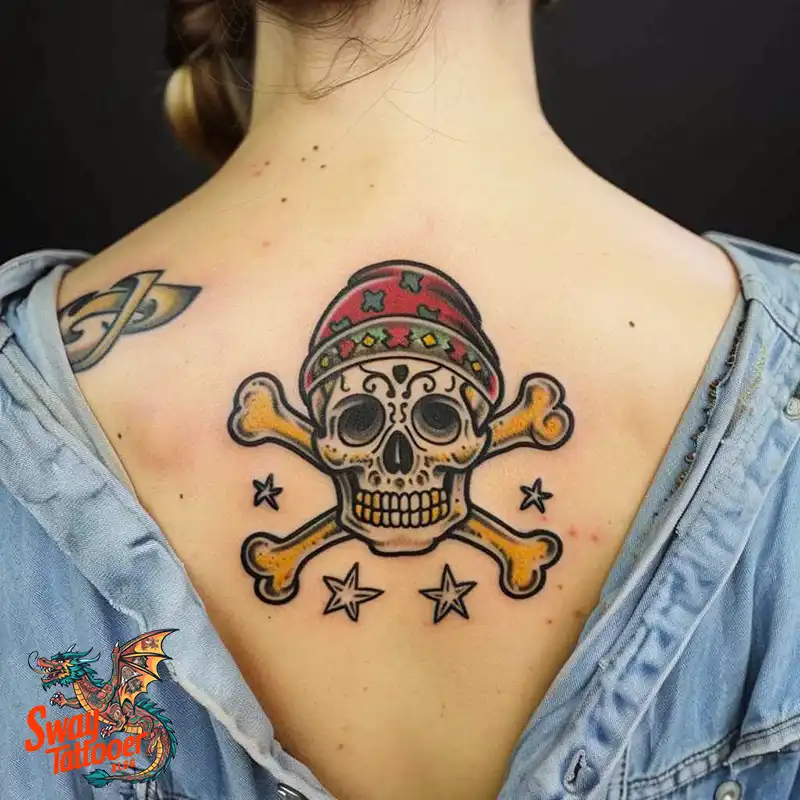
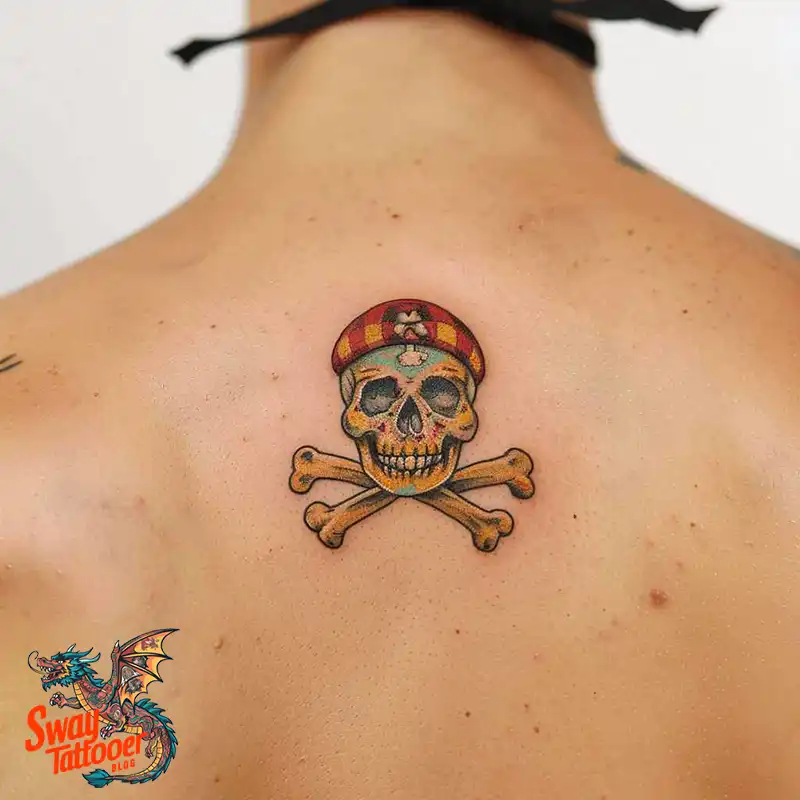
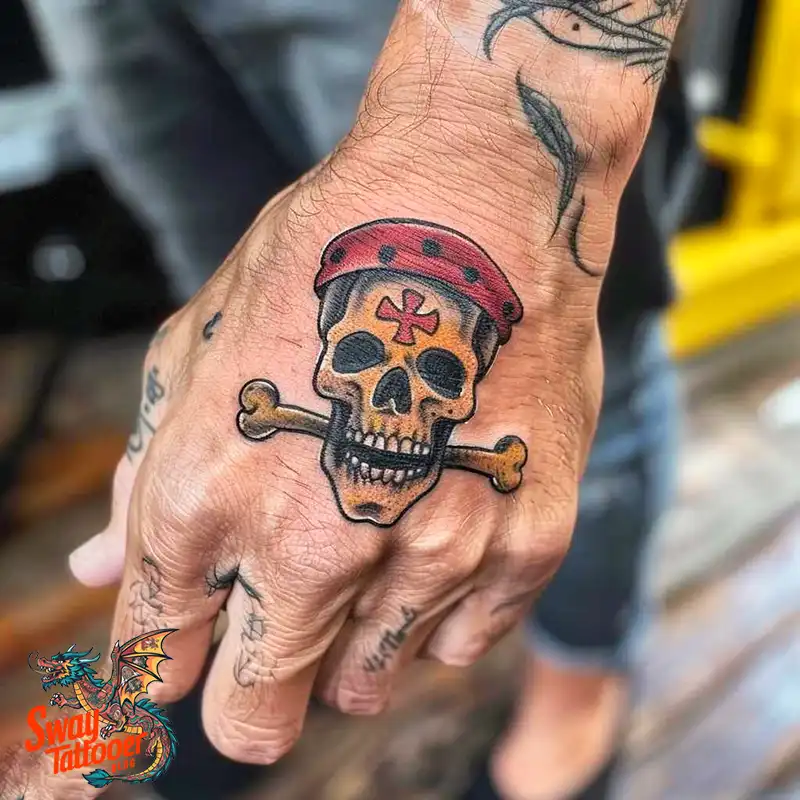
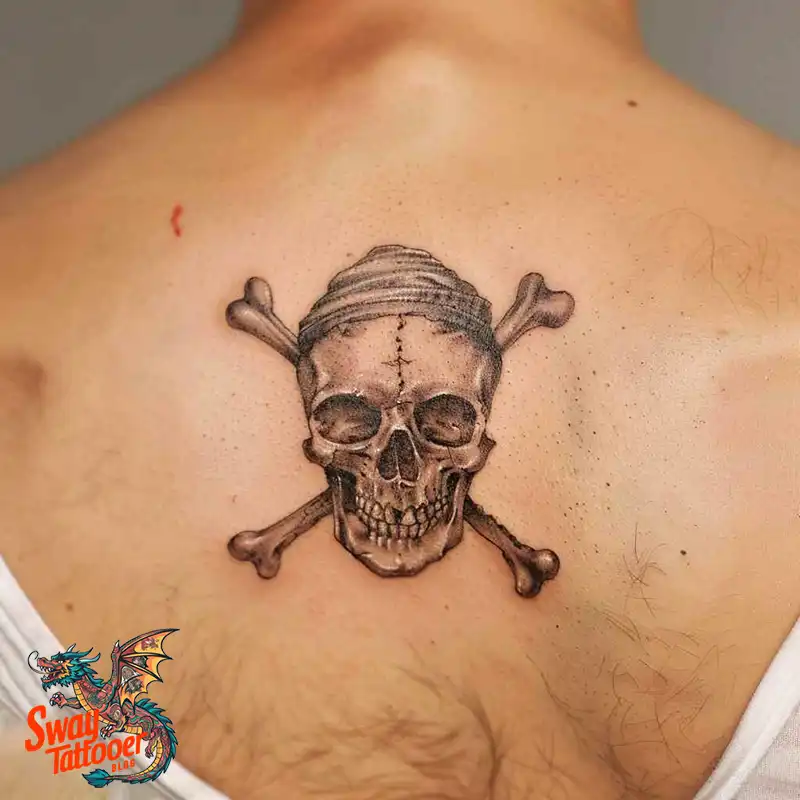
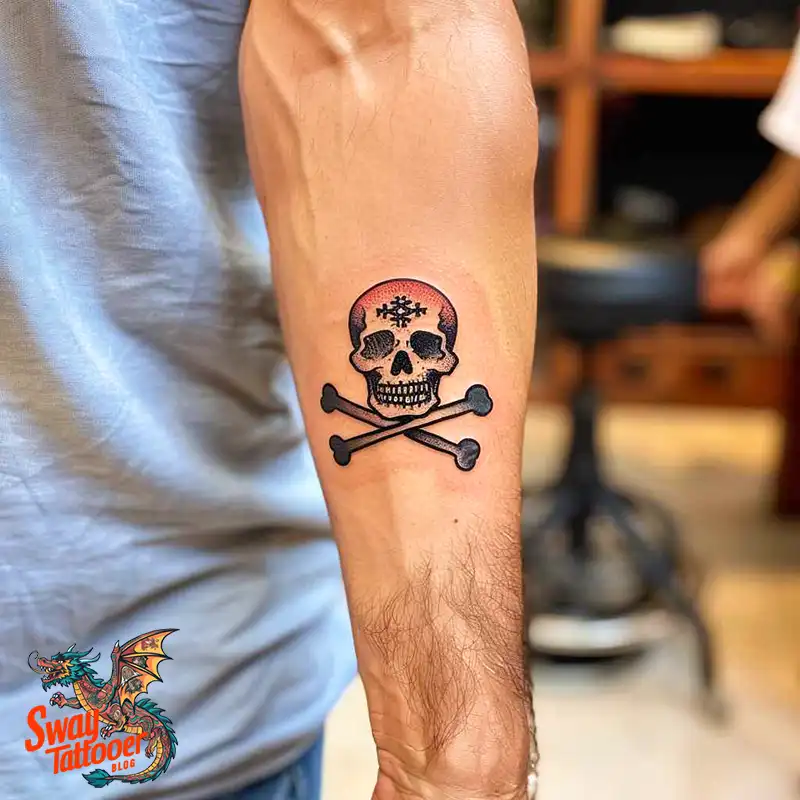
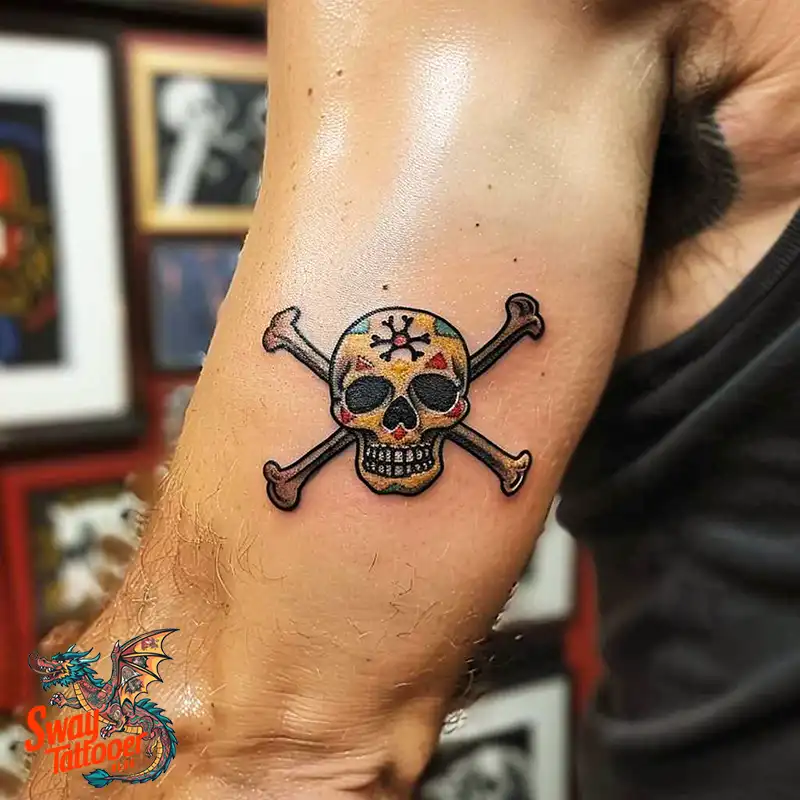
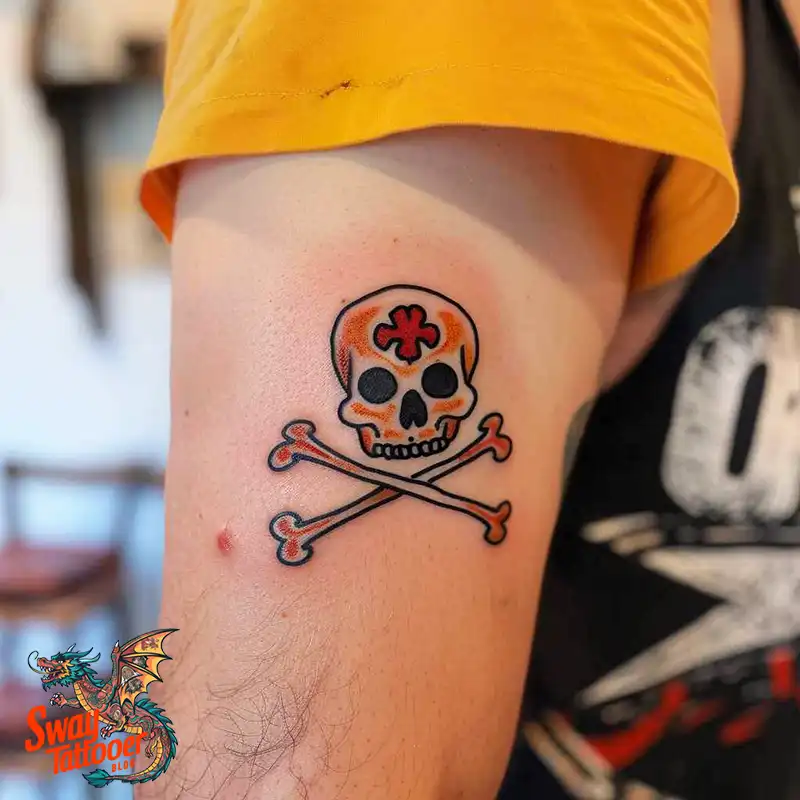
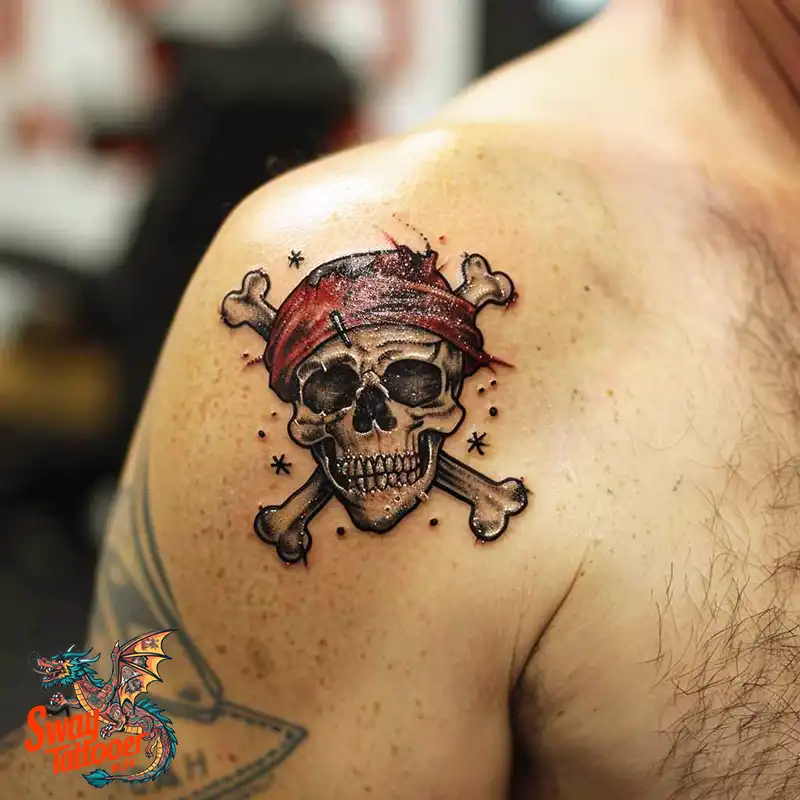
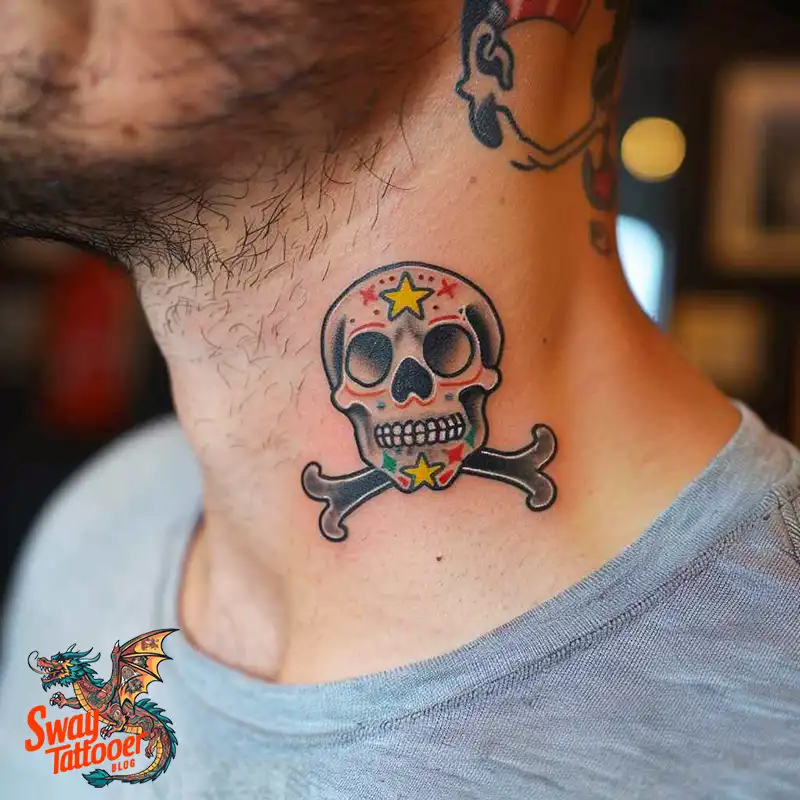
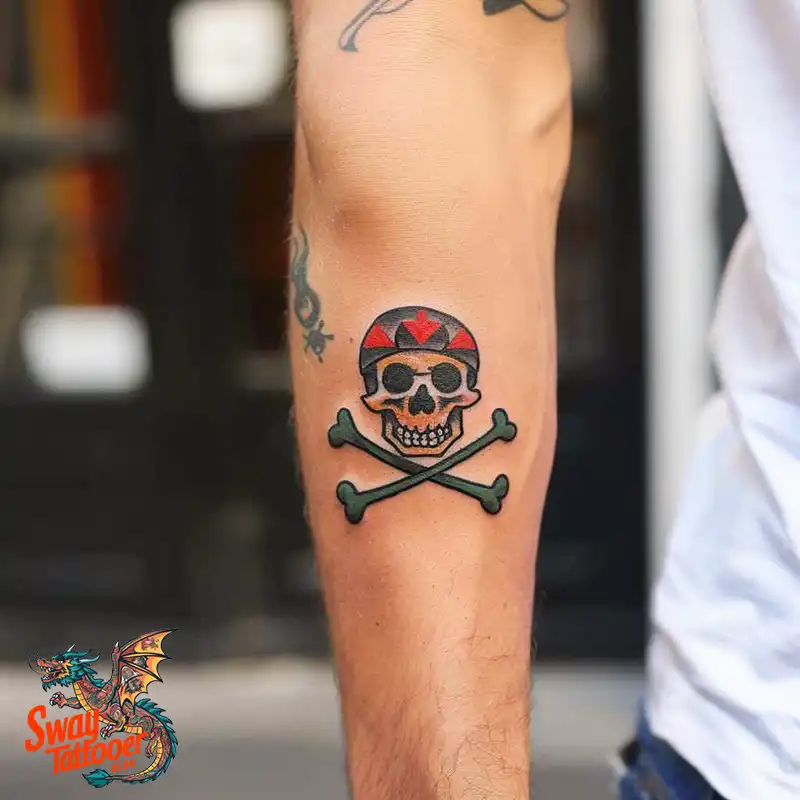
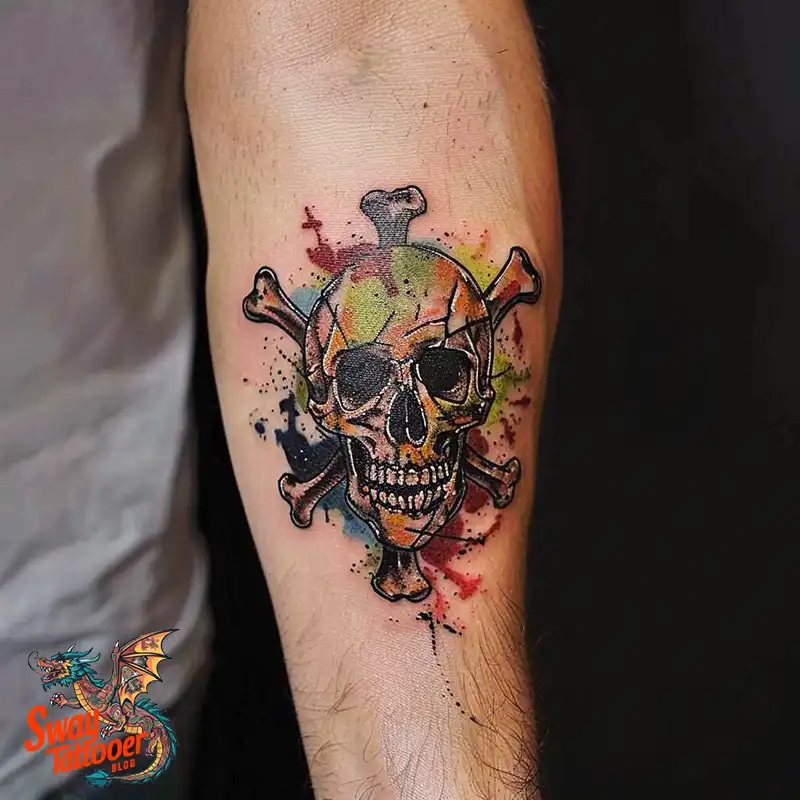
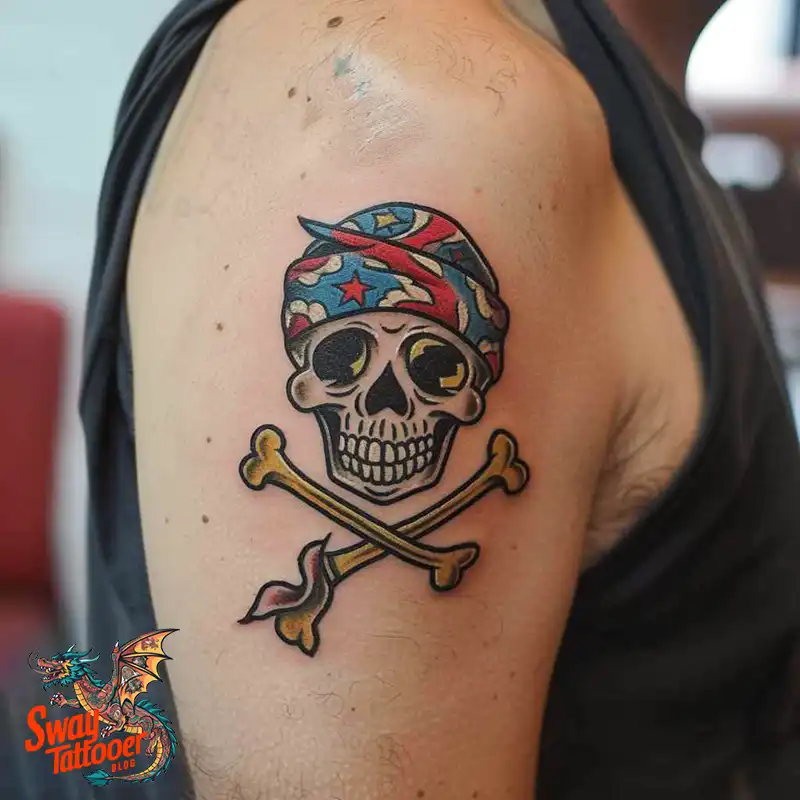
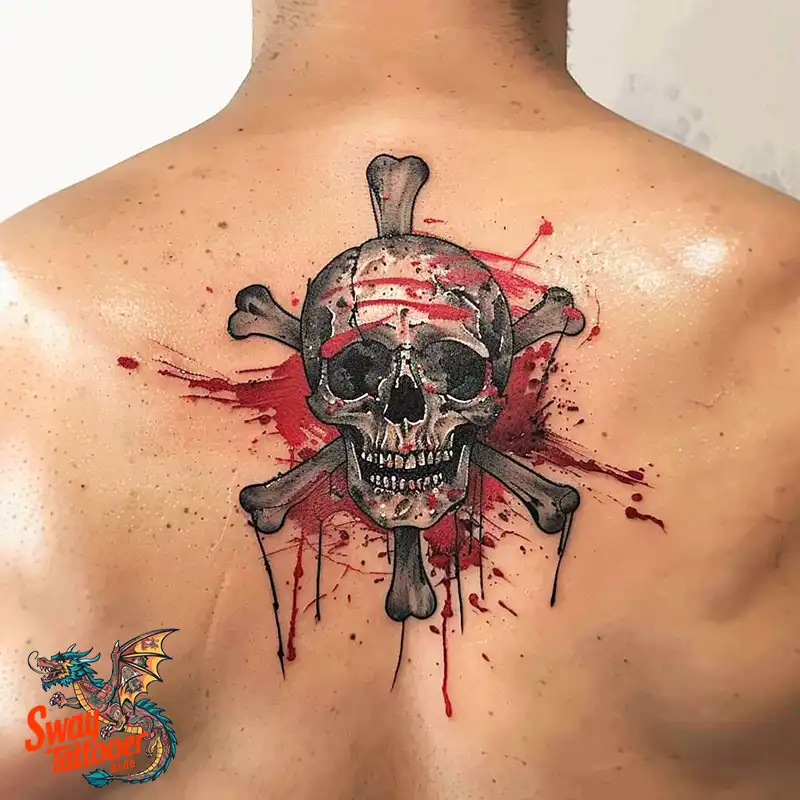
Popular Styles and Variations in Jolly Roger Tattoos
Jolly Roger tattoos can be rendered in a multitude of artistic styles, each adding a unique flavor to the classic motif. Here are some popular variations:
Traditional Style
- Bold Lines and Colors: Characterized by thick outlines and a limited color palette, often including black, red, and white.
- Nautical Themes: Incorporates other maritime elements like ships, anchors, and waves.
Realistic Style
- Detailed Shading: Focuses on creating a lifelike representation of the skull and crossbones.
- High Contrast: Utilizes light and shadow to add depth and dimension.
Neo-Traditional Style
- Modern Twist: Combines traditional elements with contemporary techniques.
- Rich Colors: Uses a broader spectrum of vibrant colors and intricate details.
Minimalistic Style
- Simplicity: Strips down to the basic elements, often using just black ink.
- Subtlety: Ideal for those who prefer a more understated look.
Placement Ideas and Considerations
Choosing the right placement for a Jolly Roger tattoo is crucial for both aesthetic and symbolic reasons. Here are some popular spots:
- Forearm: Offers visibility and space for detailed designs.
- Chest: Symbolically close to the heart, signifying deep personal meaning.
- Back: Provides a large canvas for expansive and elaborate designs.
- Calf: Ideal for medium-sized tattoos and easy to conceal if needed.
Care and Maintenance of Jolly Roger Tattoos
Ensuring your Jolly Roger tattoo remains vibrant and sharp involves proper aftercare and maintenance. Here are some tips:
- Initial Care: Follow your tattoo artist’s instructions, typically involving keeping the tattoo clean, moisturized, and protected from the sun.
- Long-Term Care: Regularly apply sunscreen to prevent fading and keep the skin hydrated.
- Touch-Ups: Be open to periodic touch-ups to maintain the tattoo’s clarity and color.
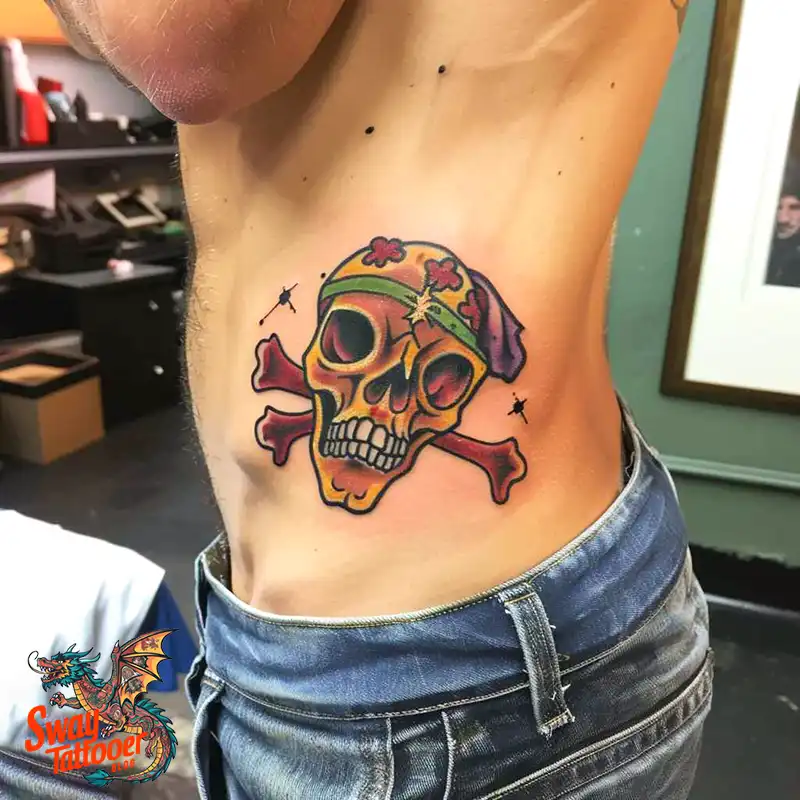
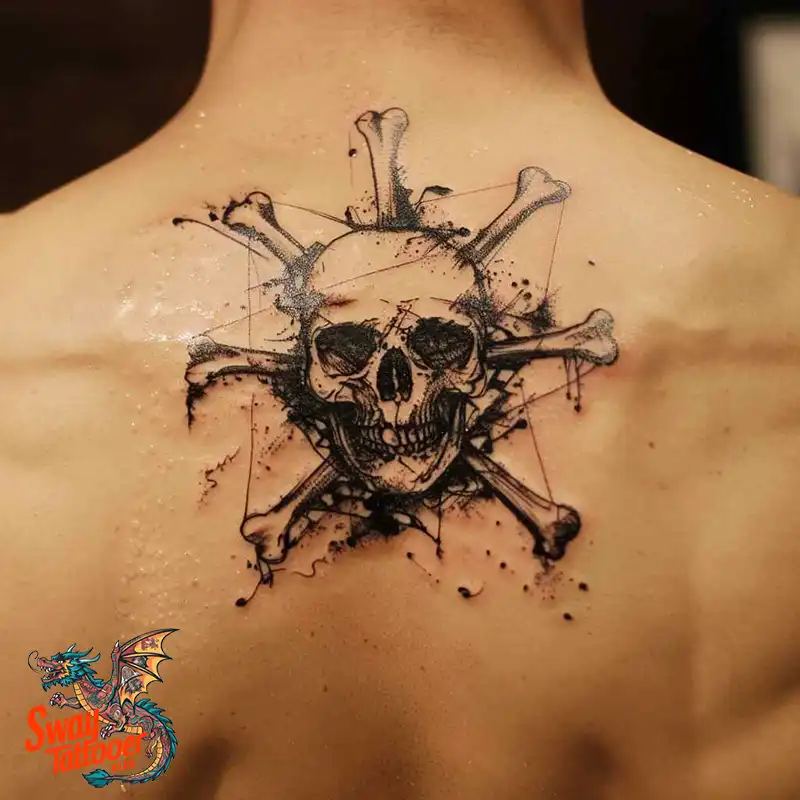
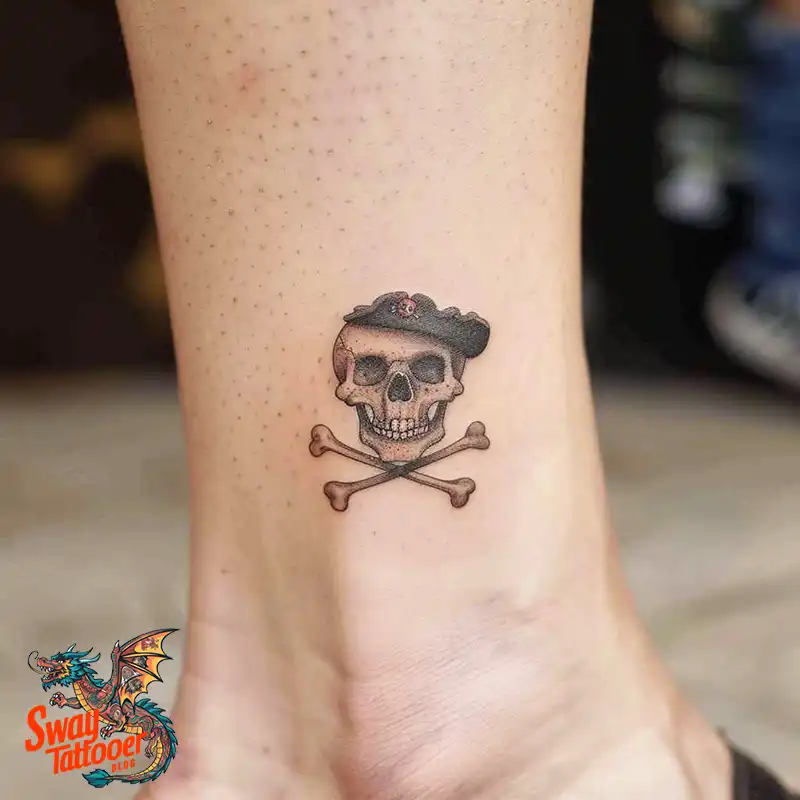
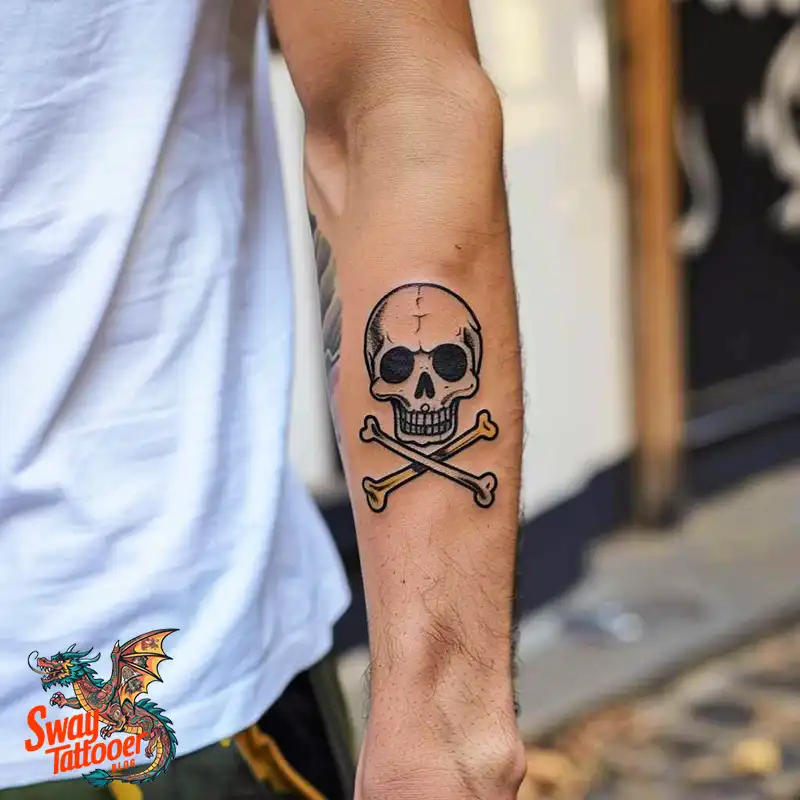
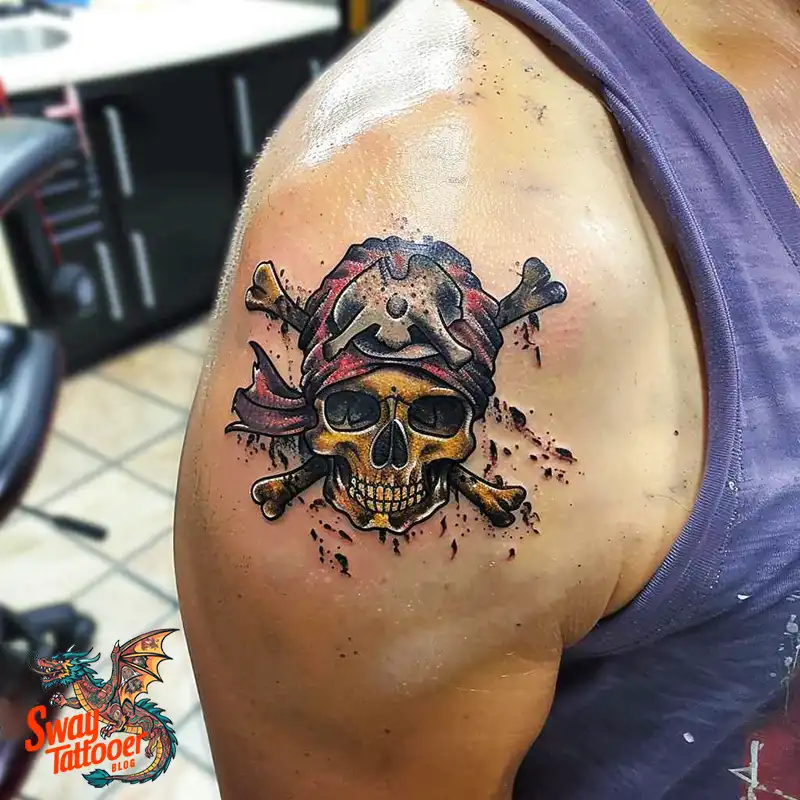
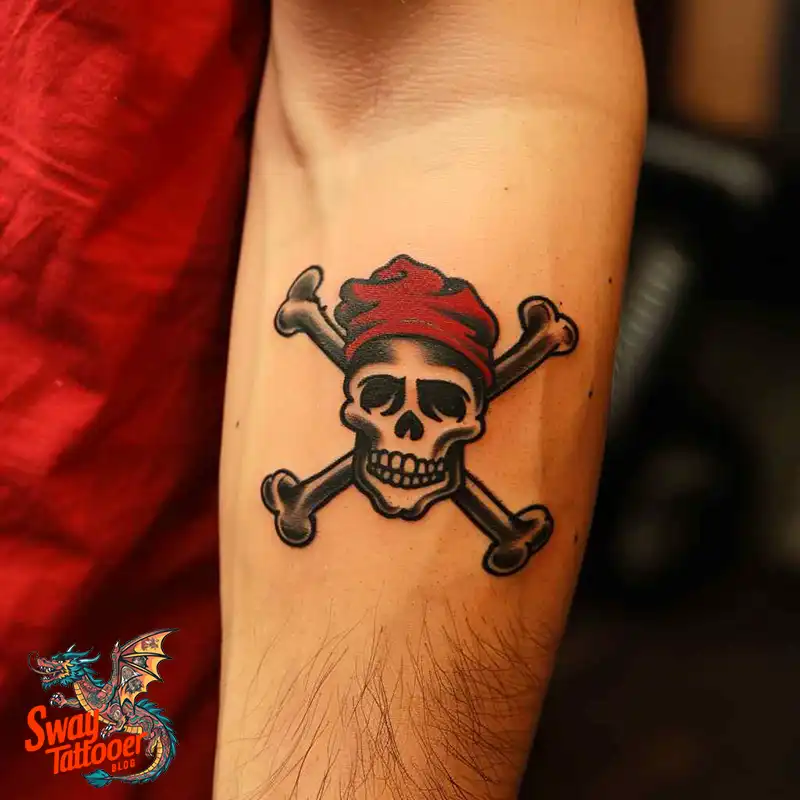
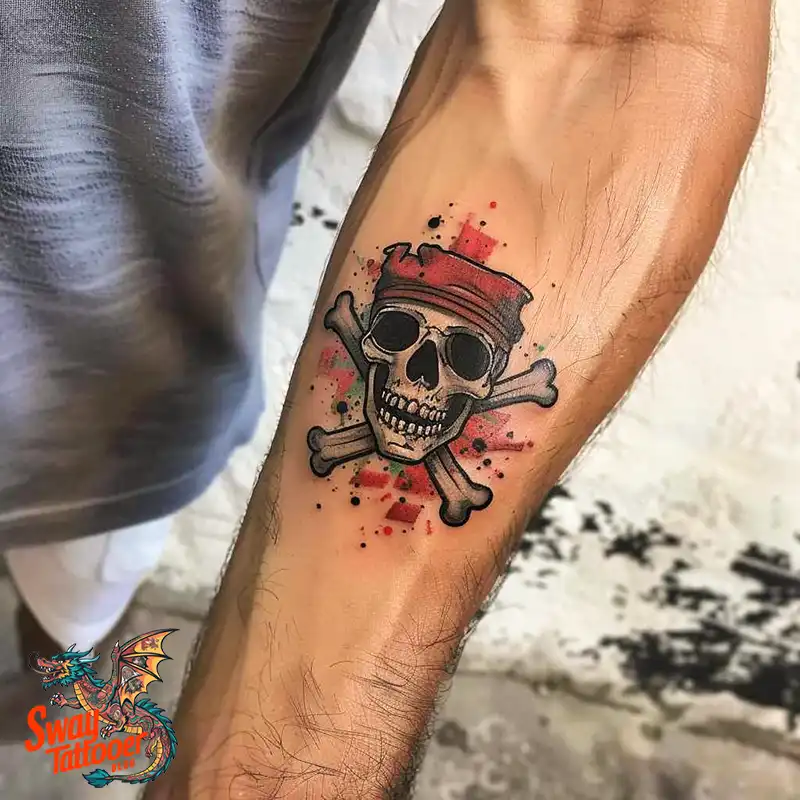
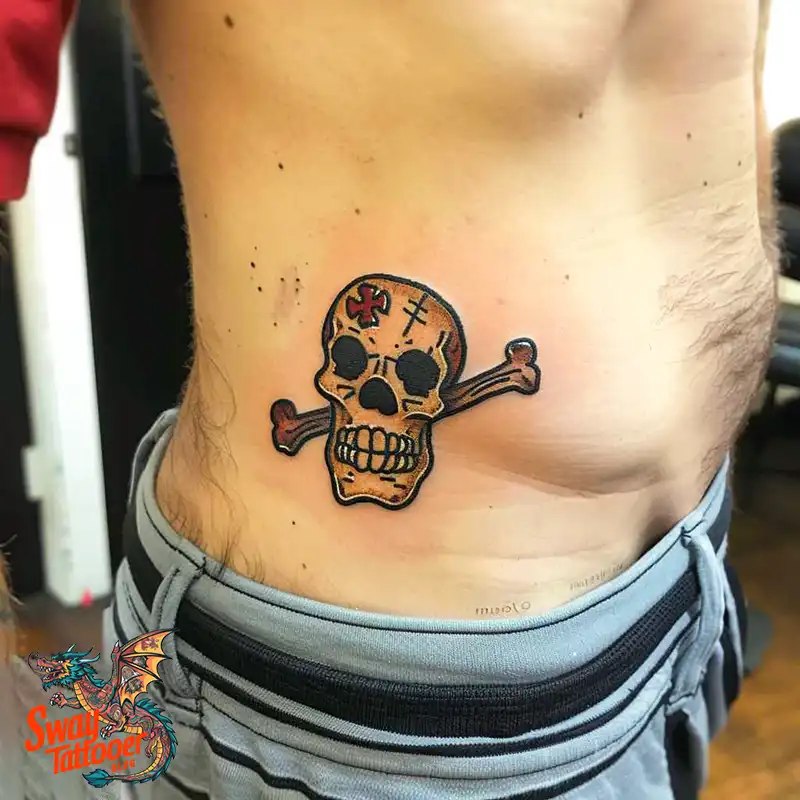
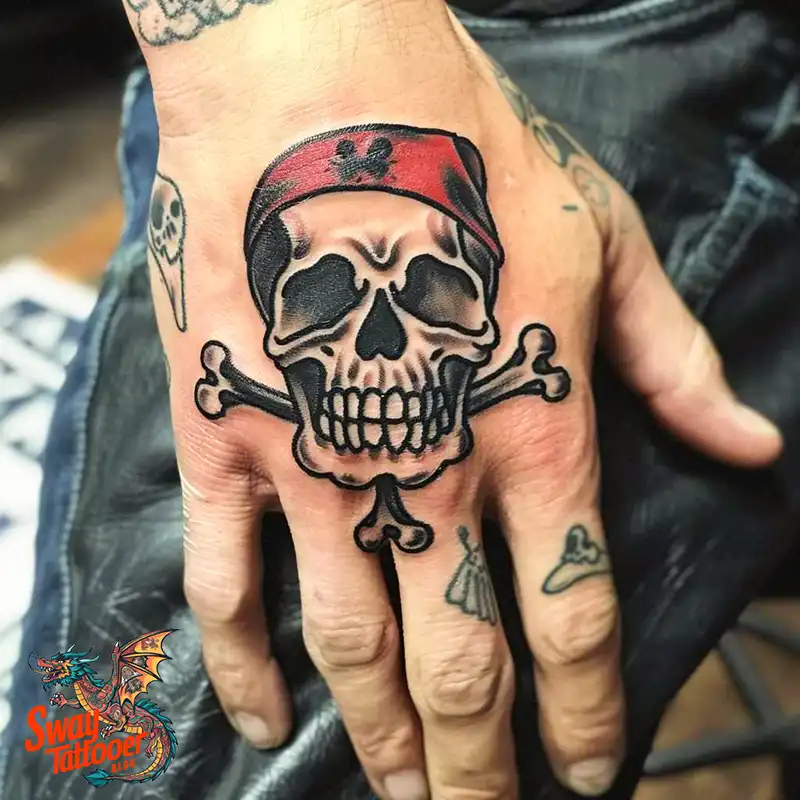
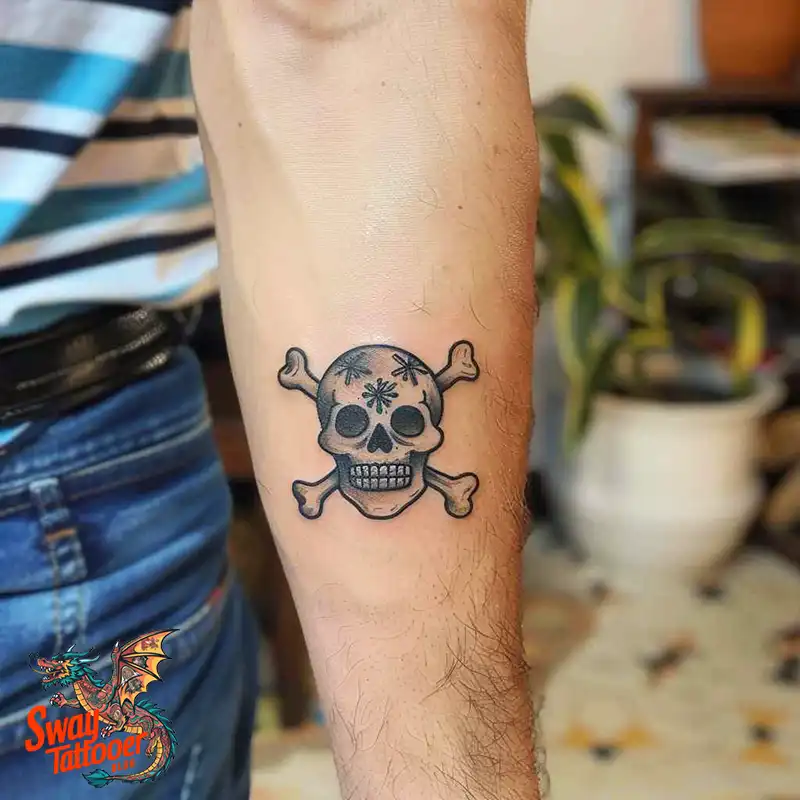
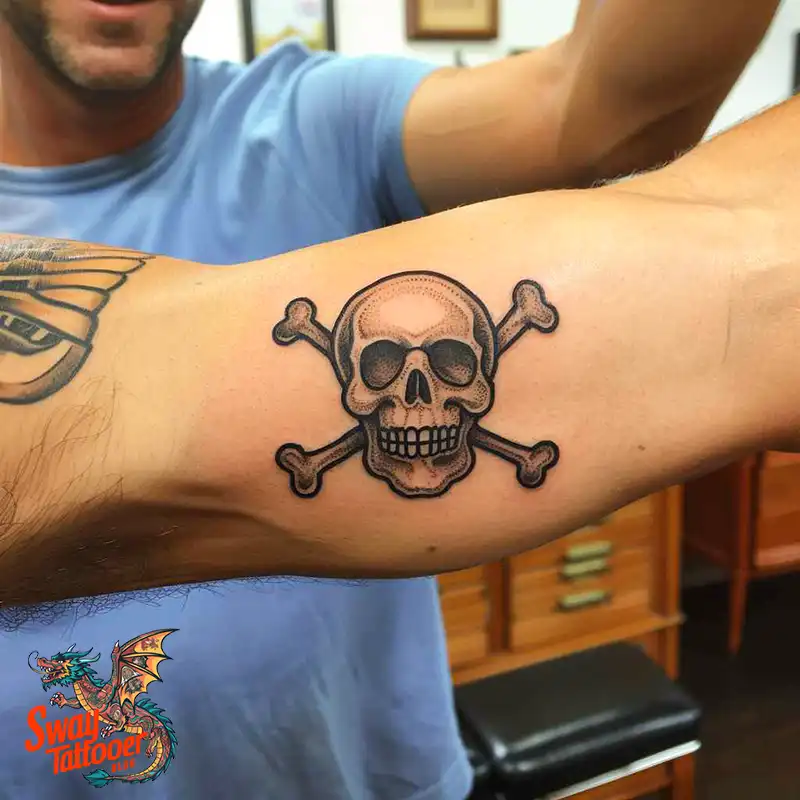
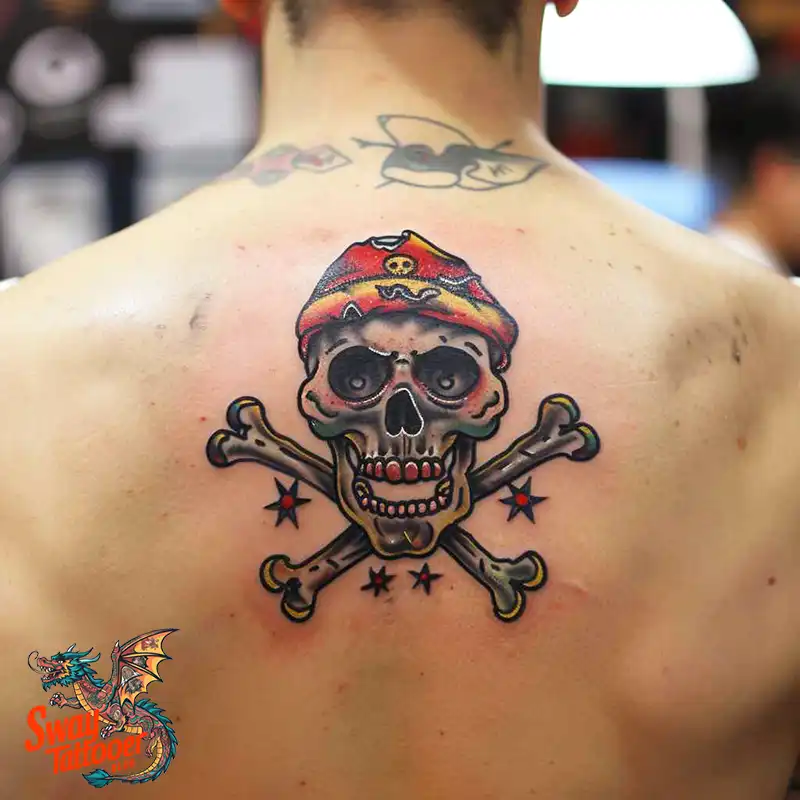
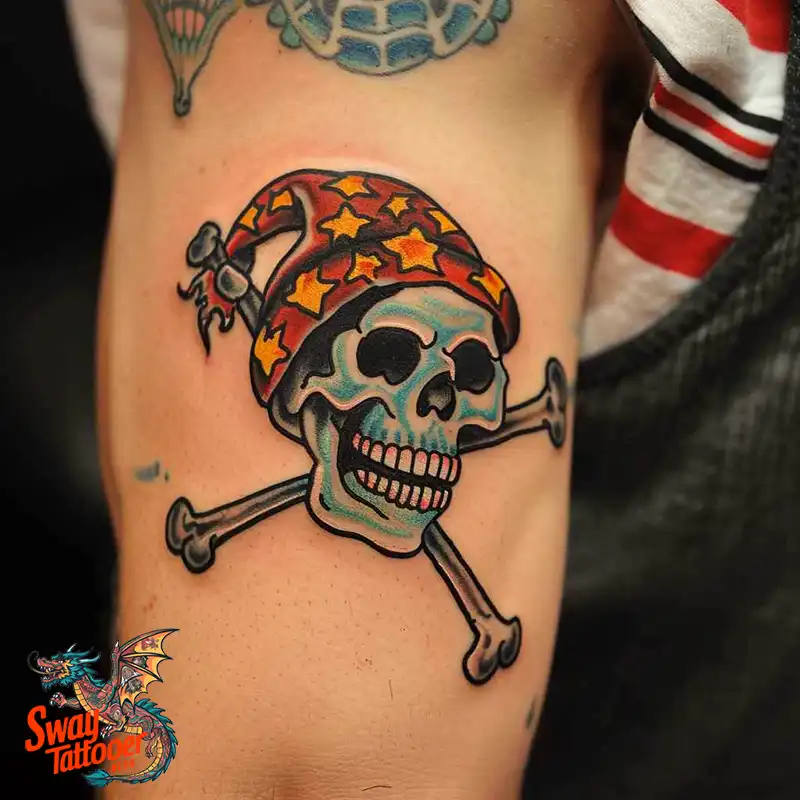
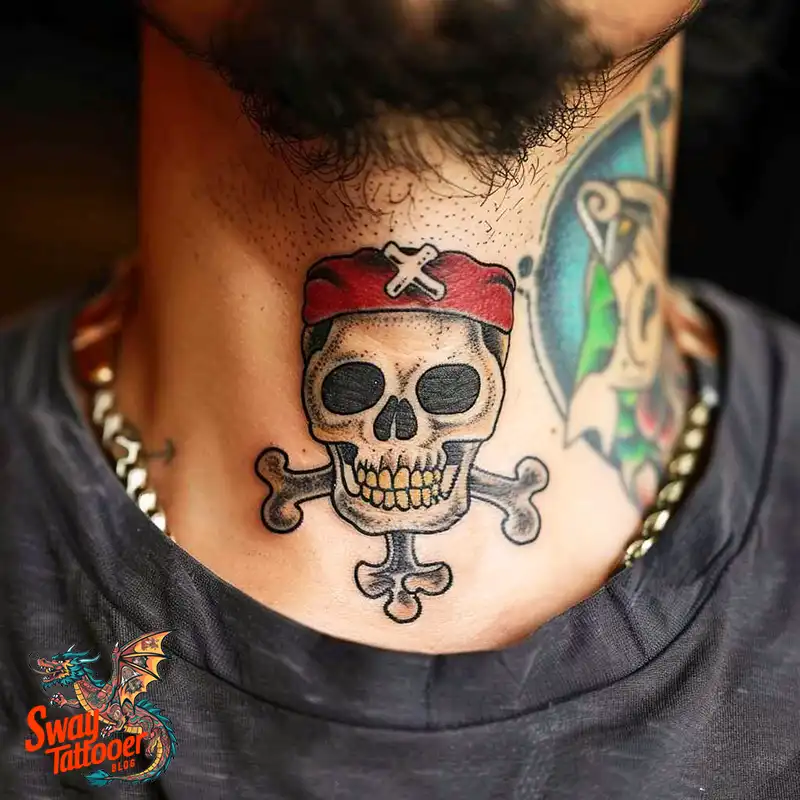
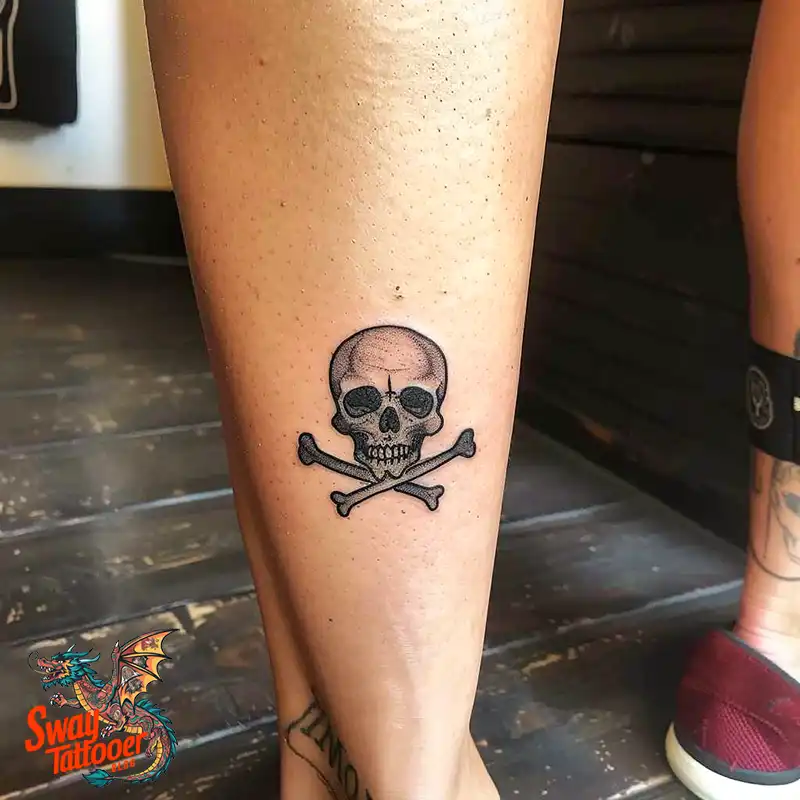
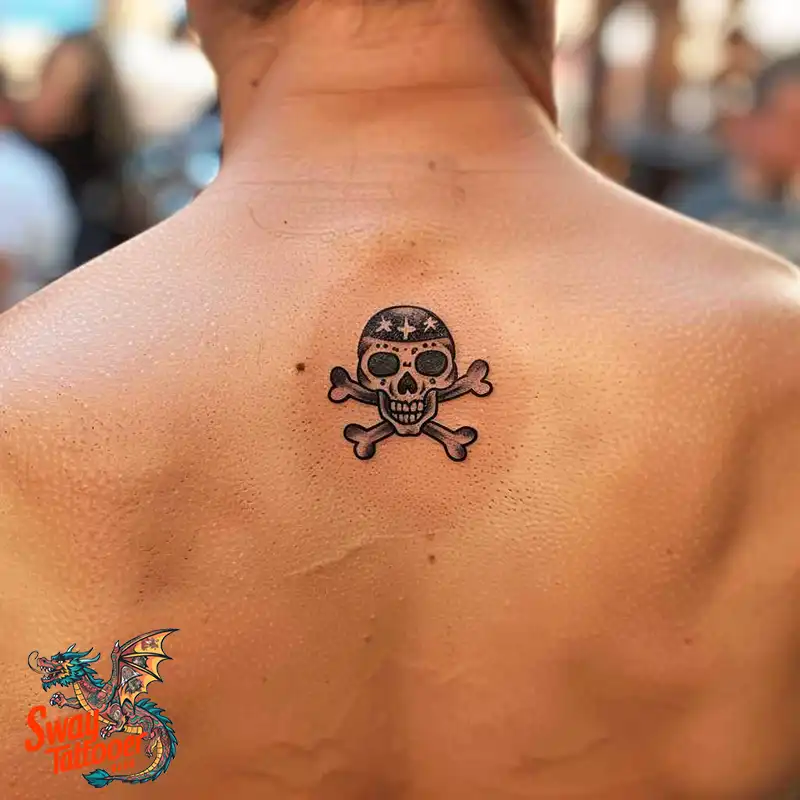
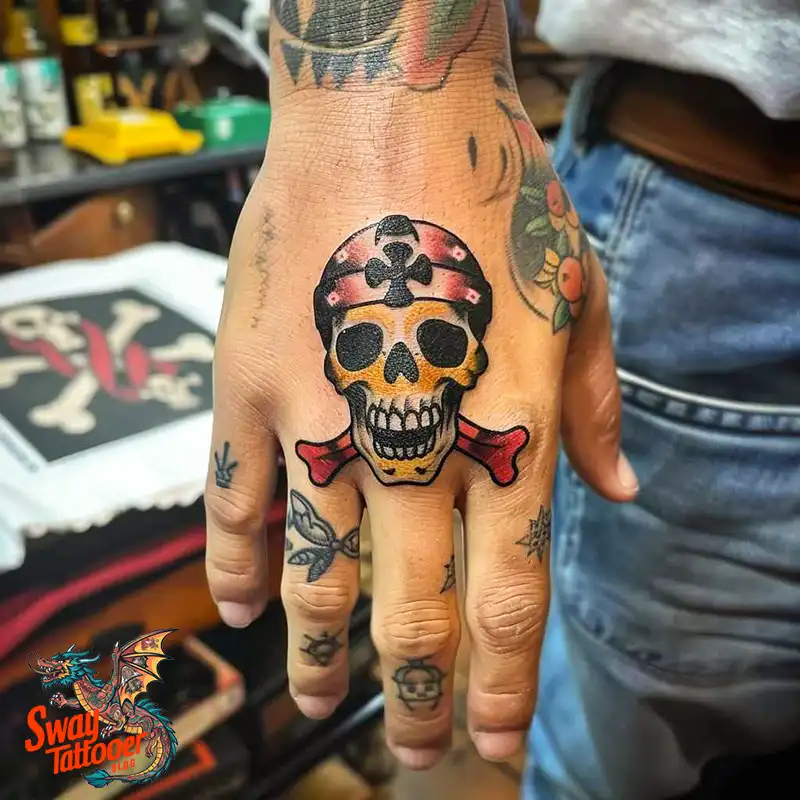
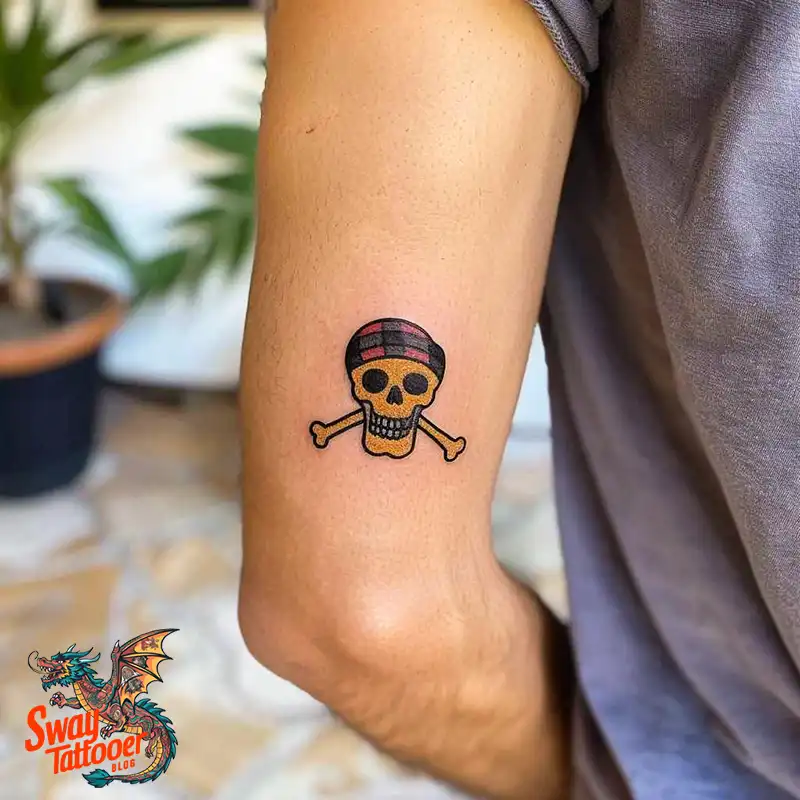
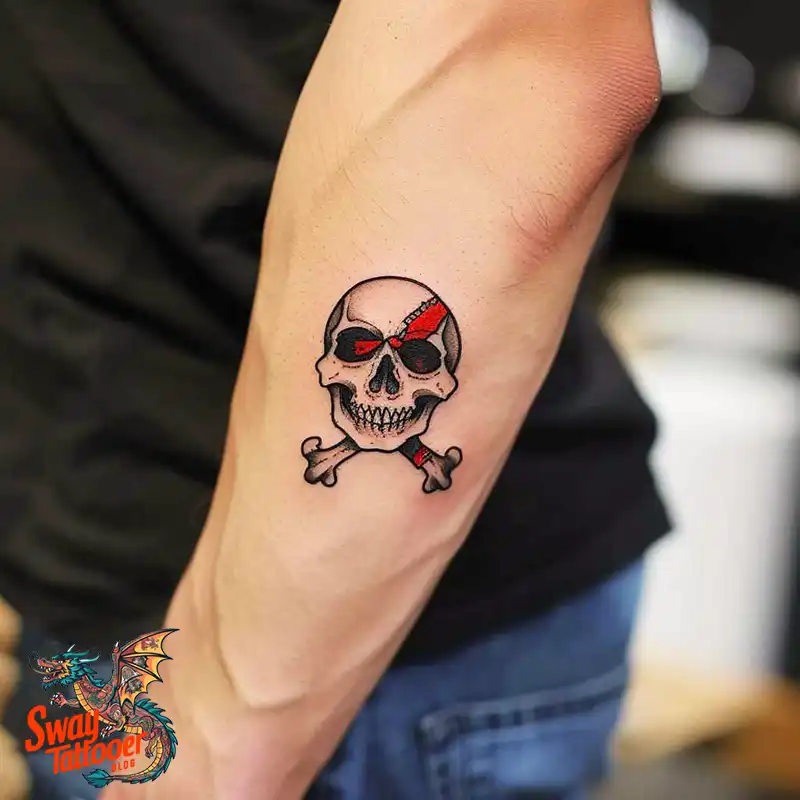
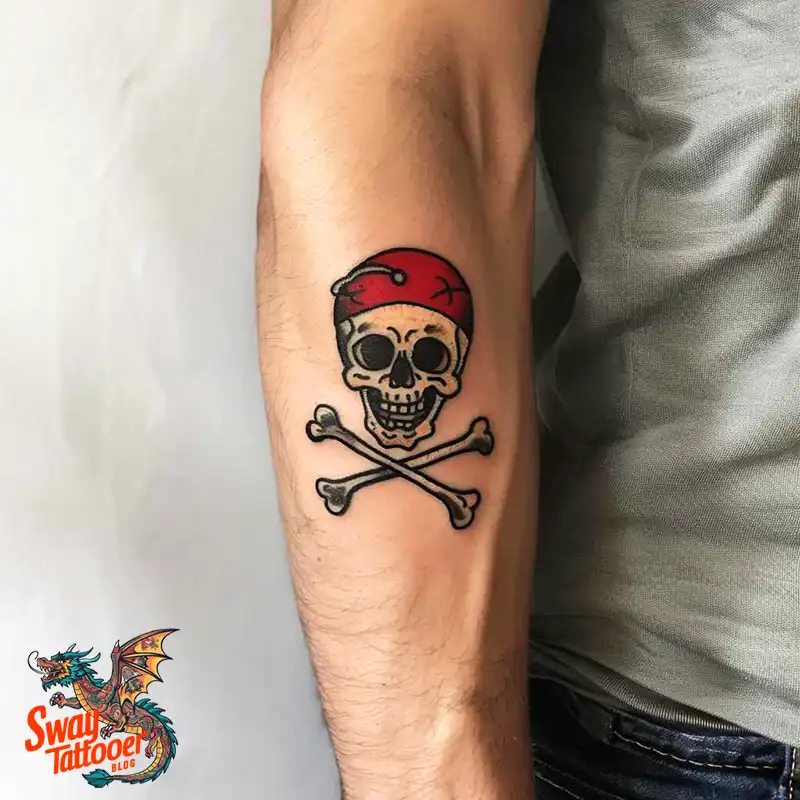
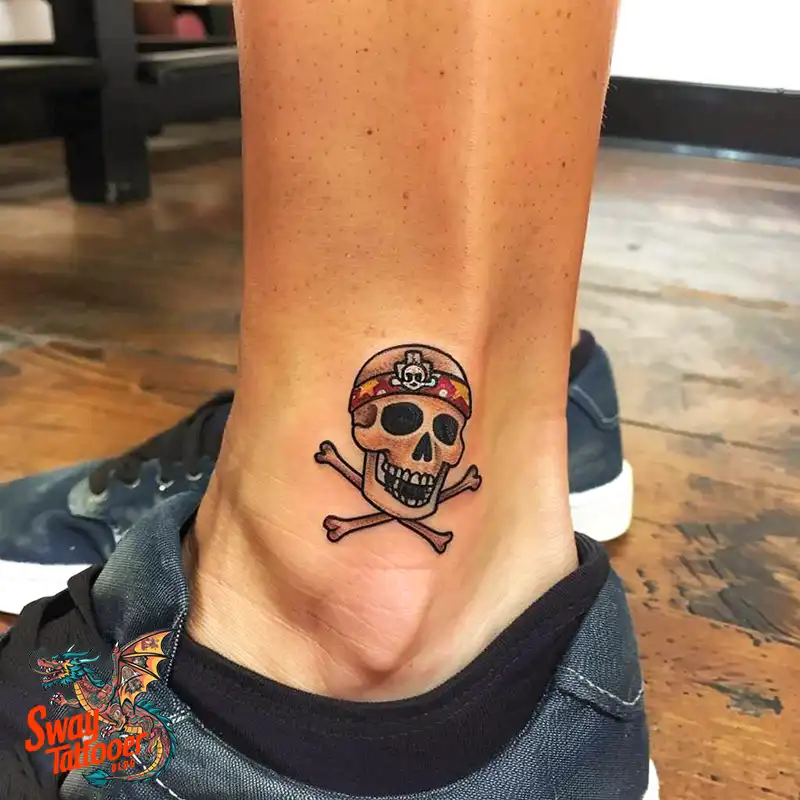
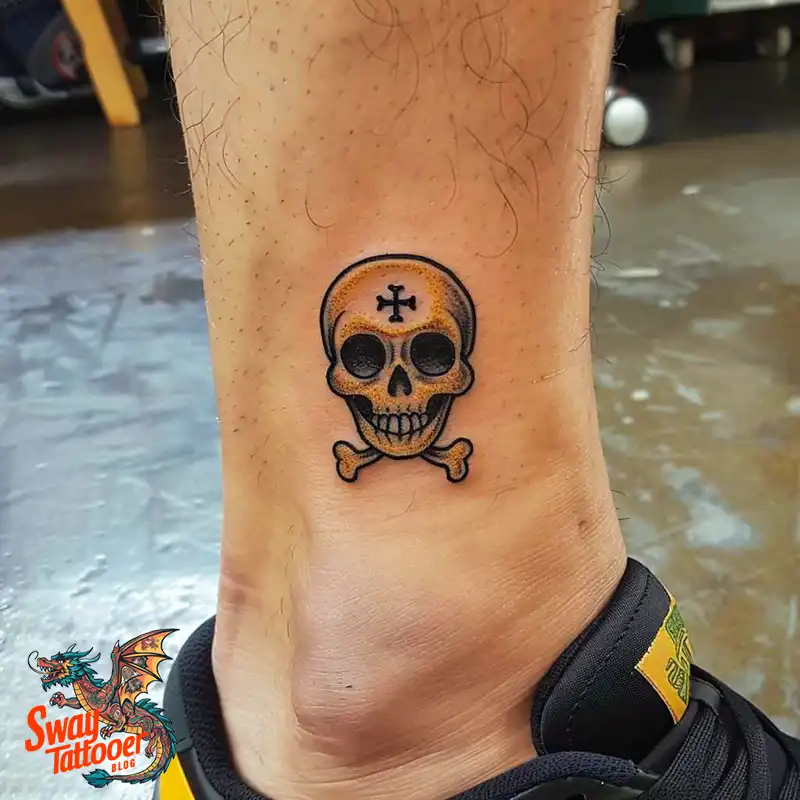
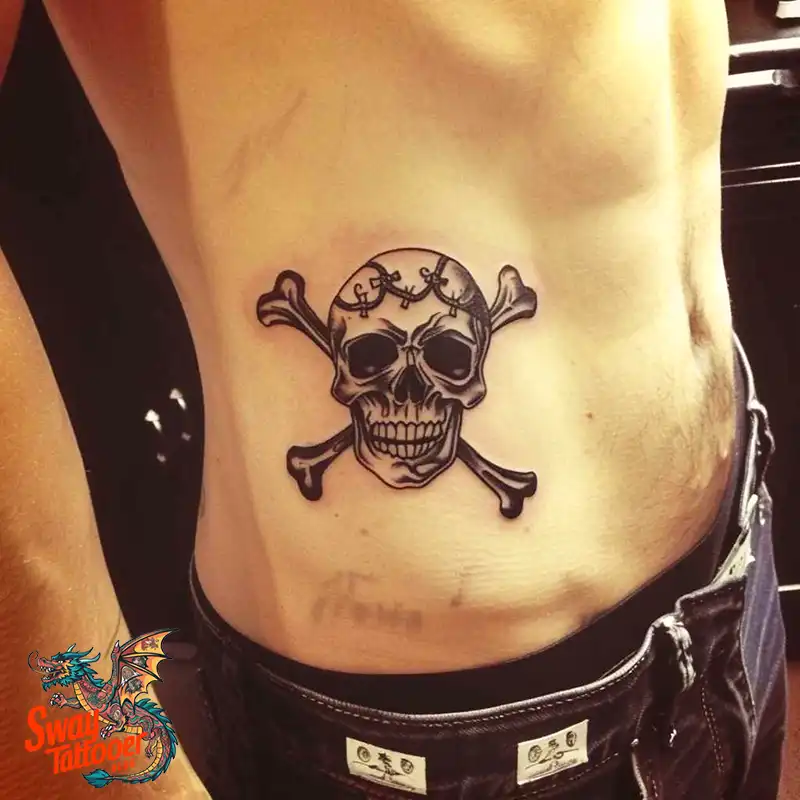
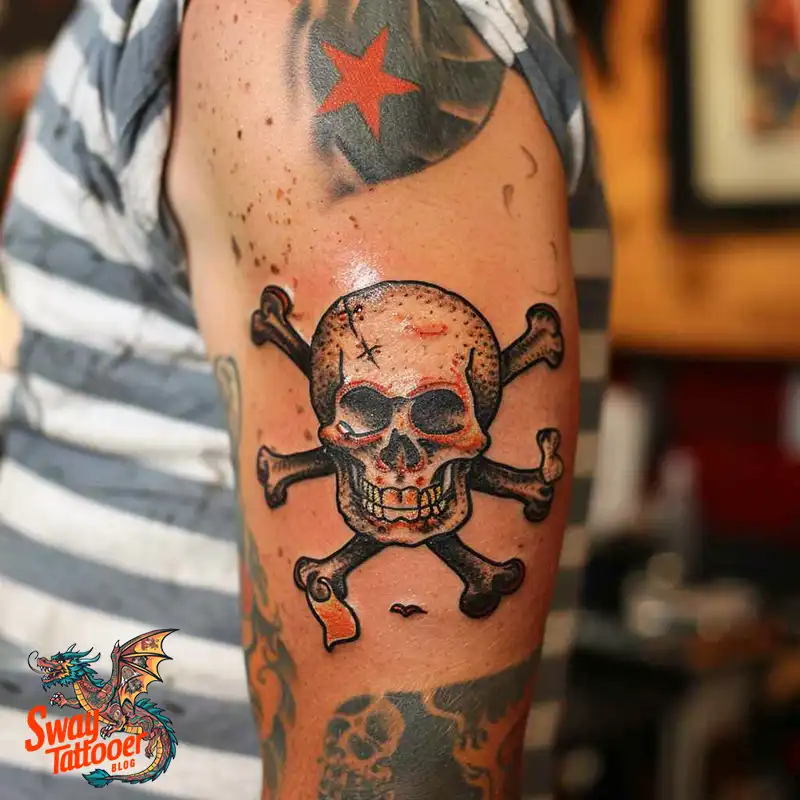
Types:
The Classic Skull and Crossbones
Summary: The classic skull and crossbones design is perhaps the most recognizable form of the Jolly Roger. It features a human skull set above two crossed thigh bones.
Relevance: This design dates back to the early 18th century and was used by infamous pirates such as Blackbeard and Calico Jack. It is a symbol of death and danger, serving as a warning to those who might encounter the pirate ship. Its simplicity and historical significance make it a timeless choice for those looking to capture the essence of pirate lore.
Skull with Crossed Swords
Summary: This variation replaces the traditional bones with crossed swords beneath the skull.
Relevance: The inclusion of swords adds an element of combat and aggression, highlighting the pirates’ readiness for battle. This design is often chosen by individuals who identify with the fierce, rebellious spirit of pirates. The swords can be customized to different styles, from cutlasses to rapiers, to reflect personal taste or specific historical references.
Pirate Hat and Bandana
Summary: In this version, the skull wears a pirate hat and sometimes a bandana, adding a distinct pirate flair to the design.
Relevance: The hat and bandana immediately bring to mind the iconic imagery of famous pirate captains. This design often includes additional elements such as an eye patch or gold earring, further enhancing the pirate aesthetic. It is a favorite among those who wish to celebrate the romanticized image of pirates popularized by movies and literature.
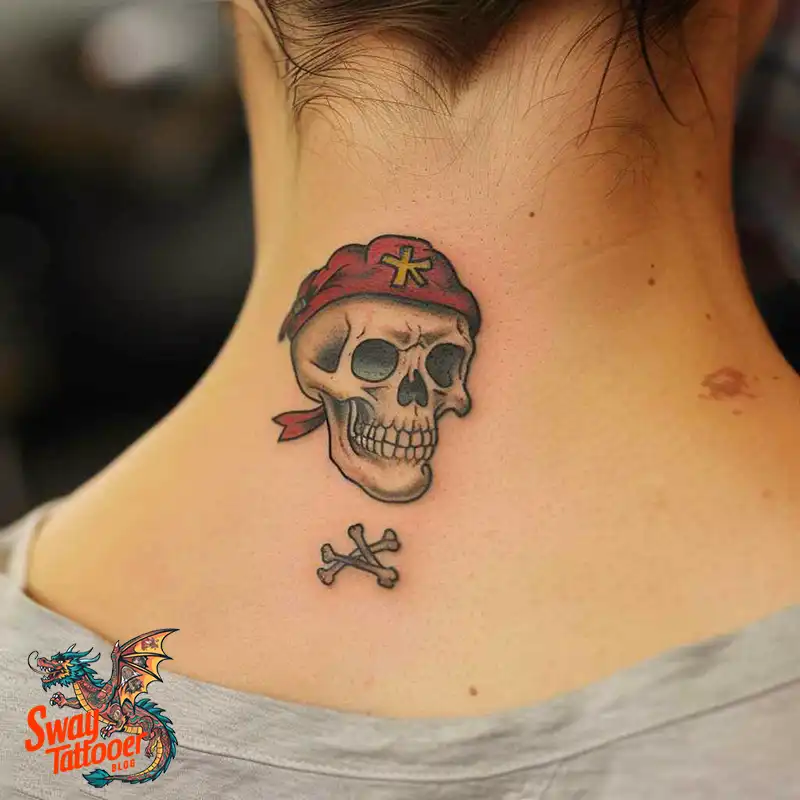
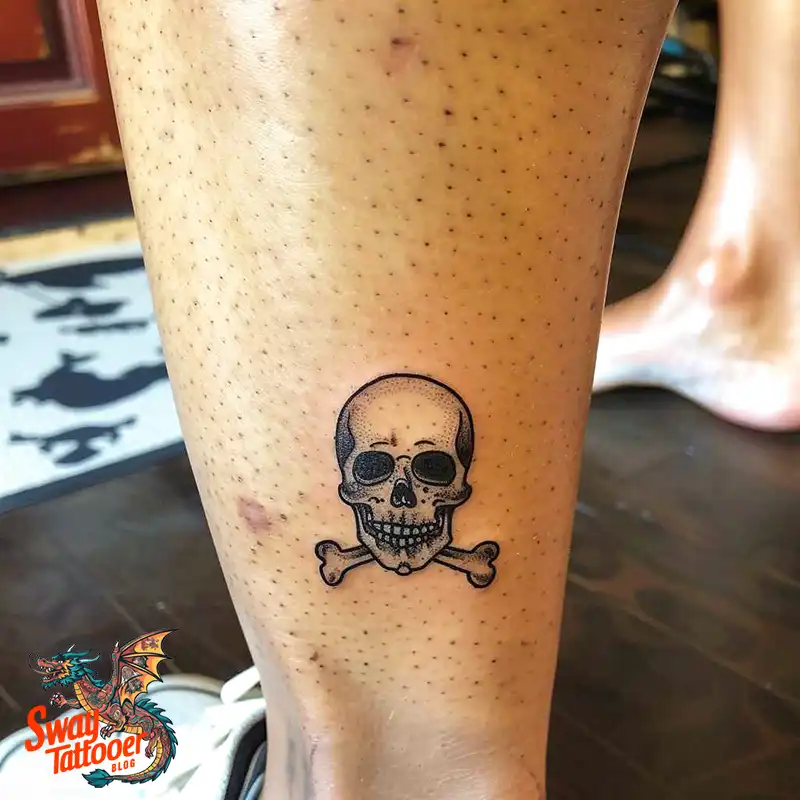
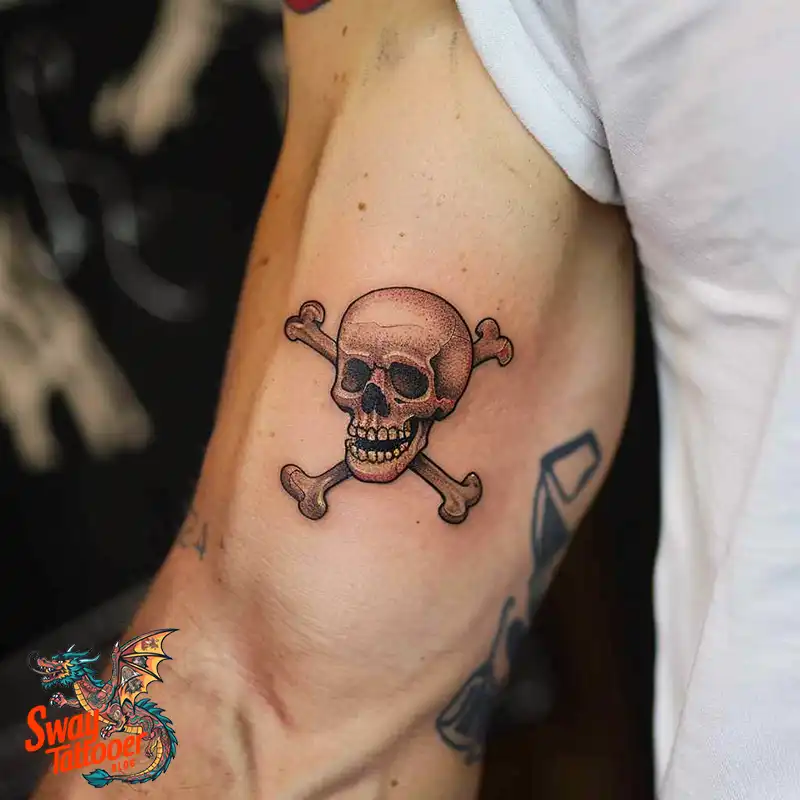
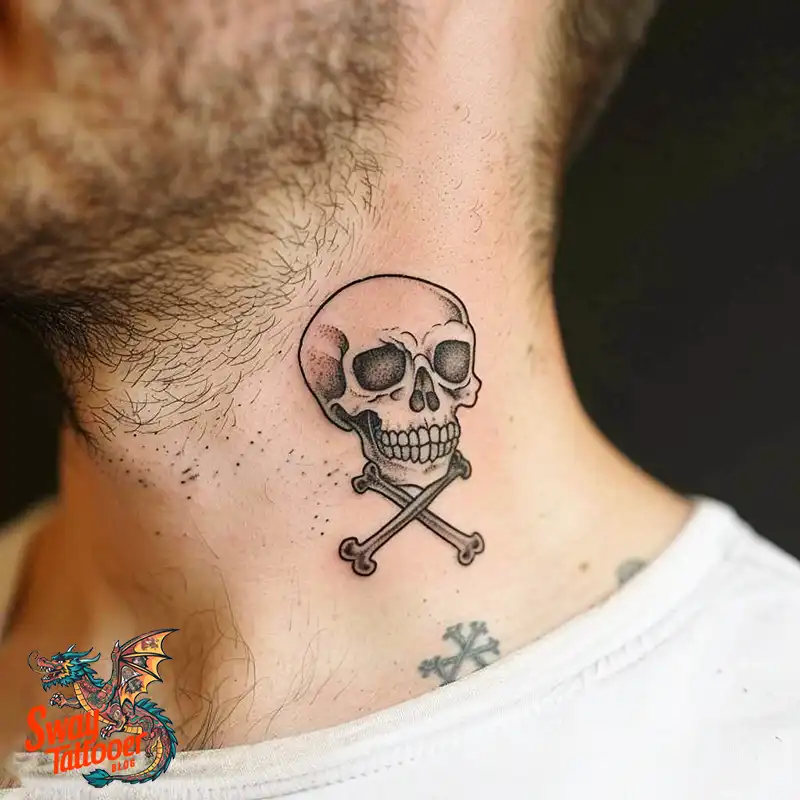
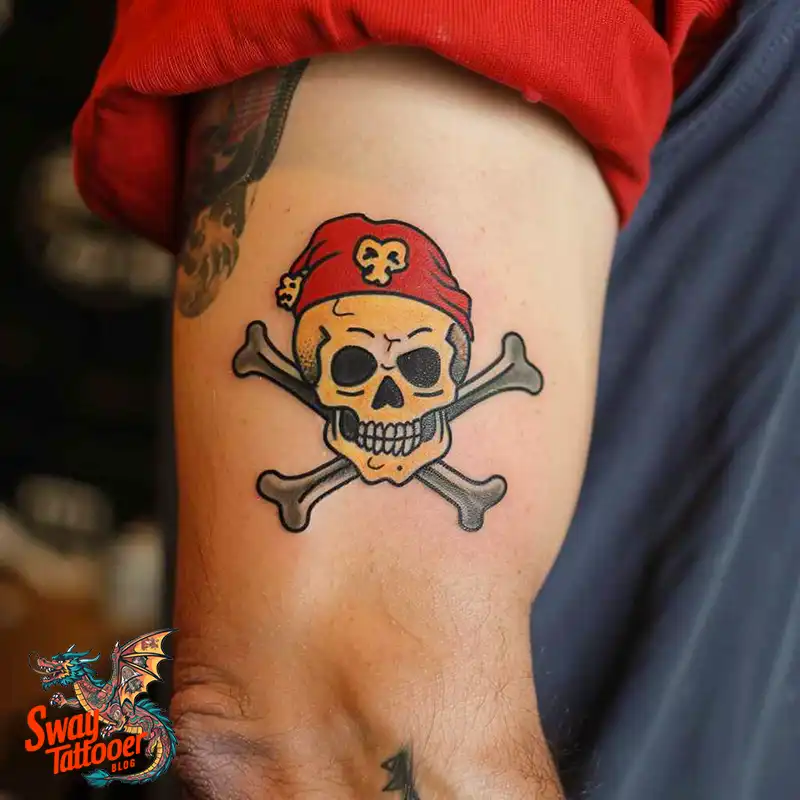
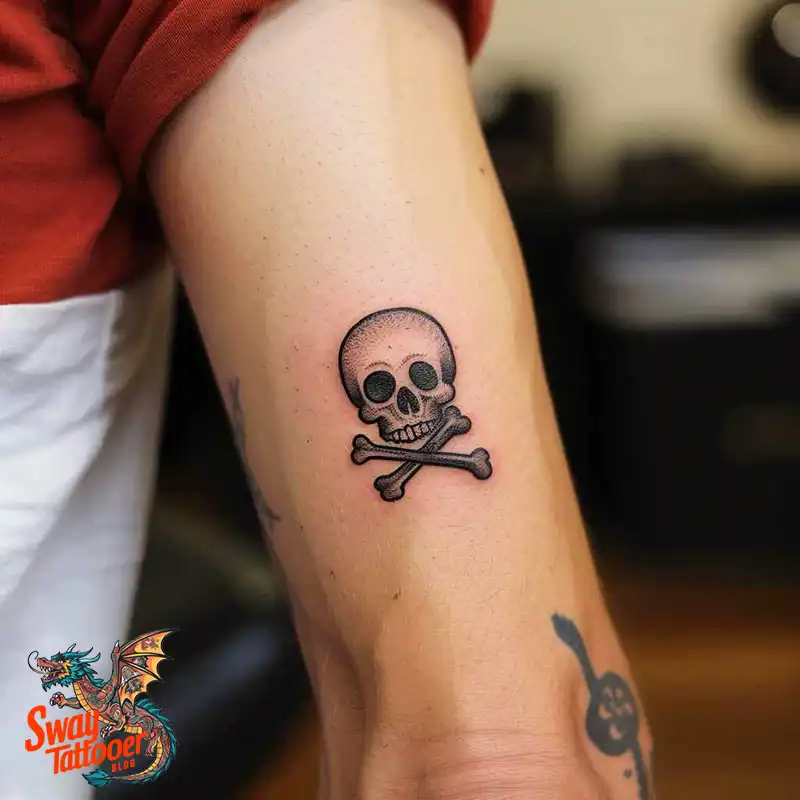
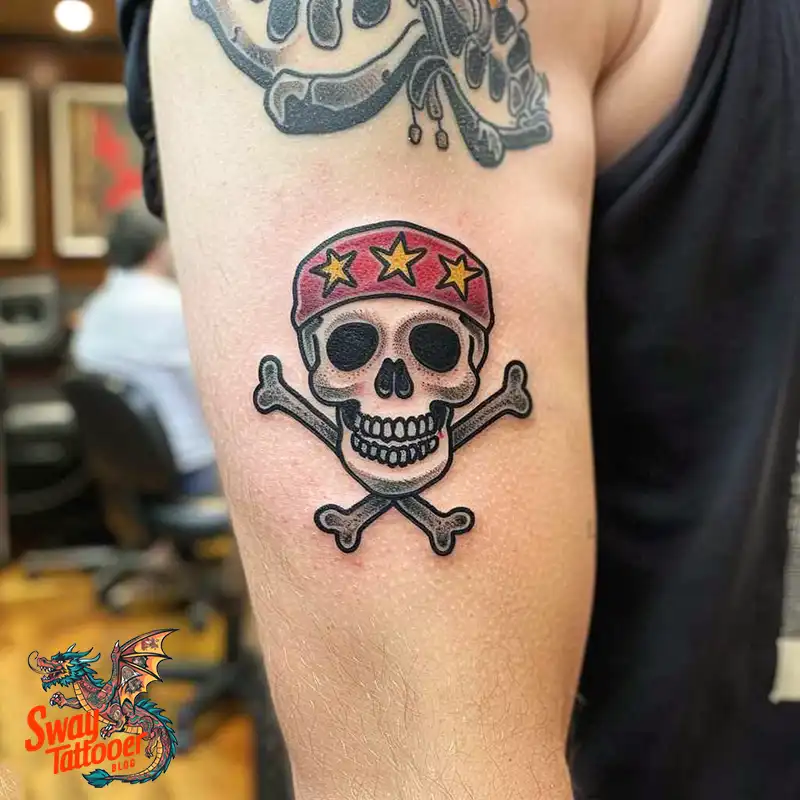
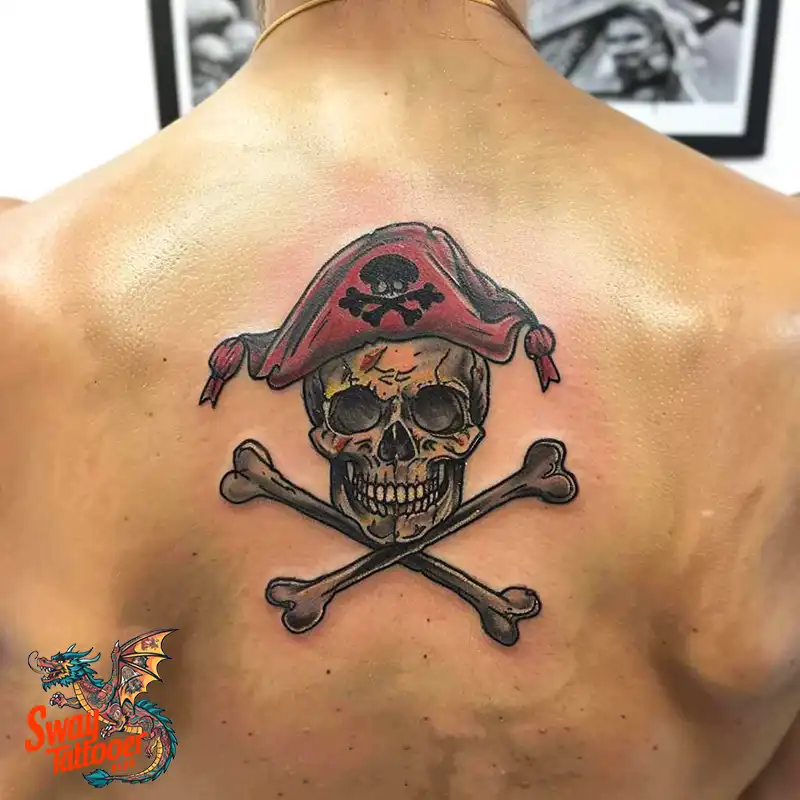
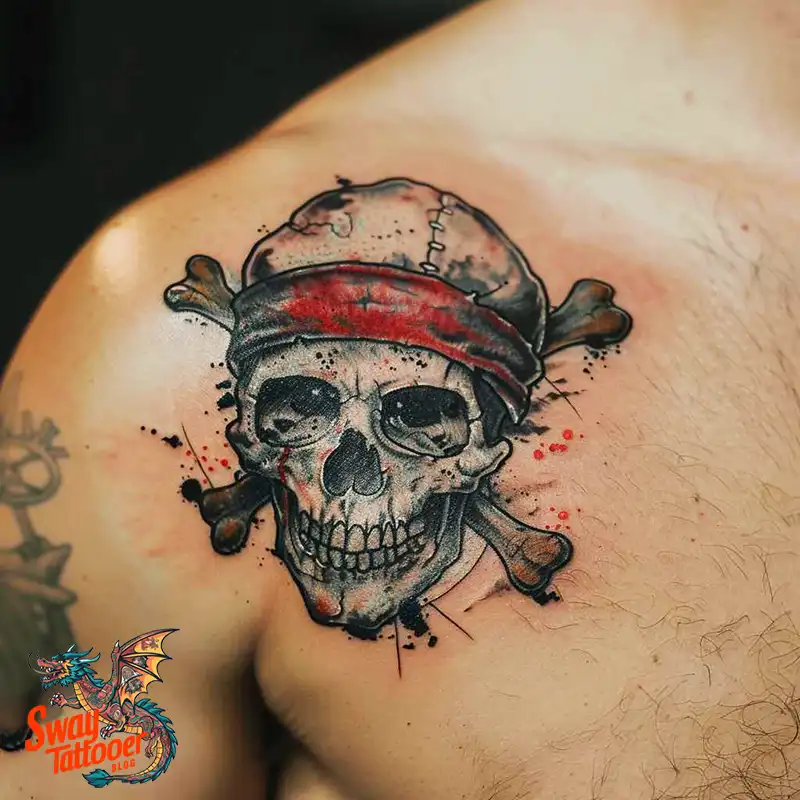
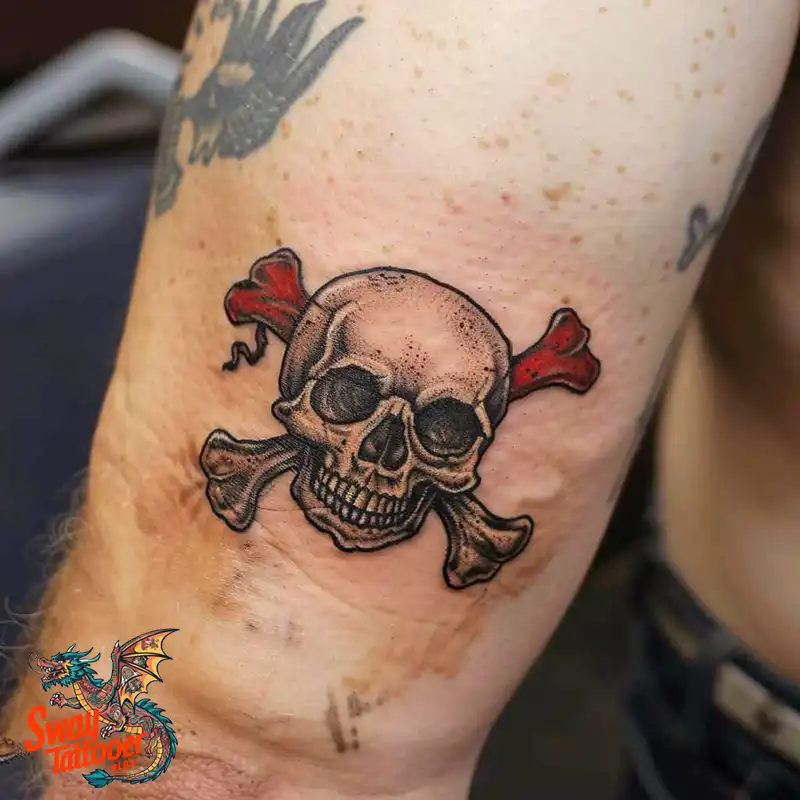
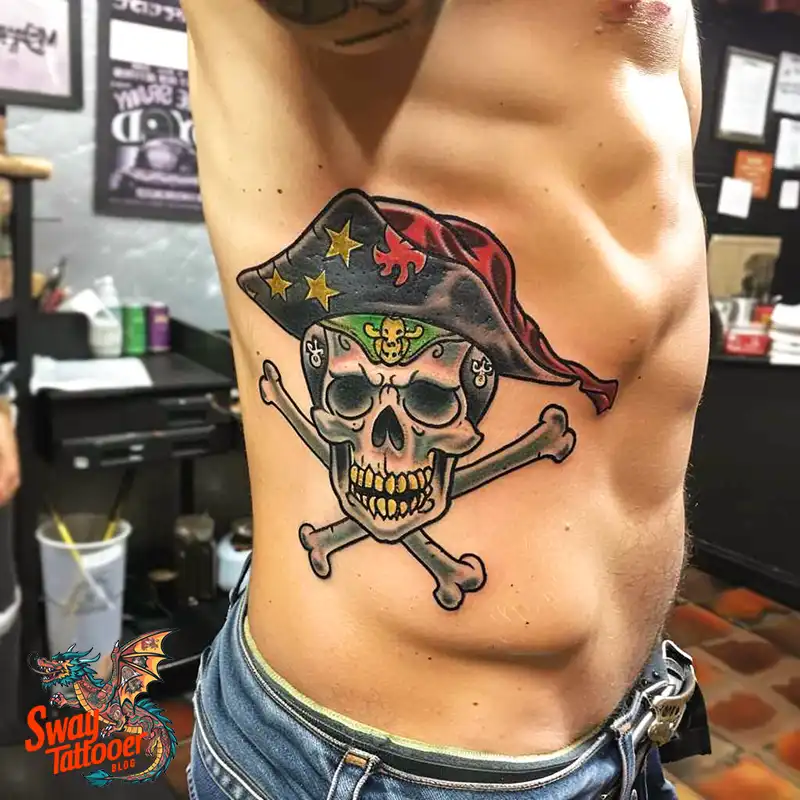
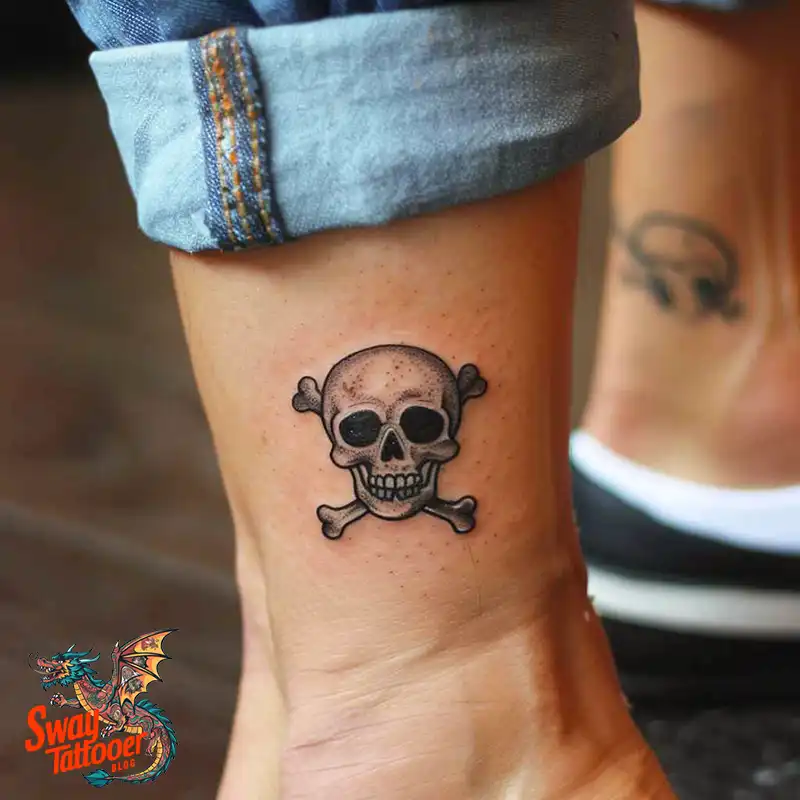
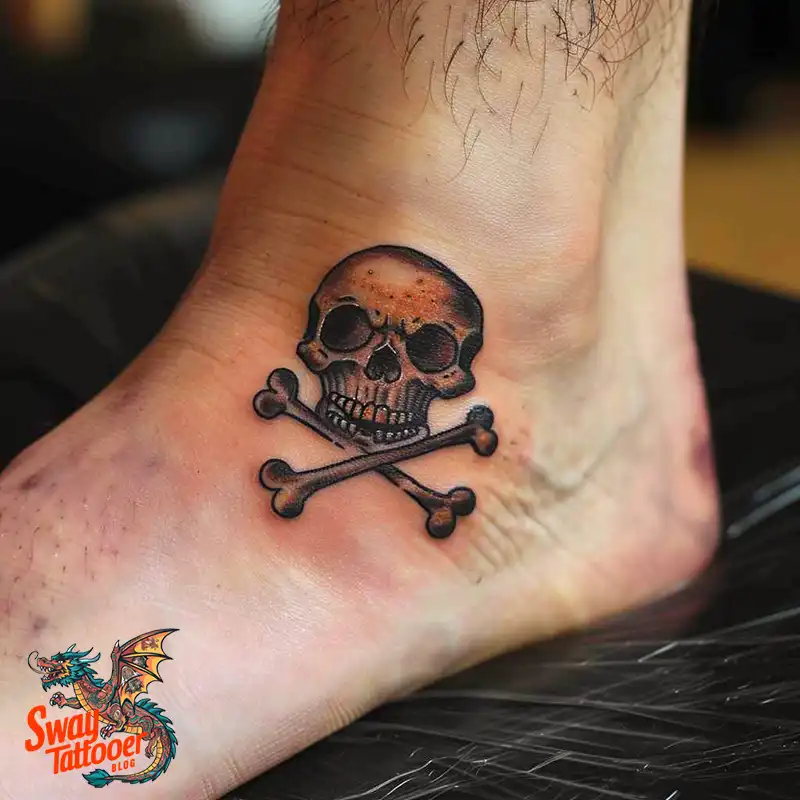
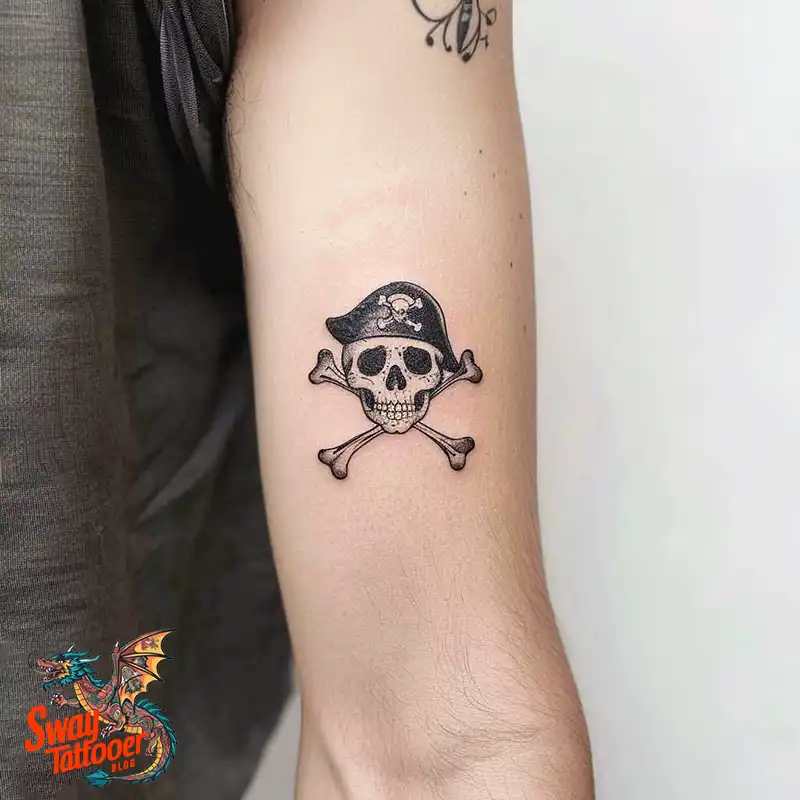
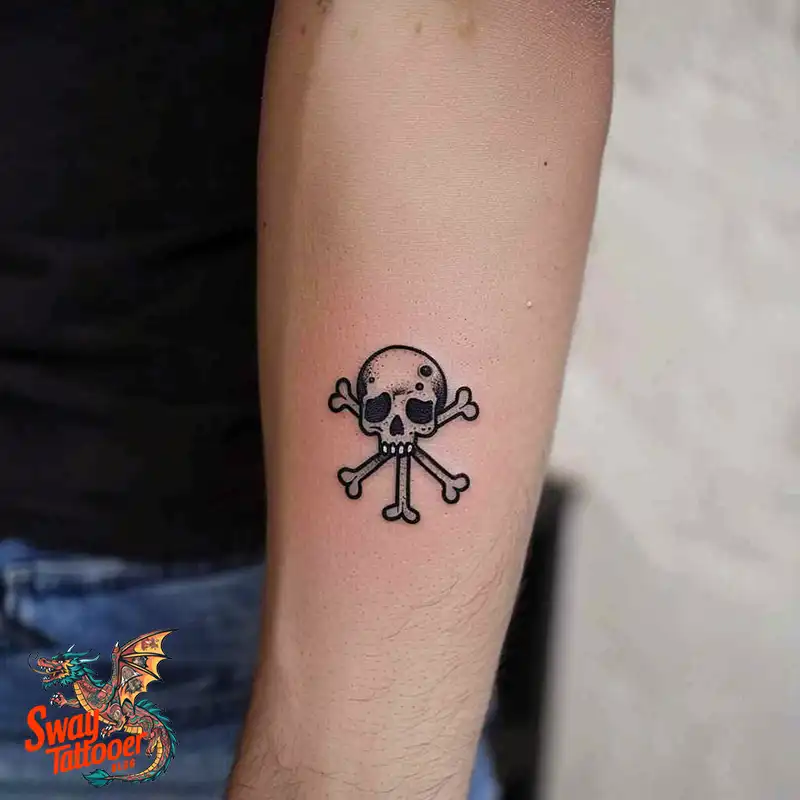
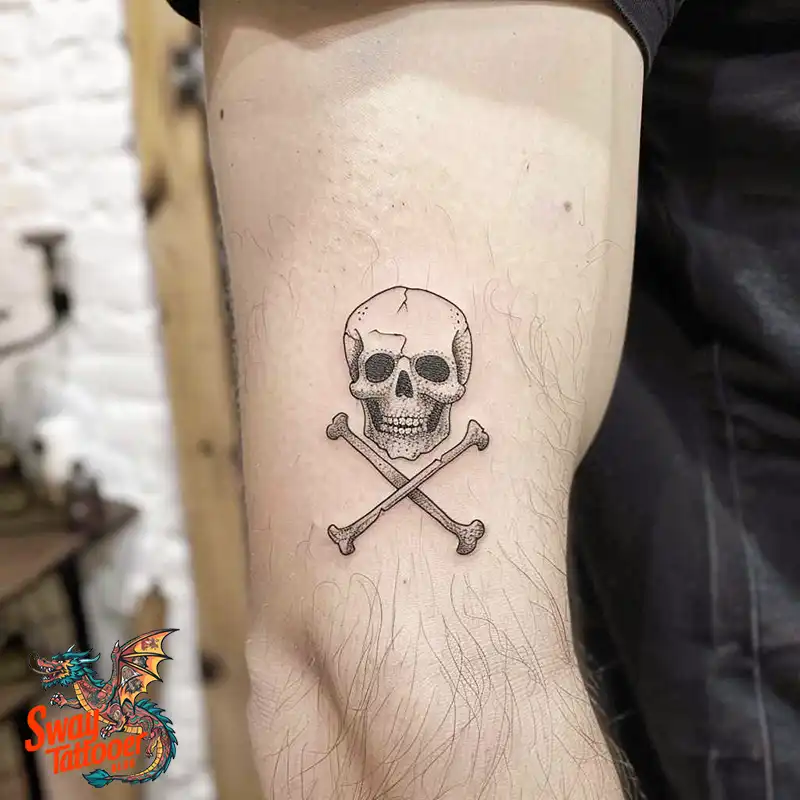
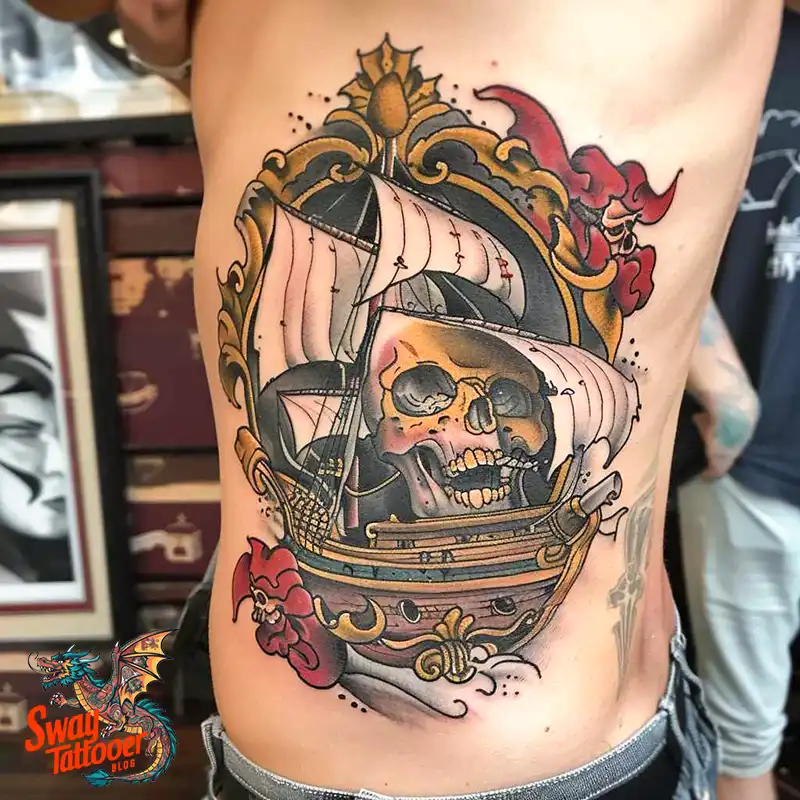
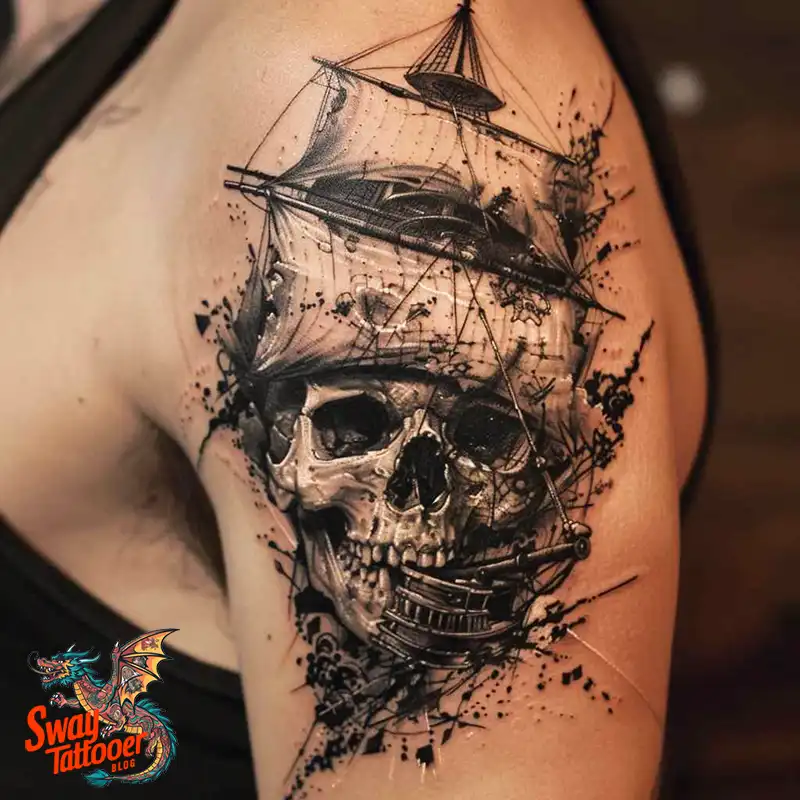
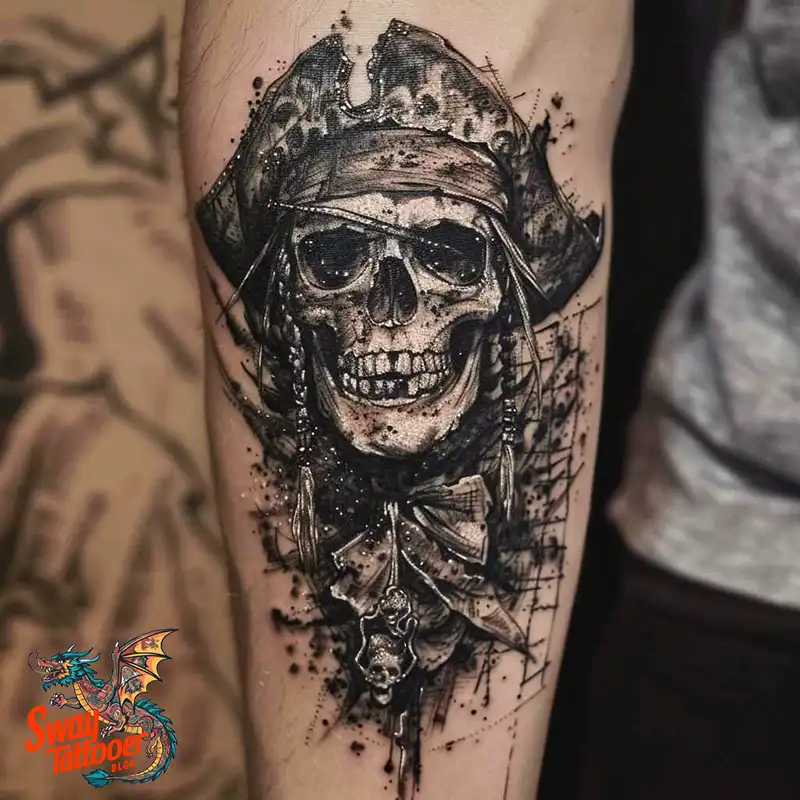
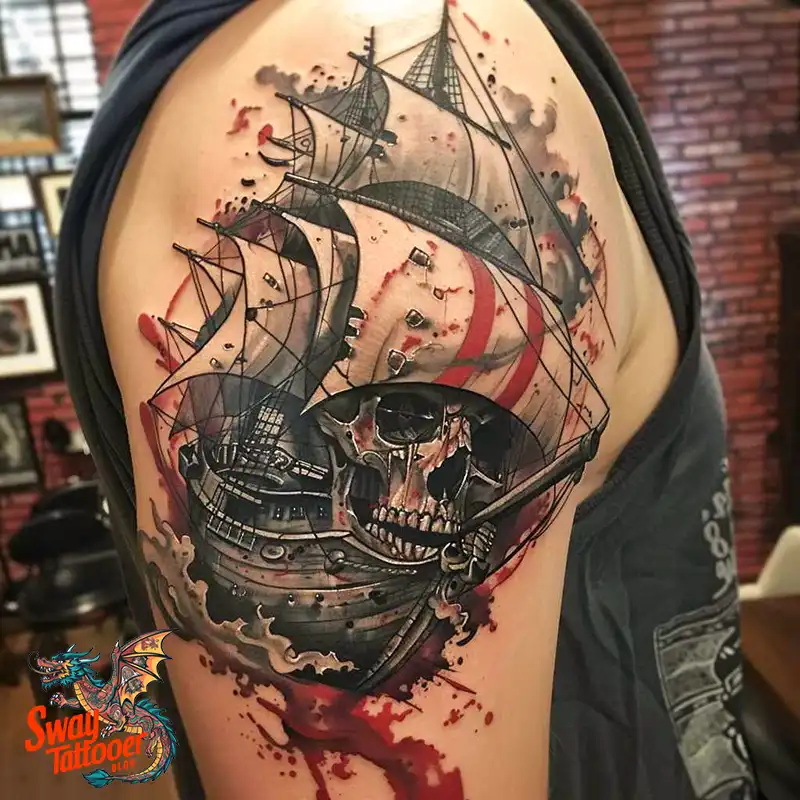
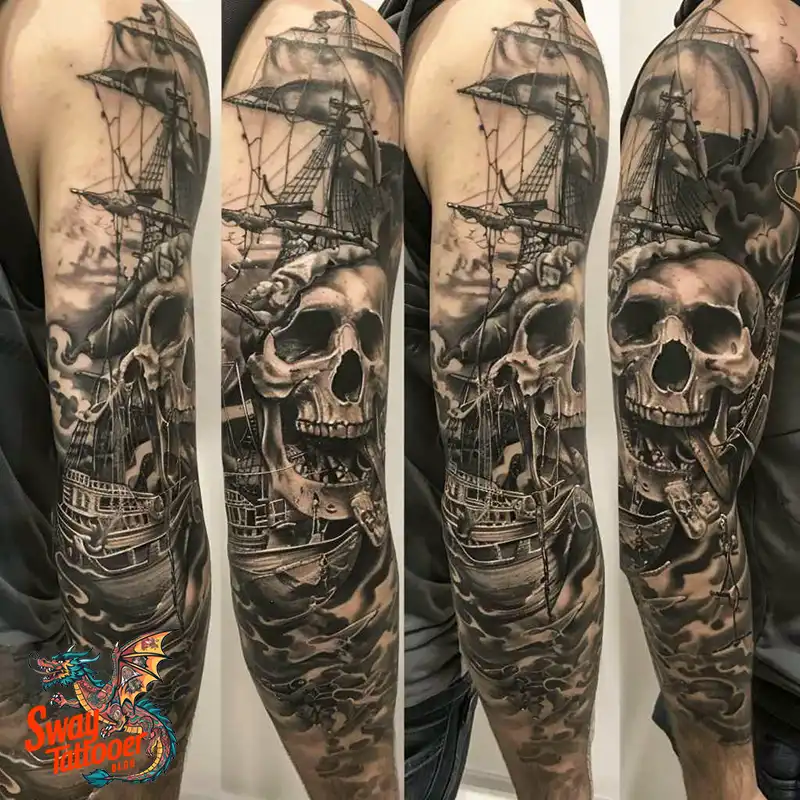
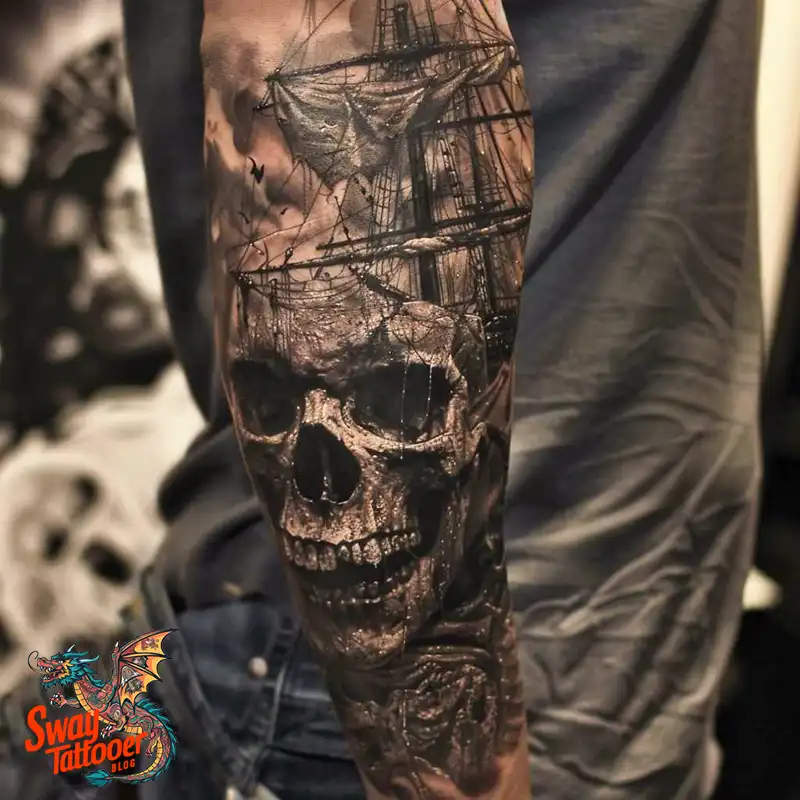
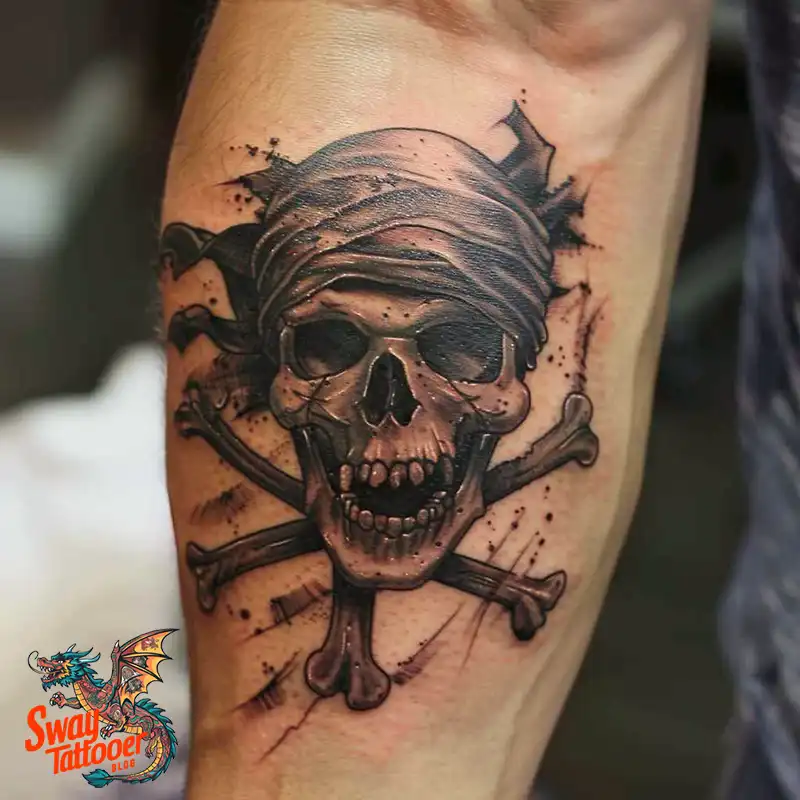
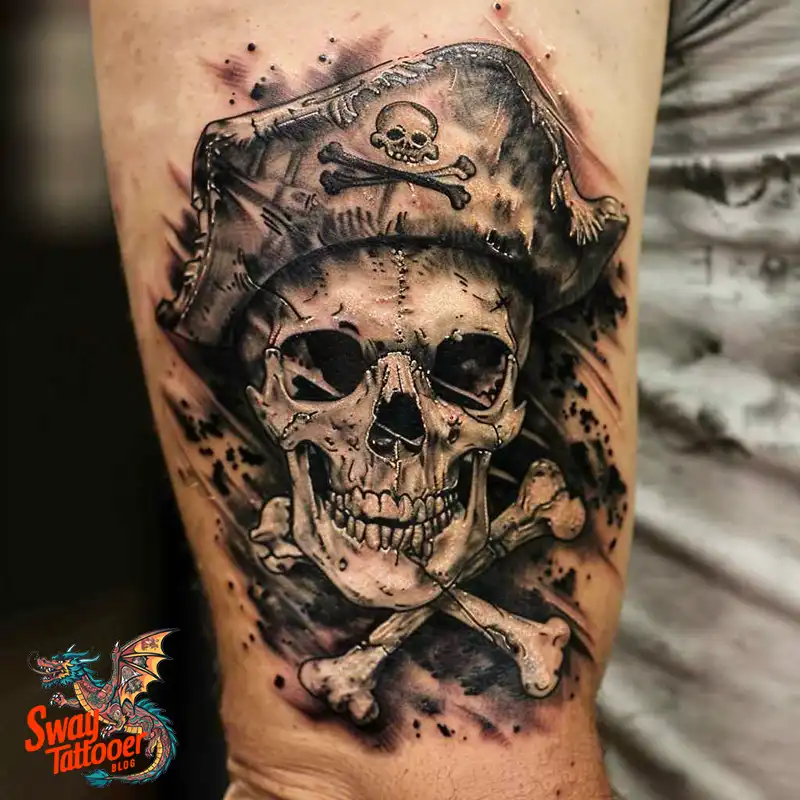
Skull with Crossed Cannons
Summary: Instead of bones or swords, this design features a skull with crossed cannons beneath it.
Relevance: Cannons were essential to a pirate ship’s arsenal, used for both offense and defense. This design signifies power and destructive capability, making it a fitting choice for those who admire the tactical prowess of historical pirates. It also serves as a reminder of the maritime context in which pirates operated.
Skeleton Pirate
Summary: A more detailed tattoo that depicts a full skeleton dressed as a pirate, often wielding a sword or standing on a ship.
Relevance: This elaborate design allows for a greater level of creativity and personalization. It can commemorate specific pirate legends or simply provide a more dynamic representation of the pirate life. The full skeleton can be posed in various action scenes, adding a storytelling element to the tattoo.
Feminine Jolly Roger
Summary: This variation includes a skull with traditionally feminine elements, such as a bow, long eyelashes, or lipstick.
Relevance: While most historical pirates were men, there were notable female pirates such as Anne Bonny and Mary Read. This design pays homage to these women, celebrating their place in pirate history. It also provides a gender-inclusive option for those who want a Jolly Roger tattoo with a touch of femininity.
Skull with Nautical Elements
Summary: This design incorporates other nautical symbols, such as anchors, ship wheels, or waves, around the skull and crossbones.
Relevance: By including additional maritime elements, this tattoo emphasizes the seafaring lifestyle of pirates. It highlights the connection to the ocean and can symbolize the wearer’s love for the sea. This type of tattoo can be highly personalized, incorporating elements that hold specific meaning to the individual.
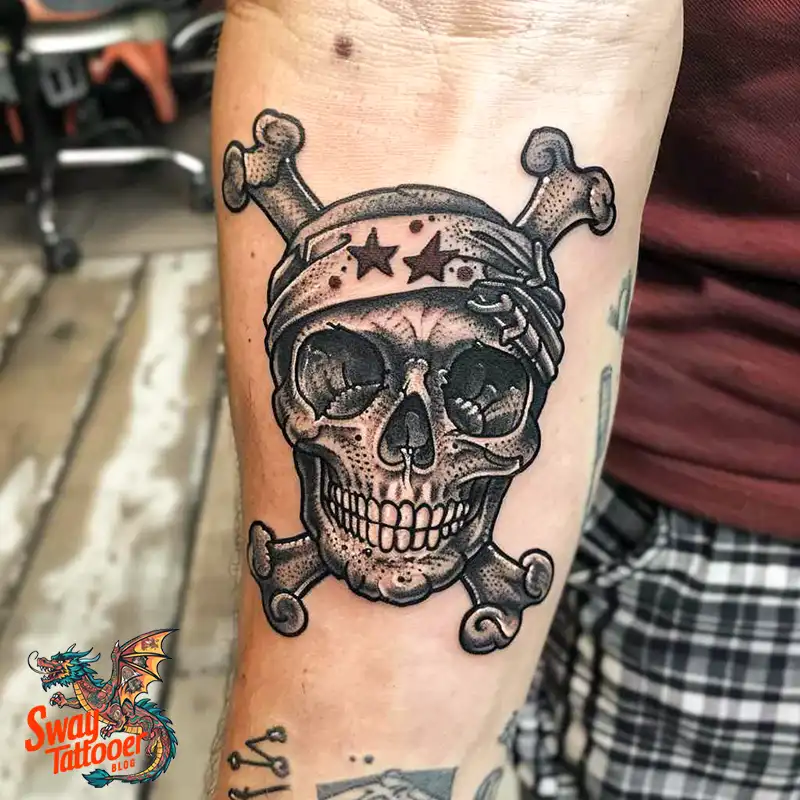
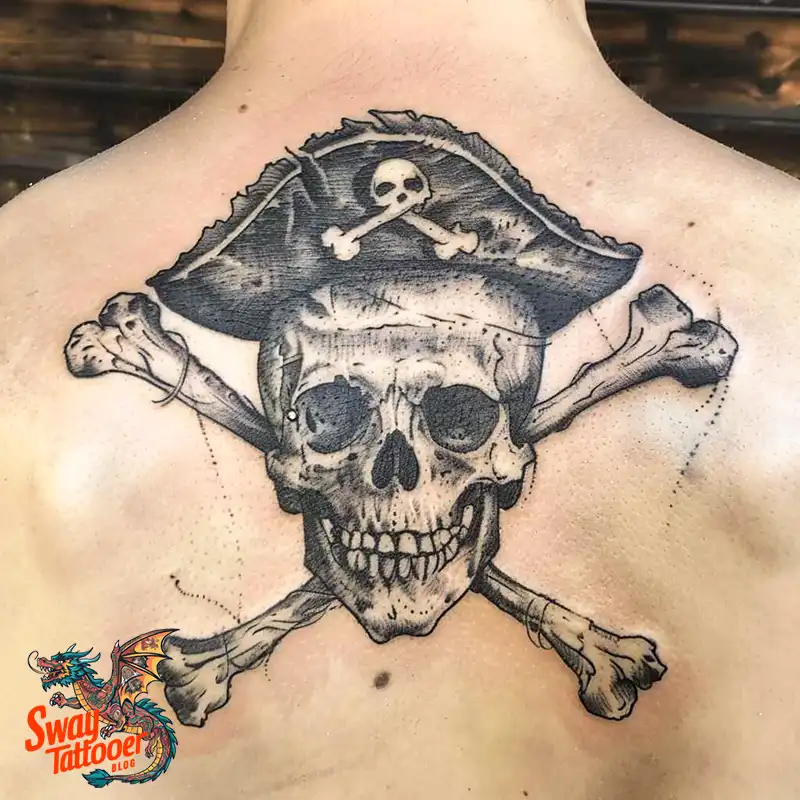
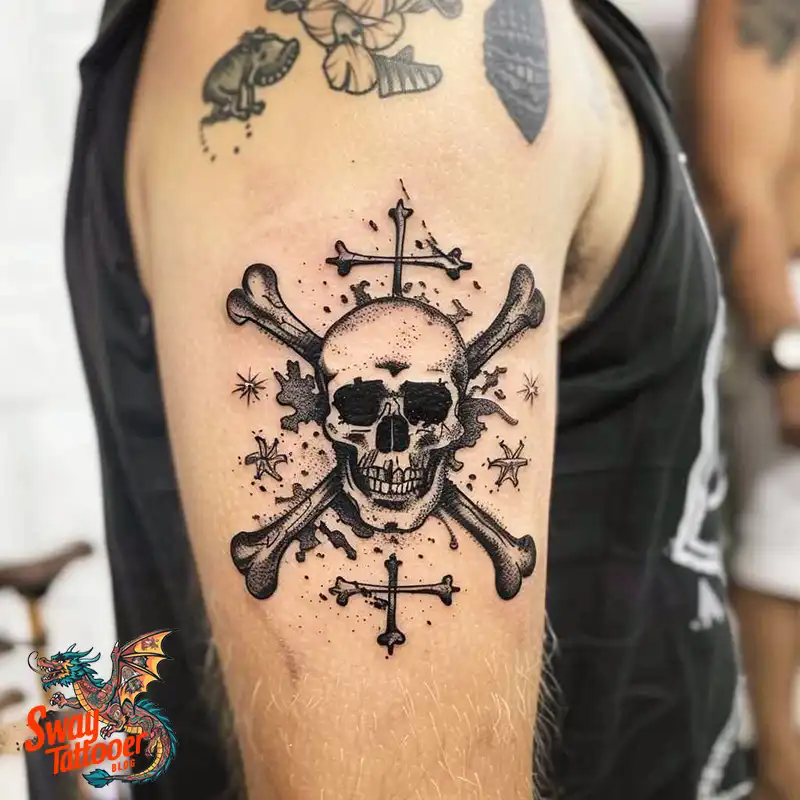
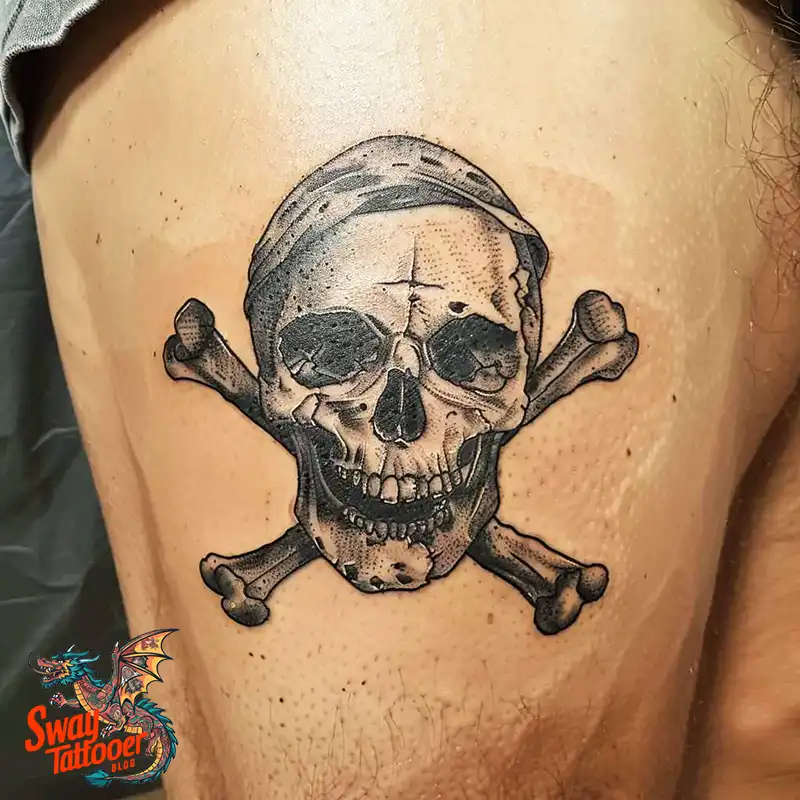
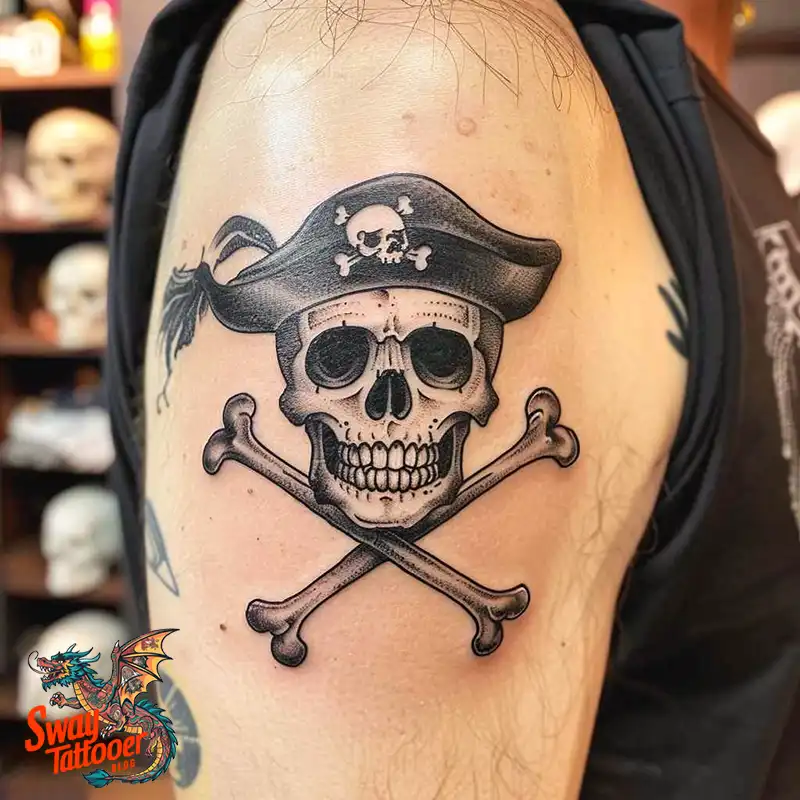
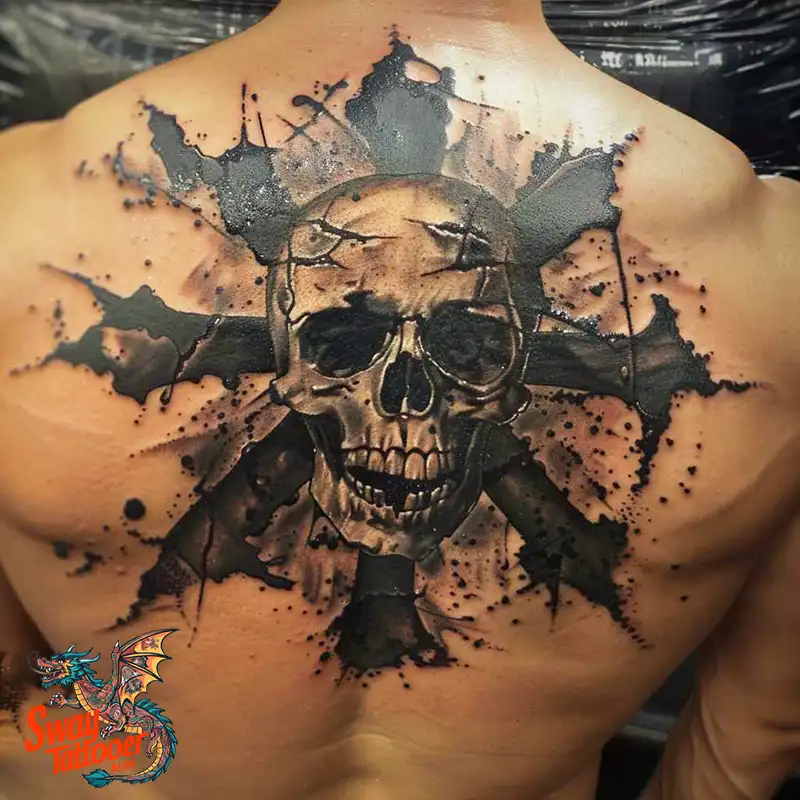
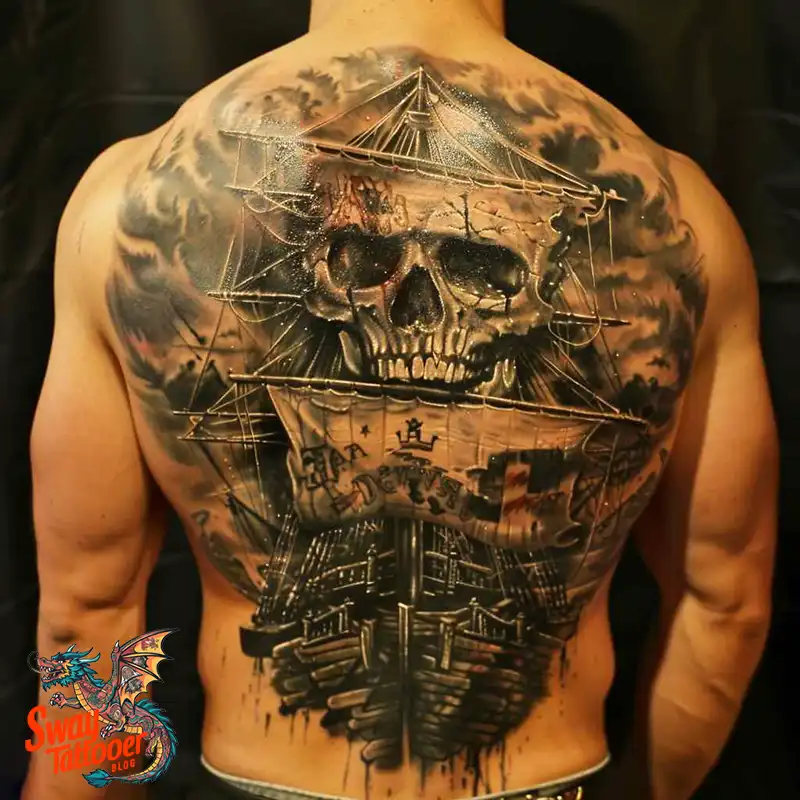
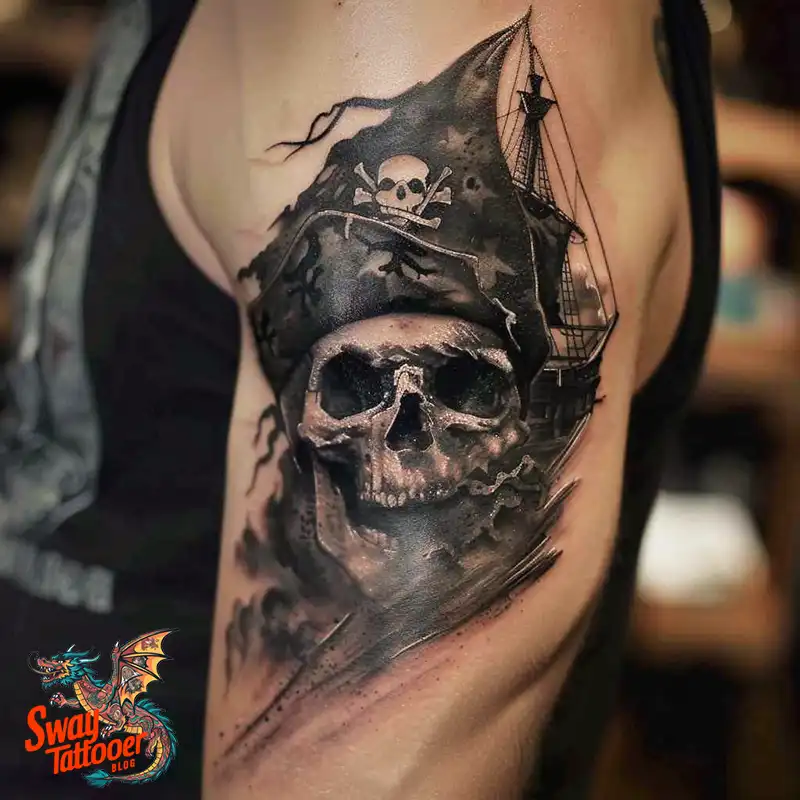
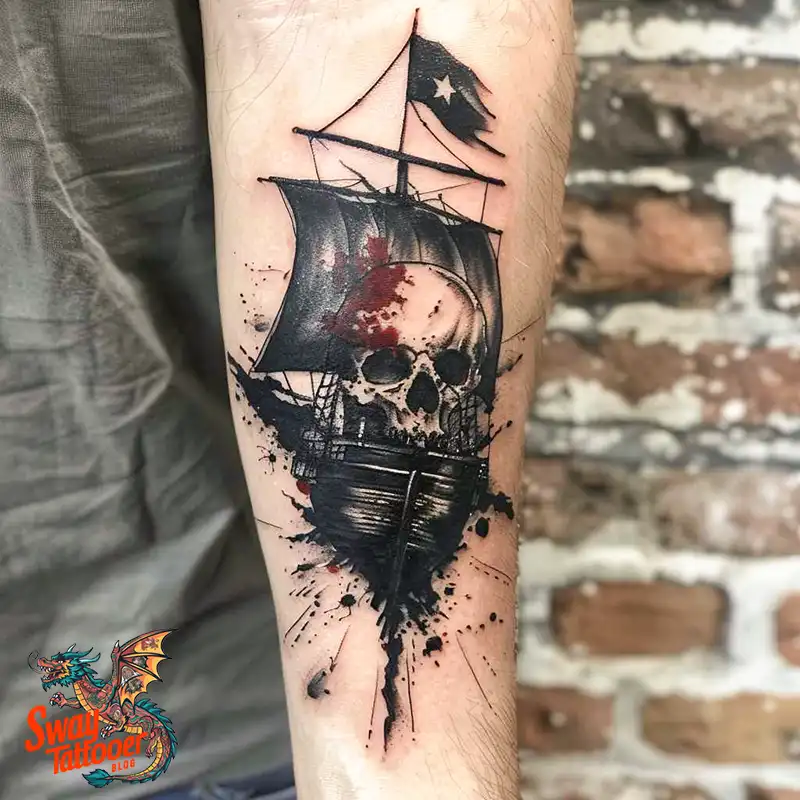
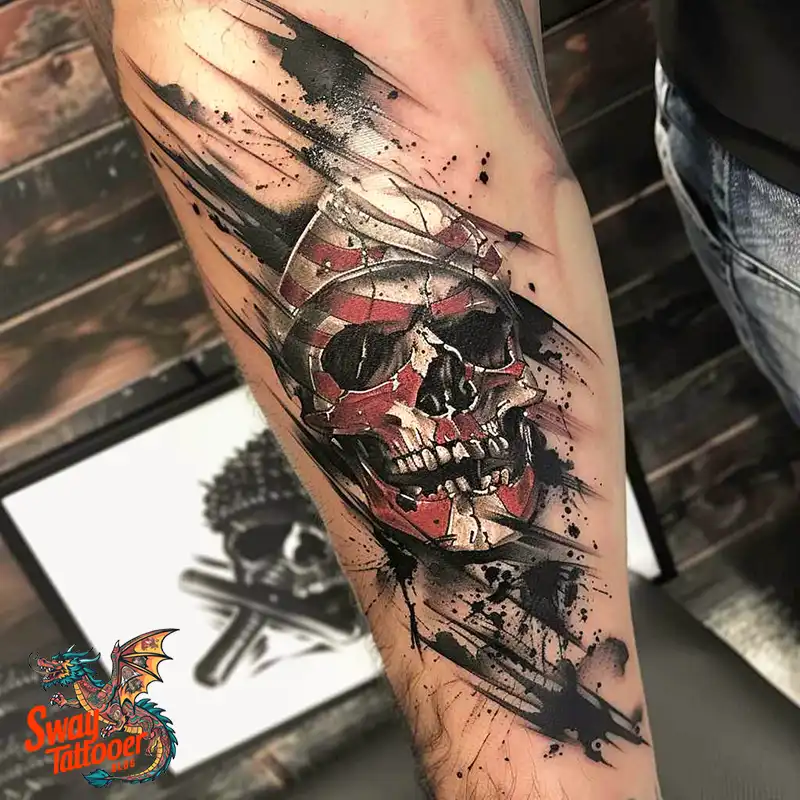
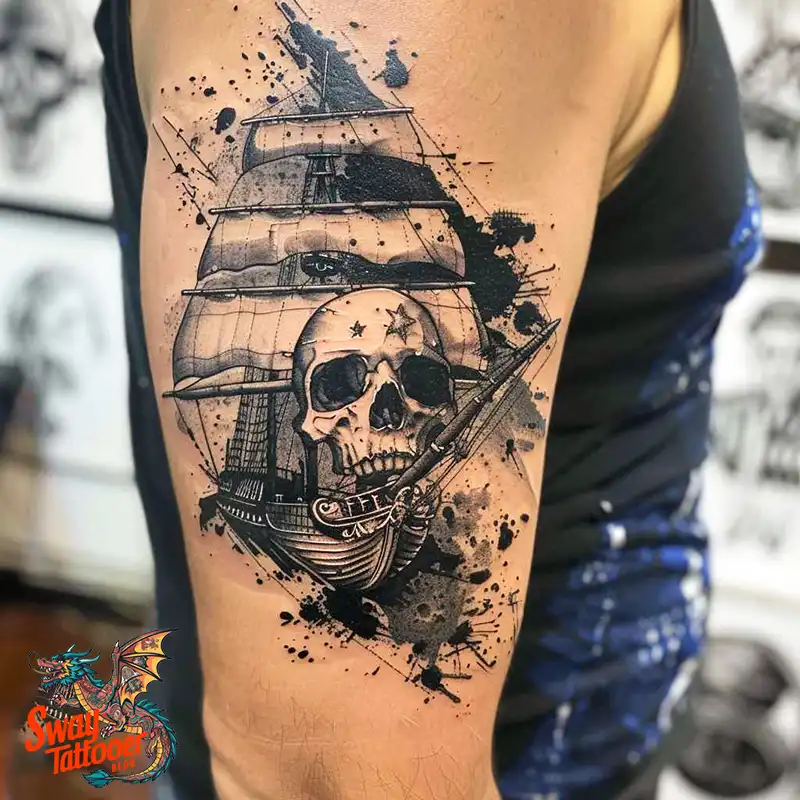
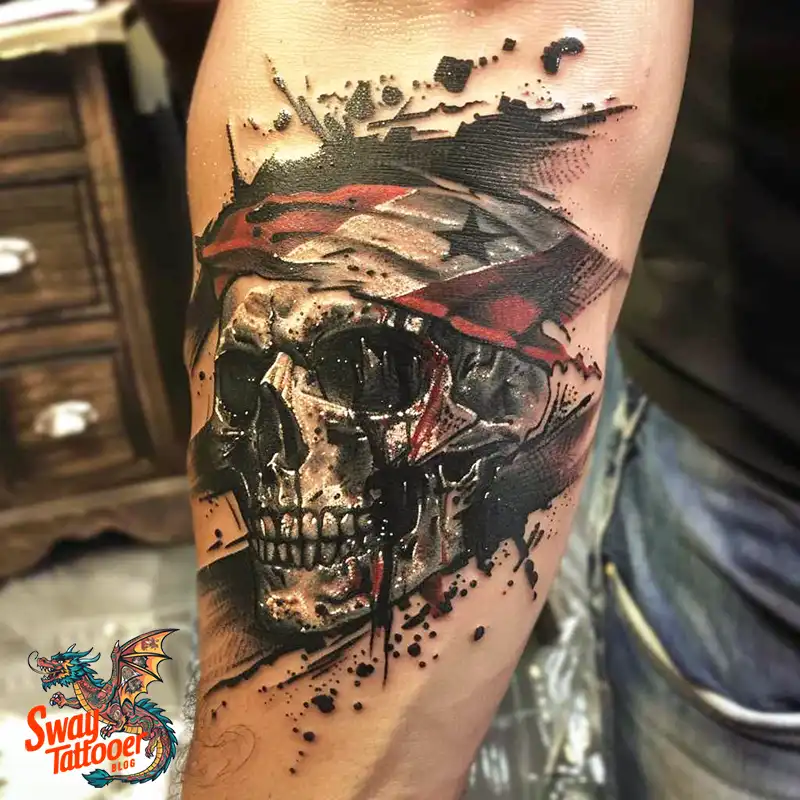
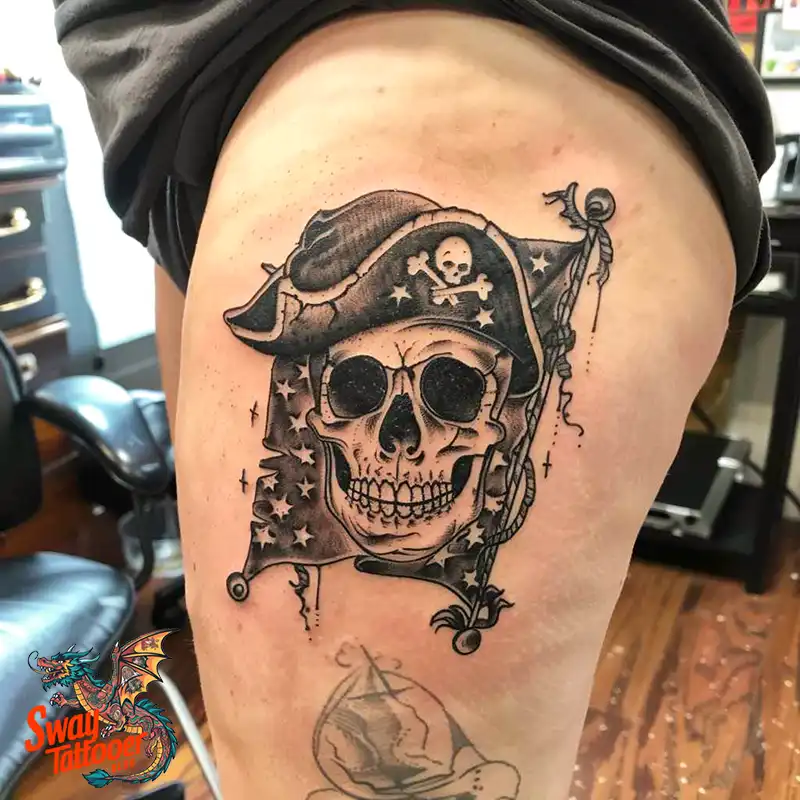
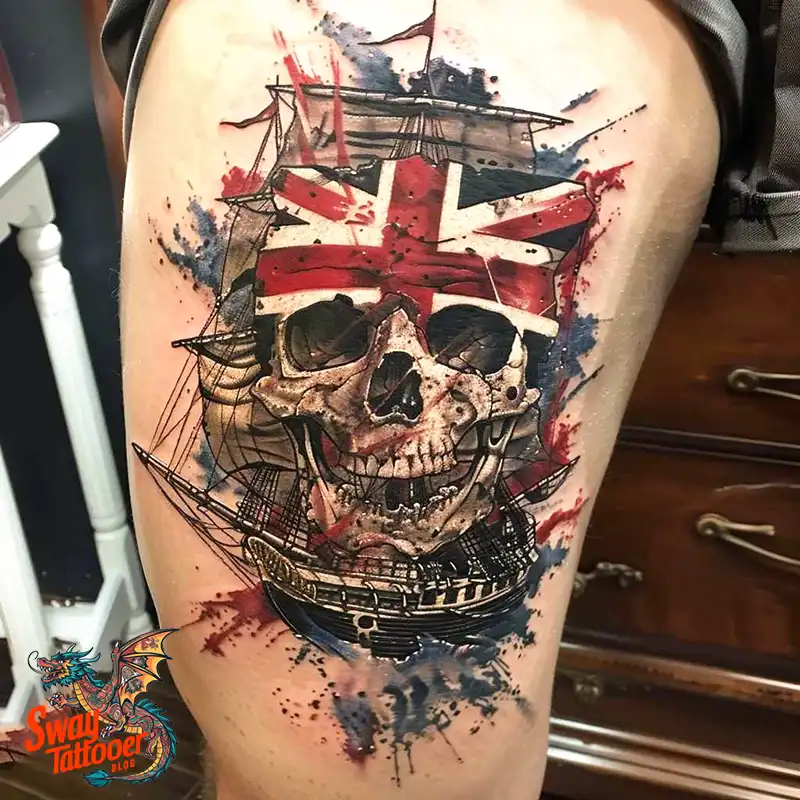
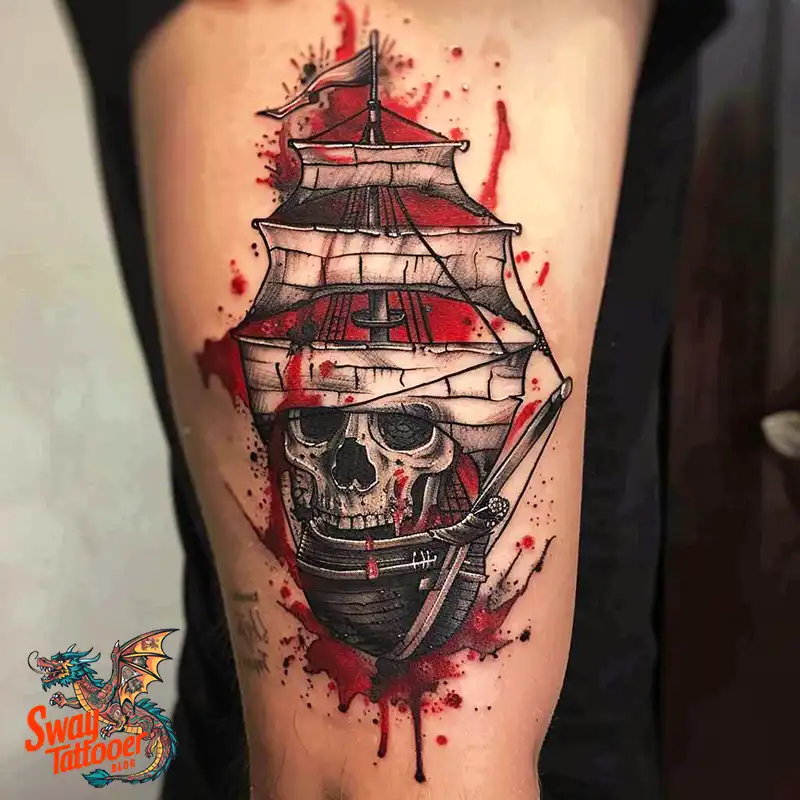
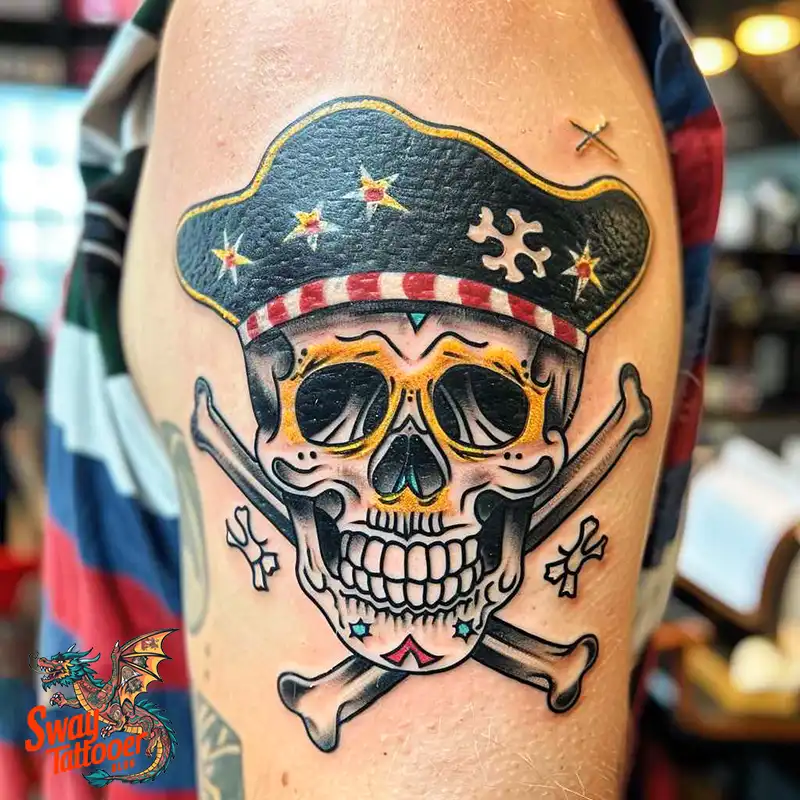
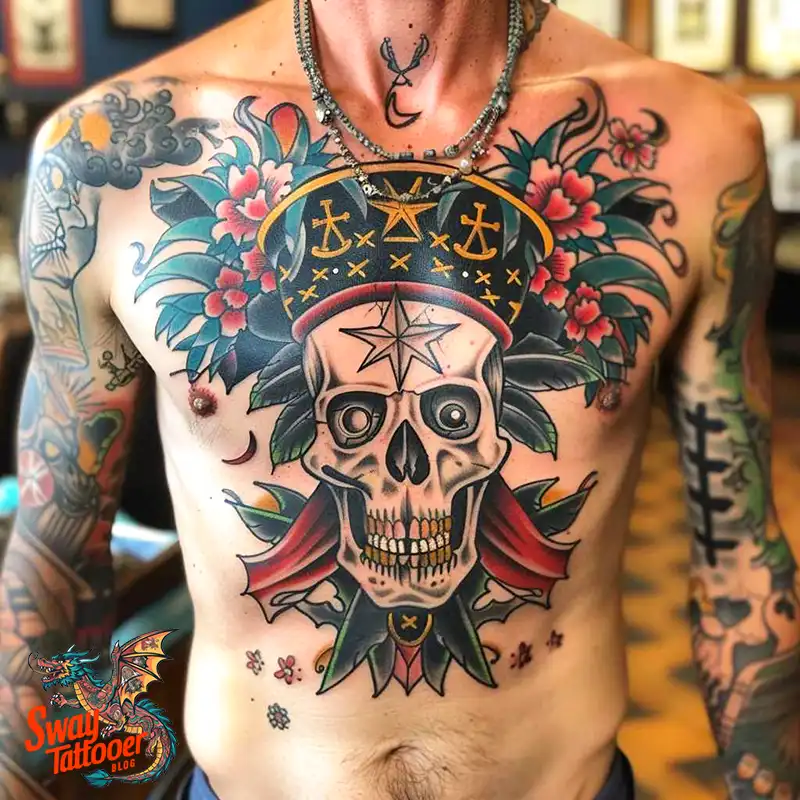
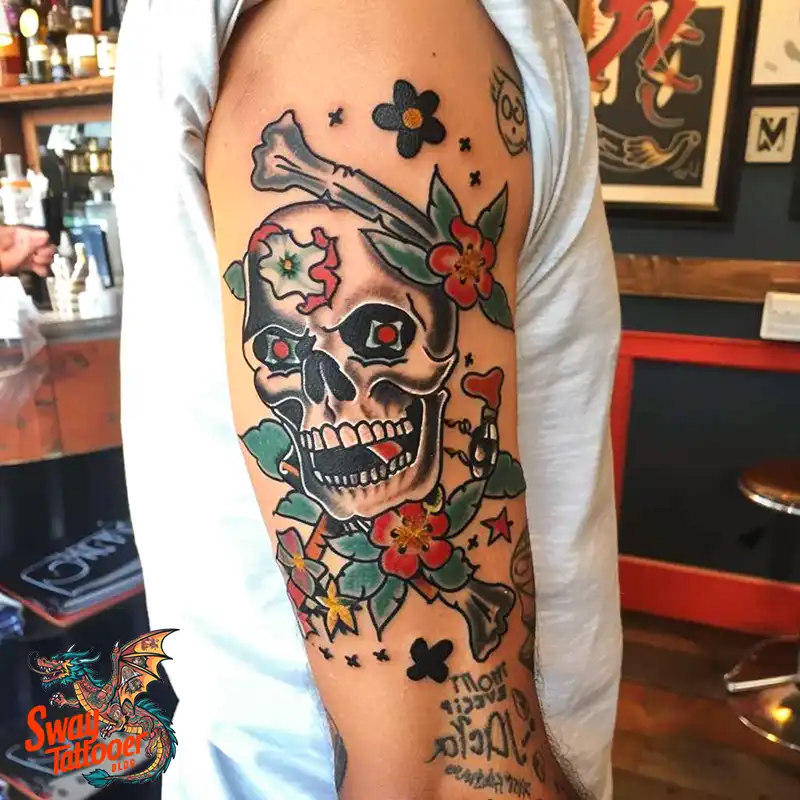
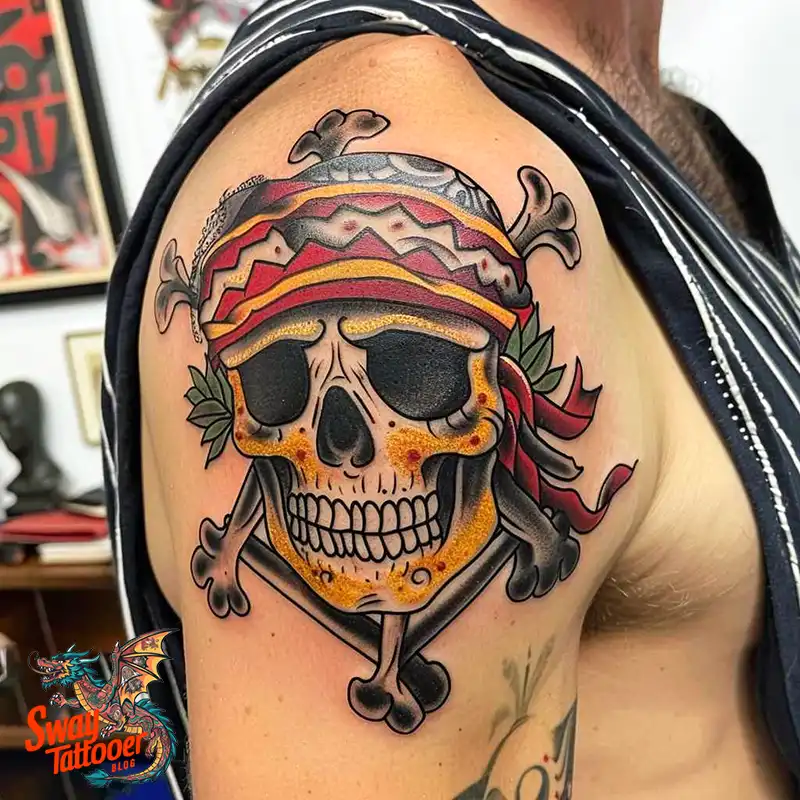
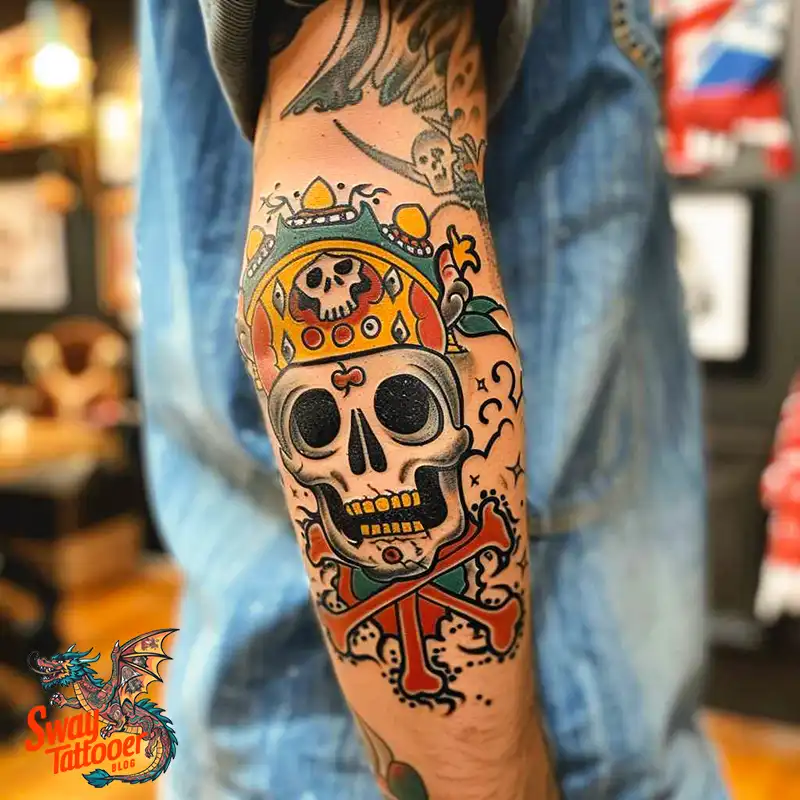
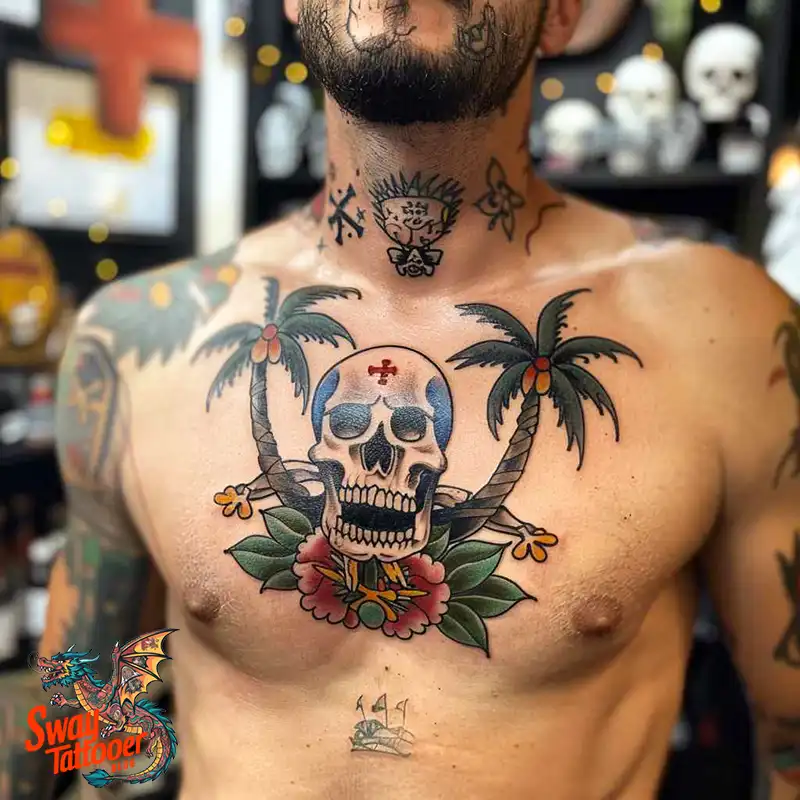
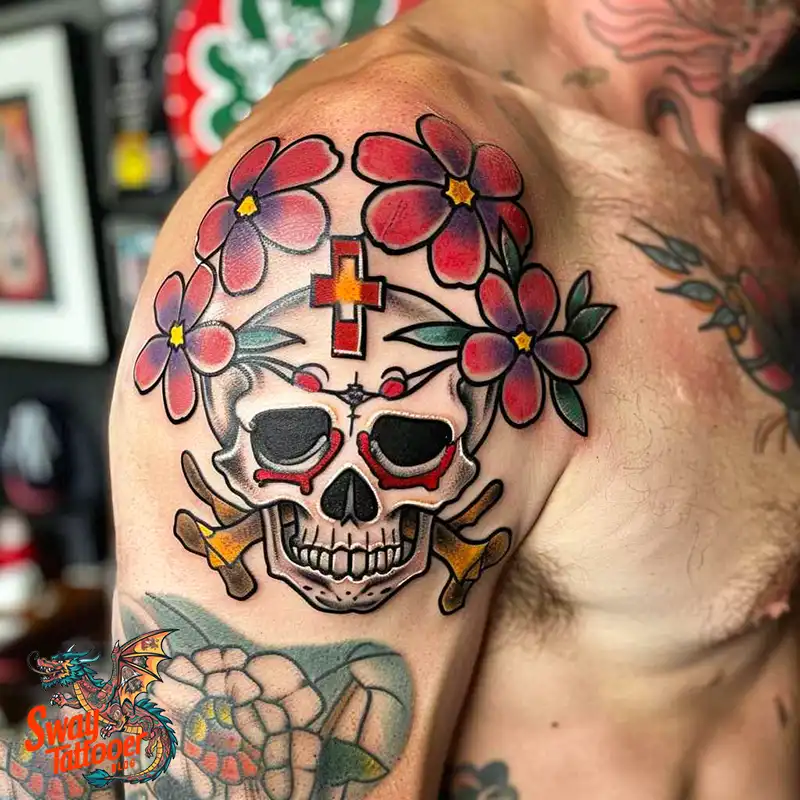
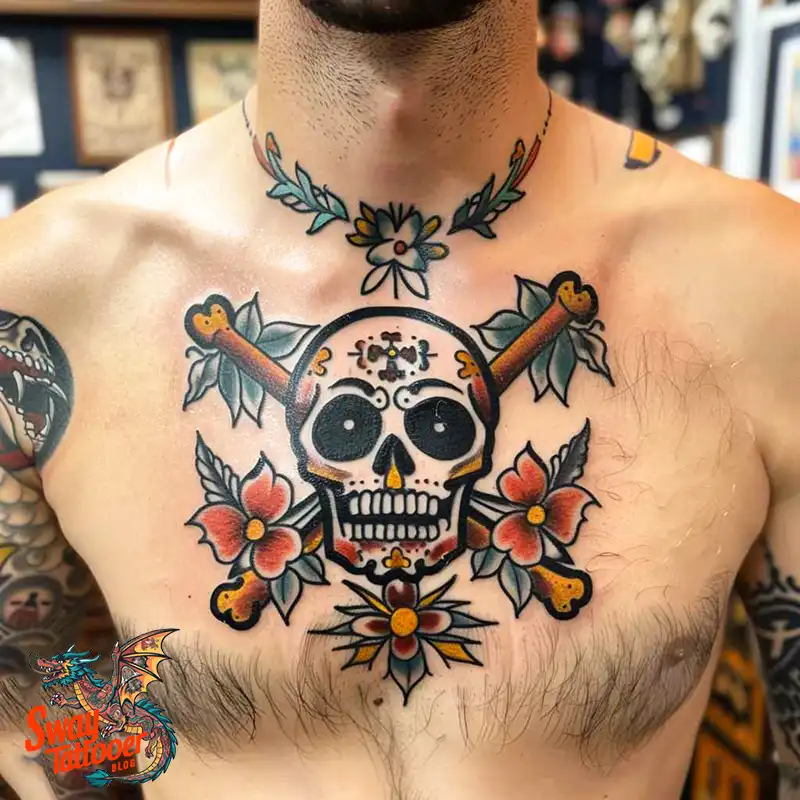
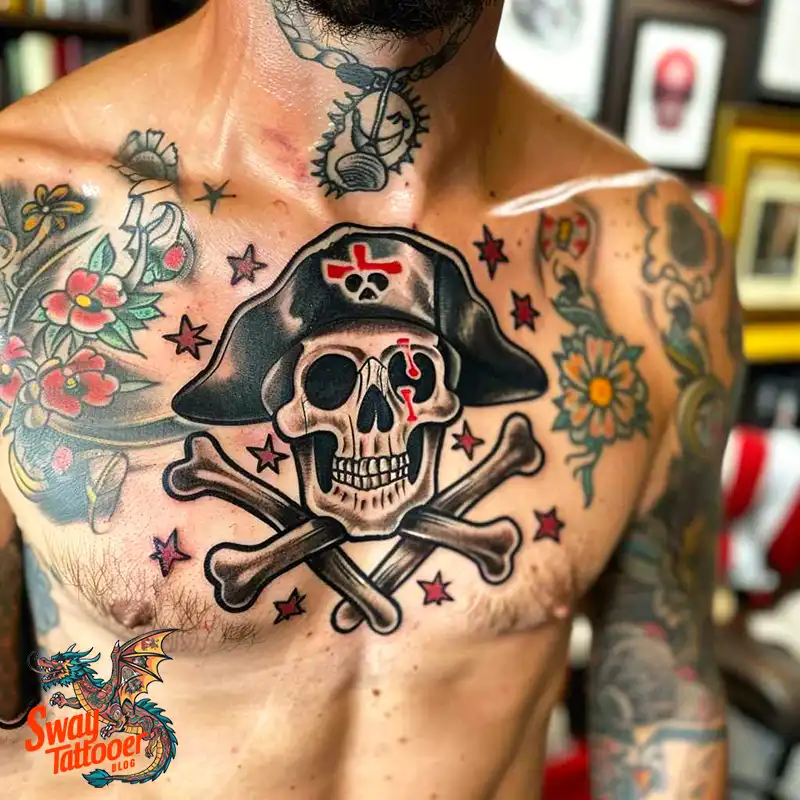
Jolly Roger with a Rose
Summary: This design features a skull and crossbones with a rose woven through or placed alongside it.
Relevance: The juxtaposition of the skull with a rose can symbolize the duality of life and death, beauty and danger. This design is often chosen for its aesthetic appeal and deeper philosophical meaning. It can also serve as a tribute to lost loved ones, making it a poignant choice for a memorial tattoo.
Animated or Cartoonish Jolly Roger
Summary: A playful take on the traditional Jolly Roger, this design features a more whimsical, cartoon-like skull and crossbones.
Relevance: This lighthearted version is perfect for those who want to embrace the fun, adventurous side of pirate lore without the darker connotations. It’s a popular choice among fans of pirate-themed cartoons, video games, and movies, offering a more approachable and family-friendly design.
Personalized Jolly Roger
Summary: A customized Jolly Roger that incorporates elements unique to the individual, such as initials, favorite colors, or specific symbols.
Relevance: Personalization allows the wearer to create a tattoo that is uniquely theirs, reflecting their personal identity or experiences. This design can blend traditional pirate imagery with modern elements, making it a versatile option that can carry personal significance beyond its historical roots.
FAQs:
Frequently Asked Questions (FAQ) About Jolly Roger Tattoos
1. What is a Jolly Roger tattoo?
A Jolly Roger tattoo typically features the iconic pirate flag emblem, which is a skull and crossbones. This symbol has become synonymous with pirates and represents various themes such as rebellion, adventure, and freedom. The design can vary widely, incorporating different artistic styles, additional elements, and personal touches.
2. What does a Jolly Roger tattoo symbolize?
A Jolly Roger tattoo can symbolize a range of concepts, including:
- Rebellion: This is one of the most common interpretations, reflecting a spirit that defies conventional norms and authority.
- Adventure: Pirates are often associated with thrilling escapades on the high seas, making the Jolly Roger a symbol of adventure and exploration.
- Freedom: Pirates lived outside the bounds of traditional societies, making the Jolly Roger a symbol of ultimate freedom and independence.
- Mortality: The skull motif naturally brings to mind themes of life and death, as well as the transient nature of existence.
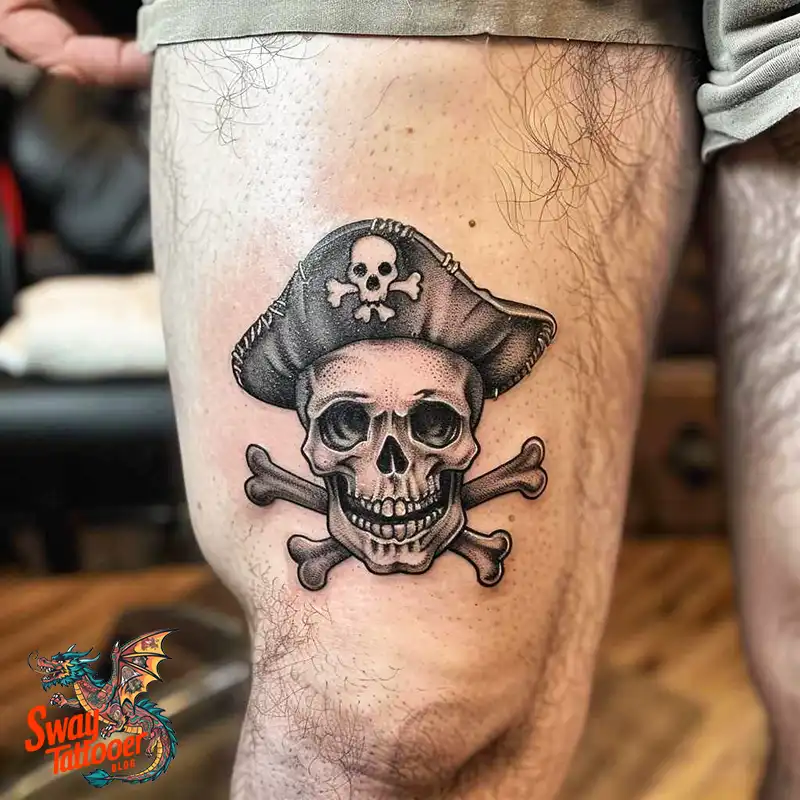
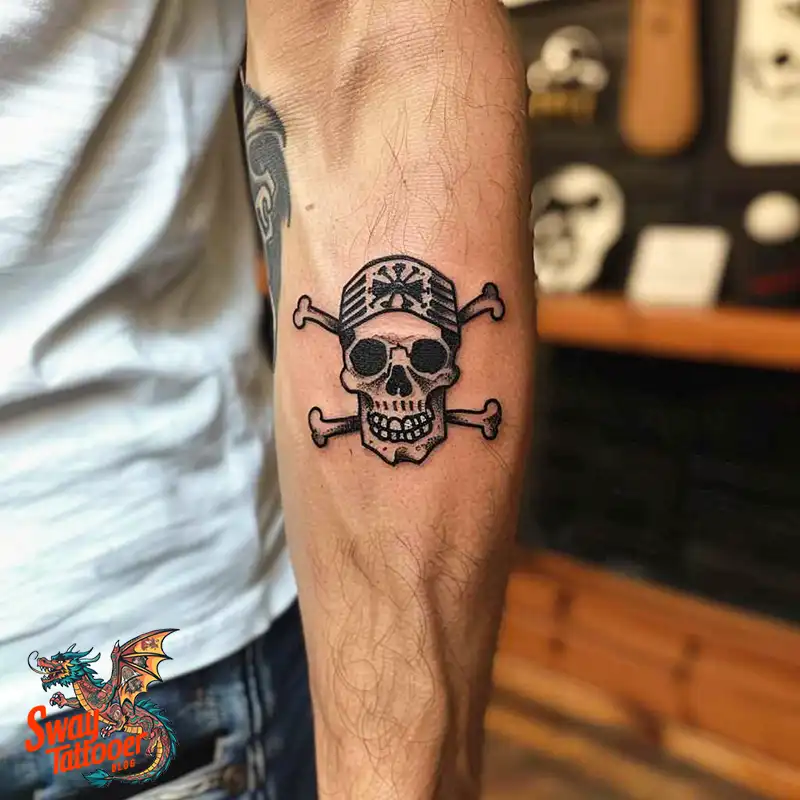
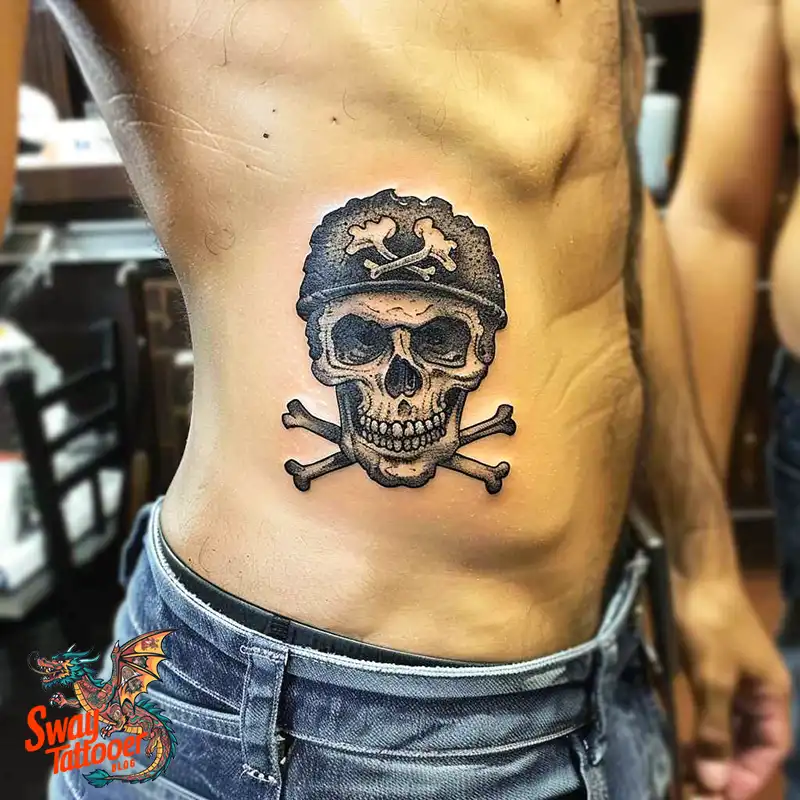
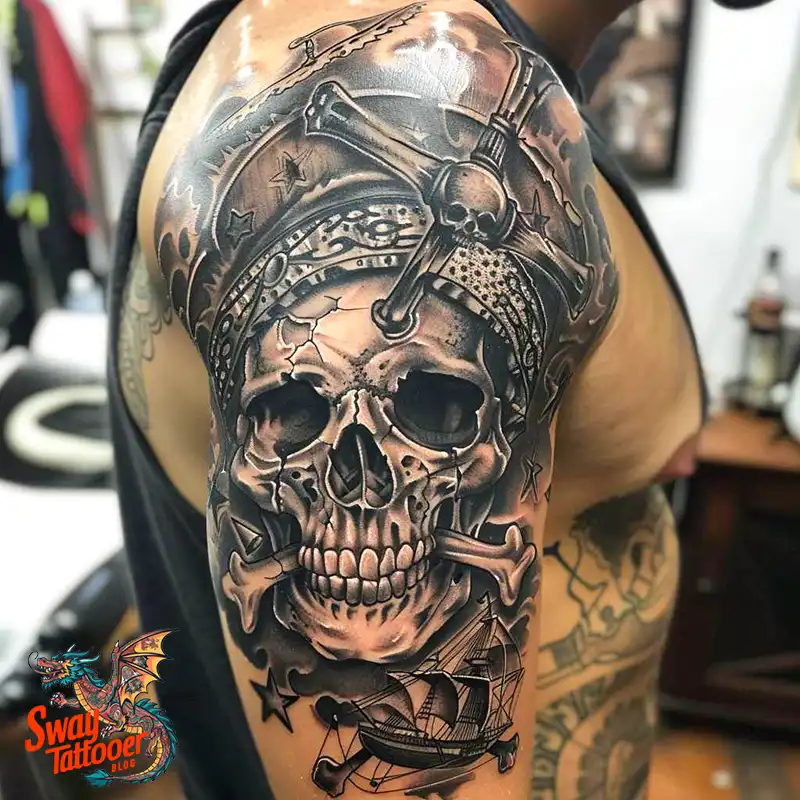
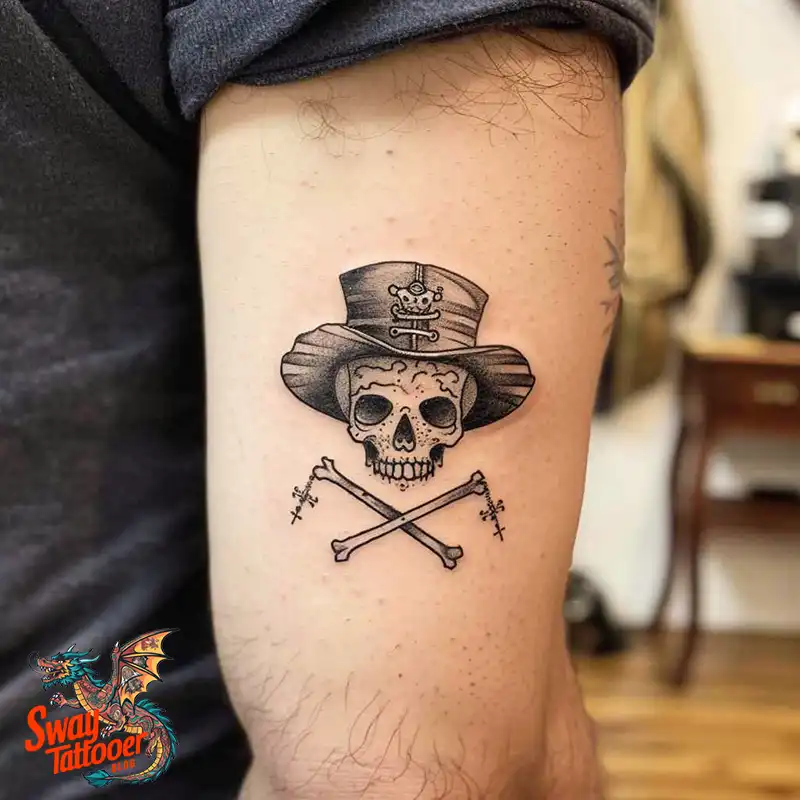
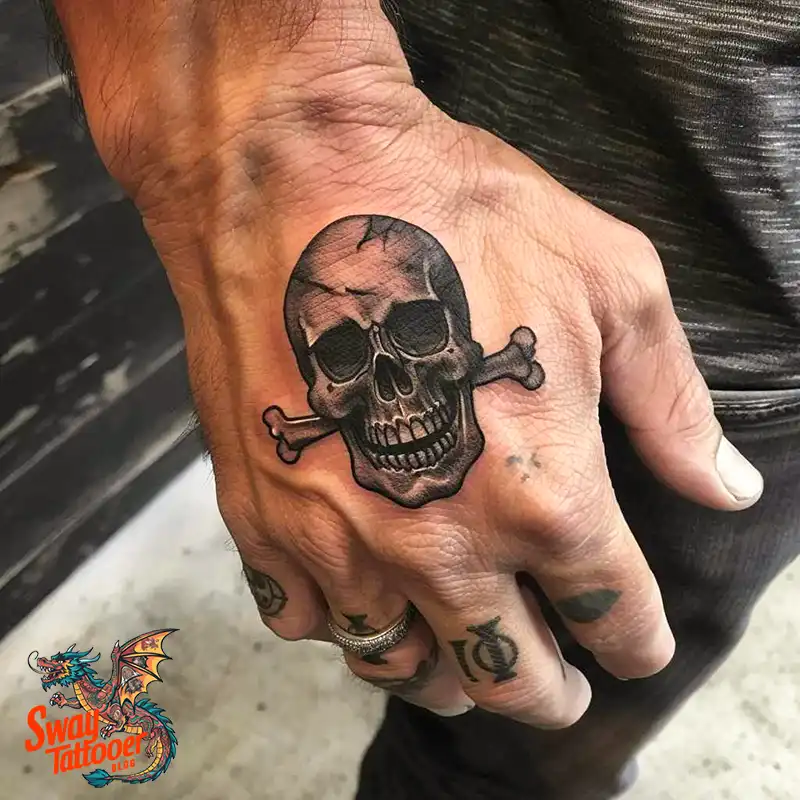
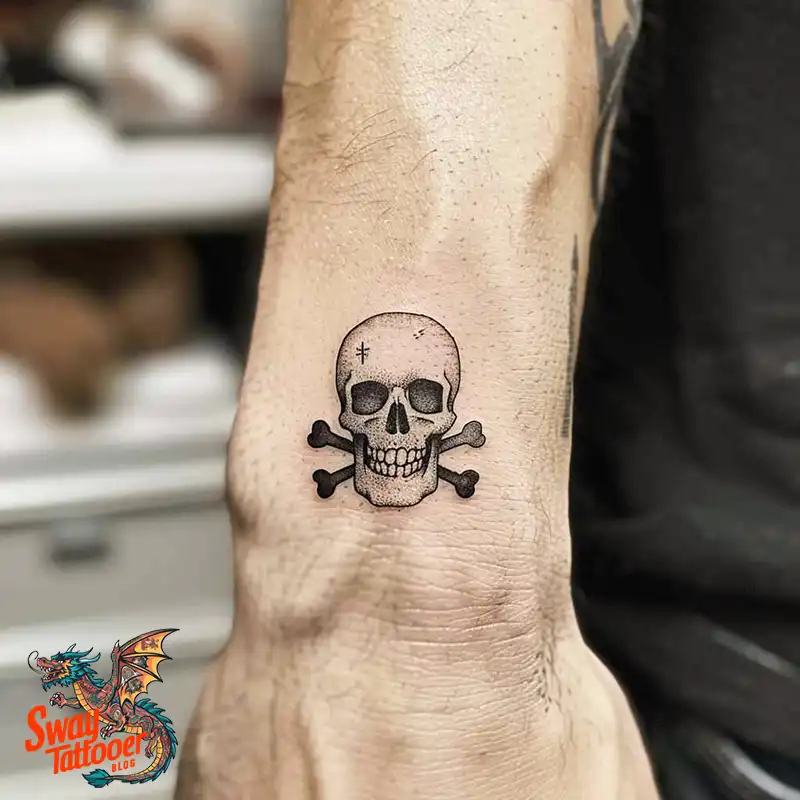
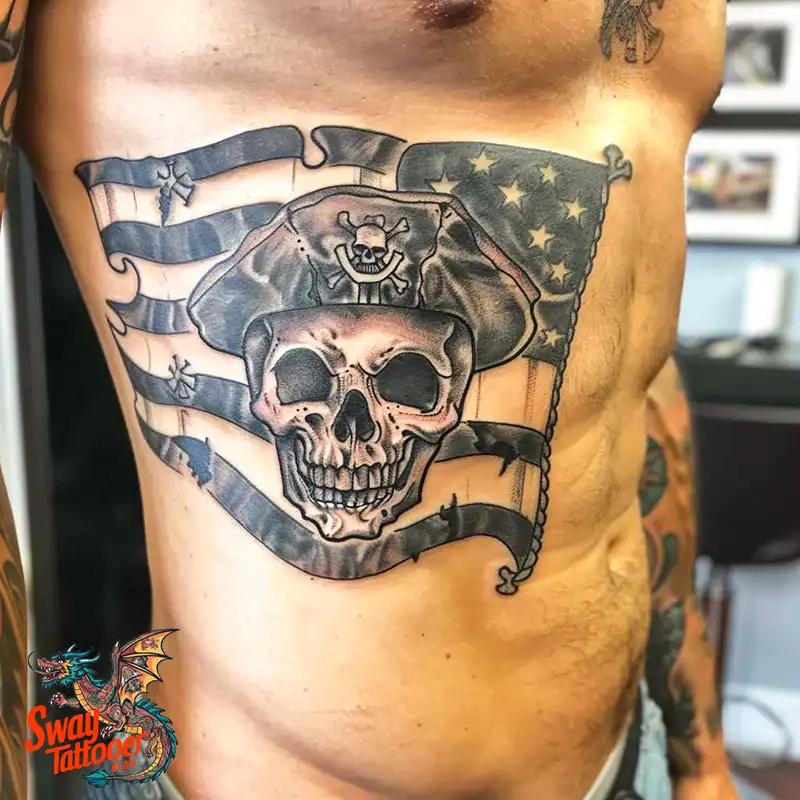
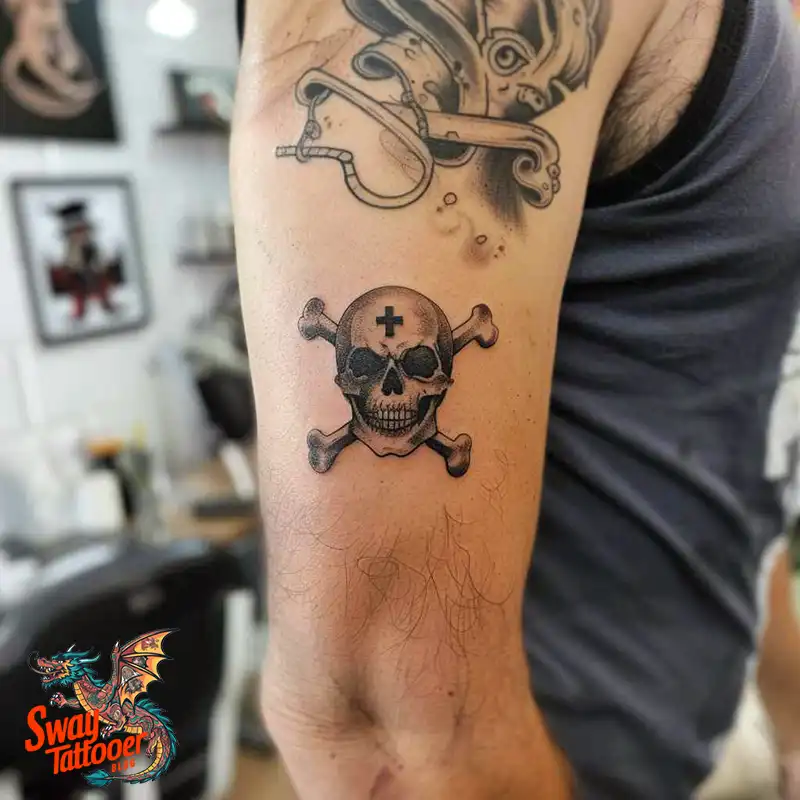
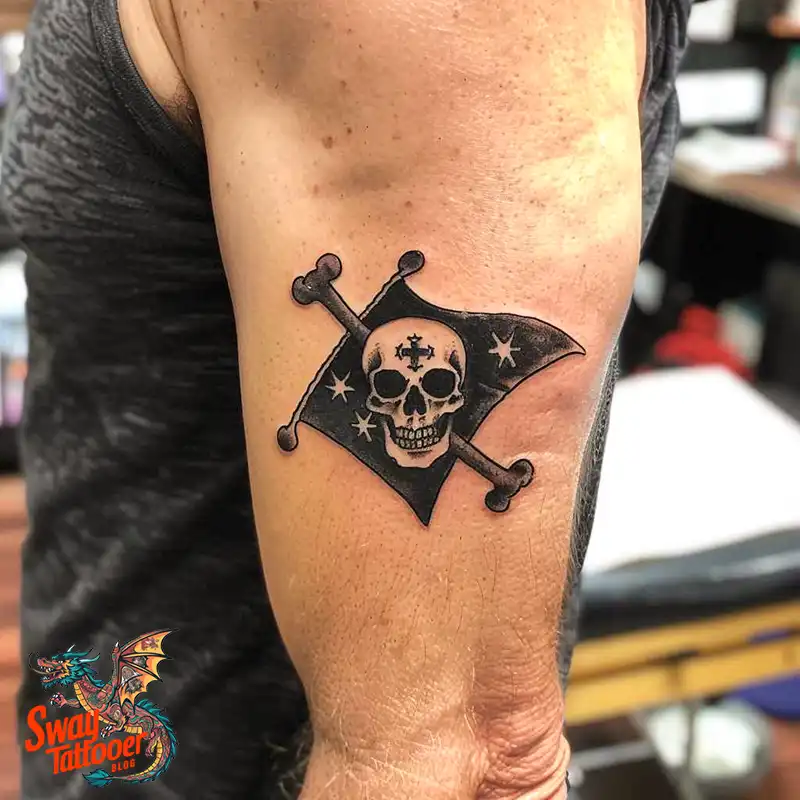
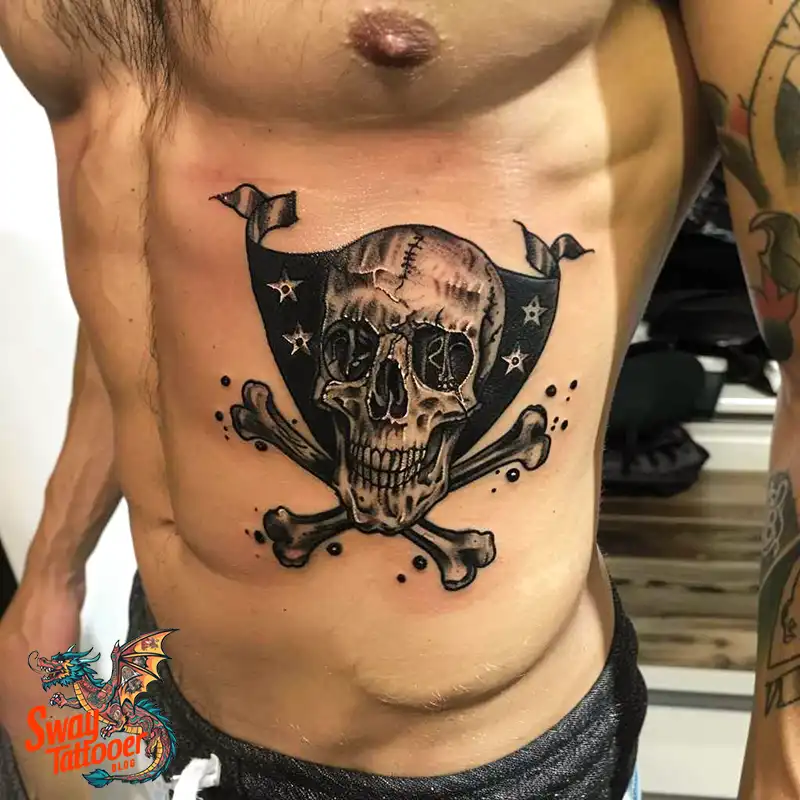
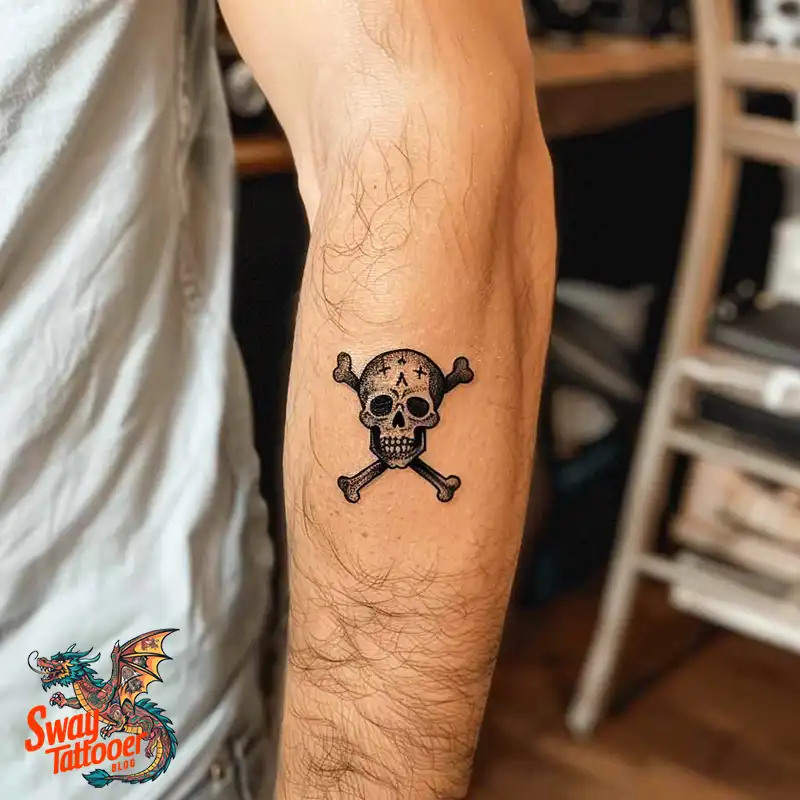
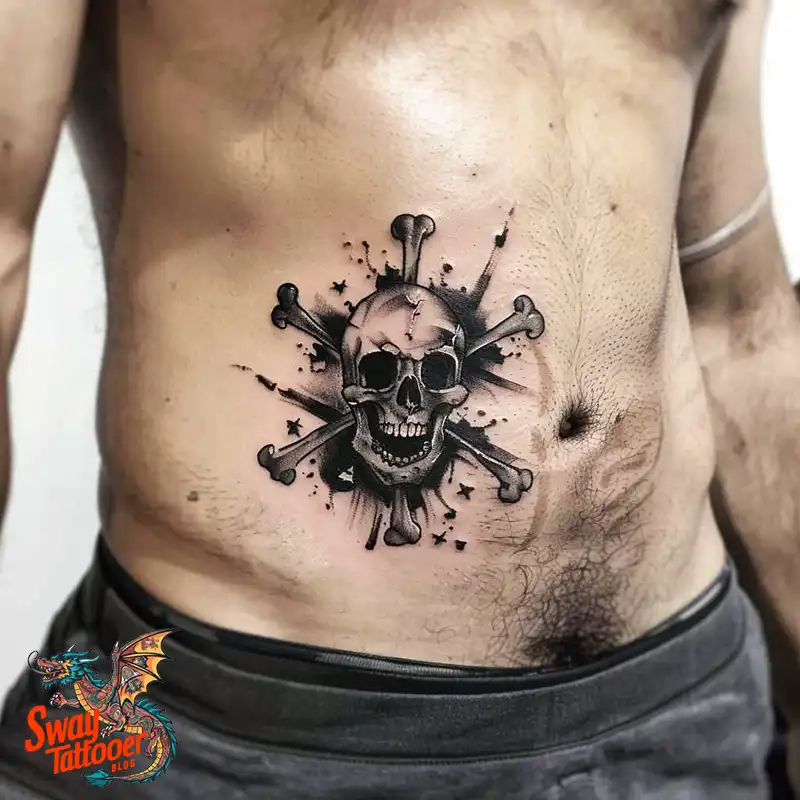
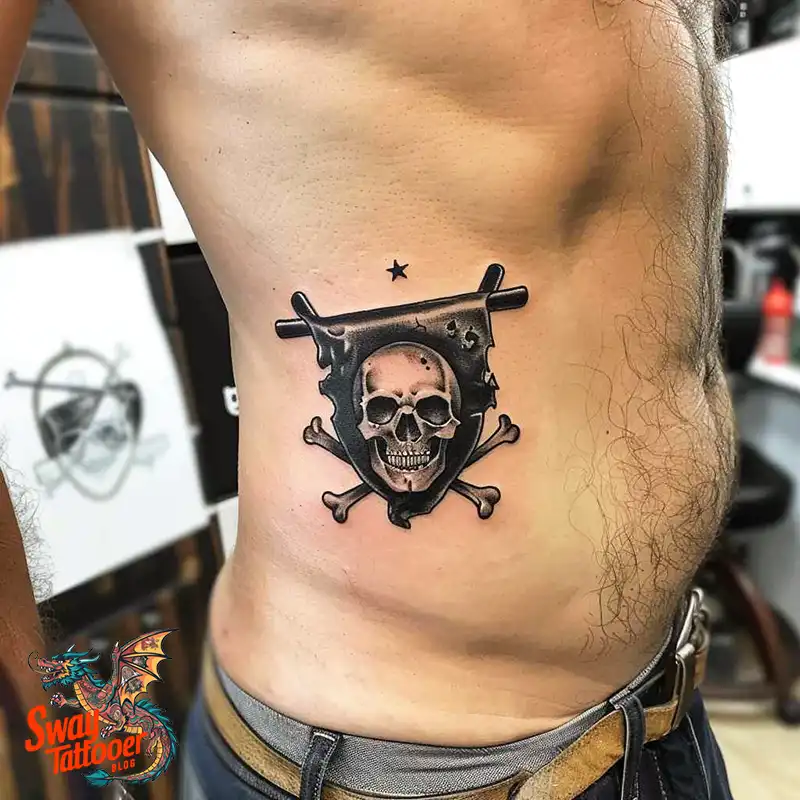
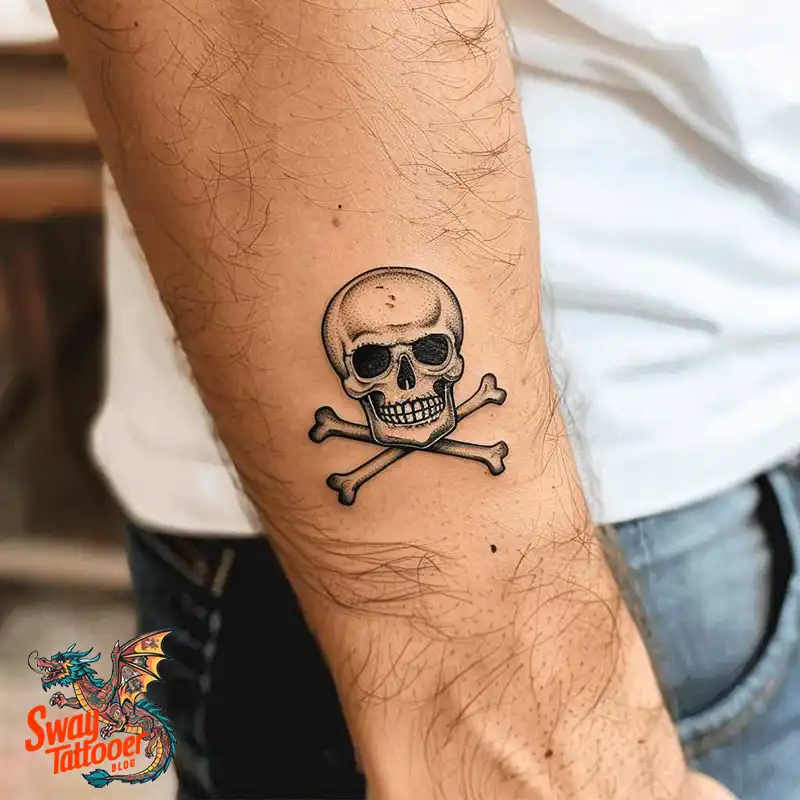
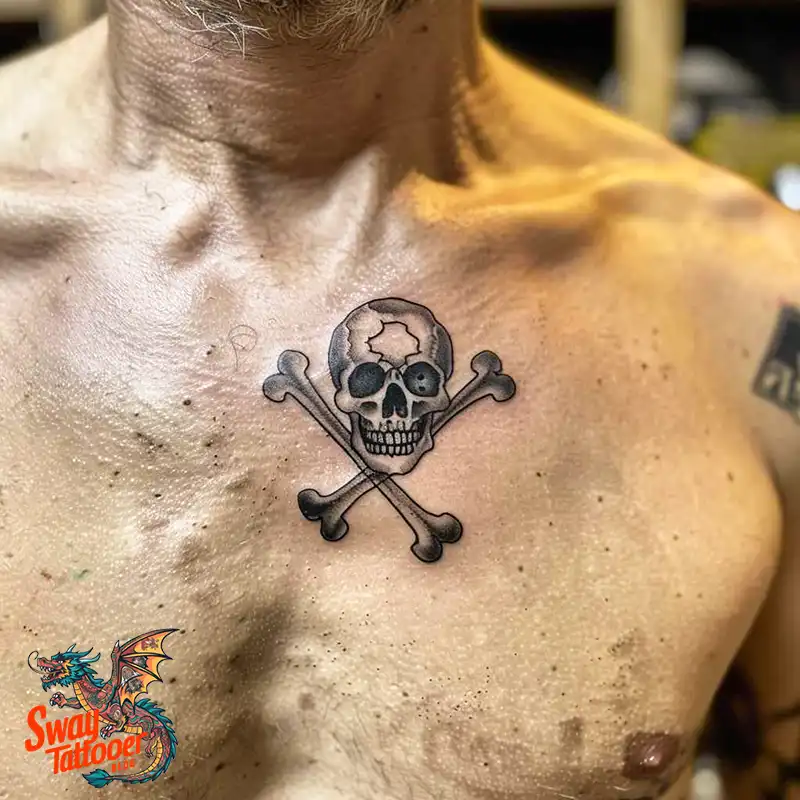
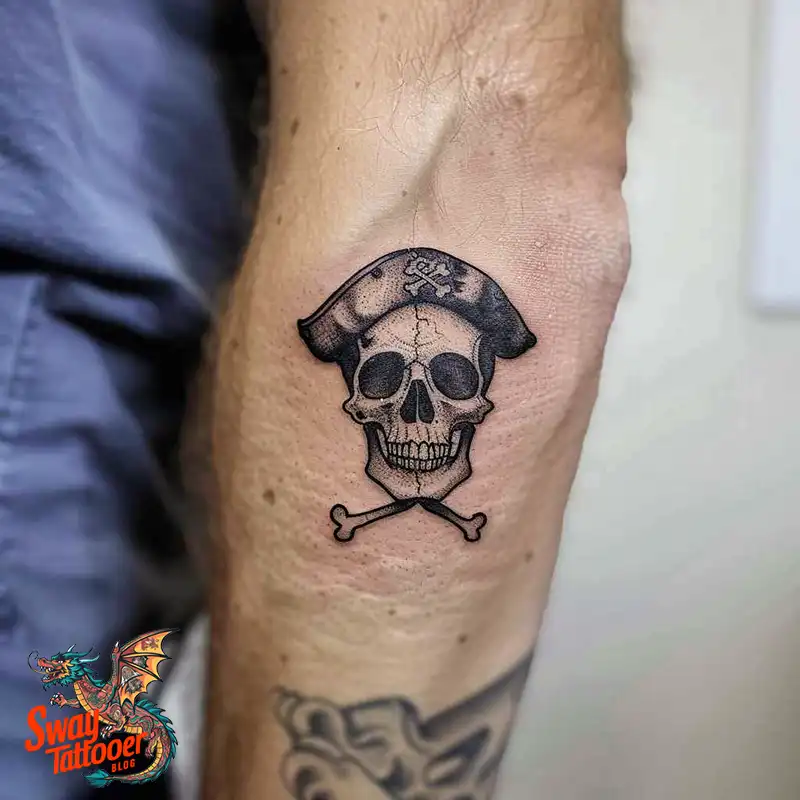
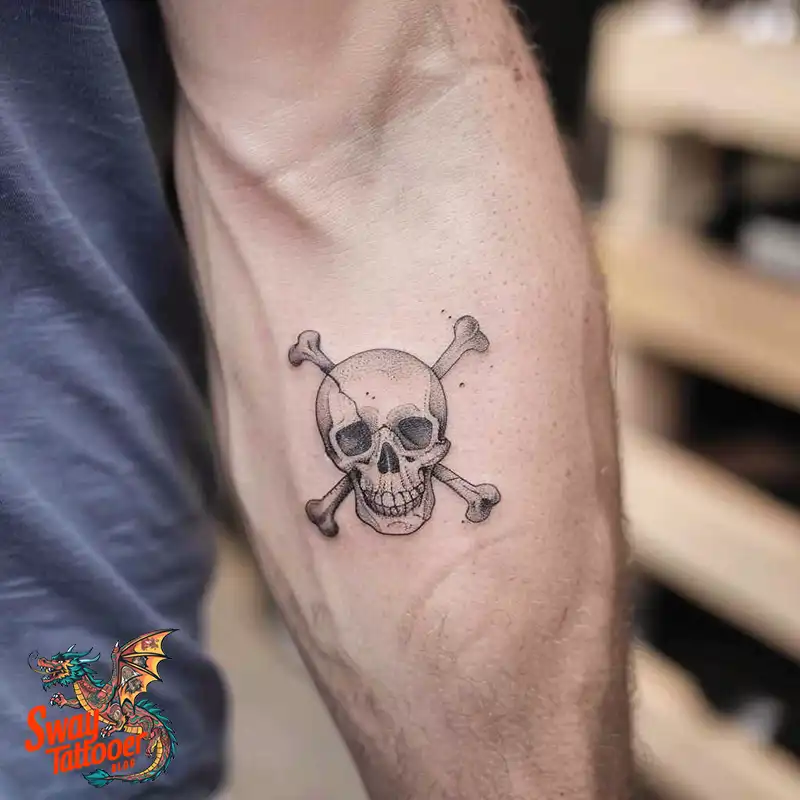
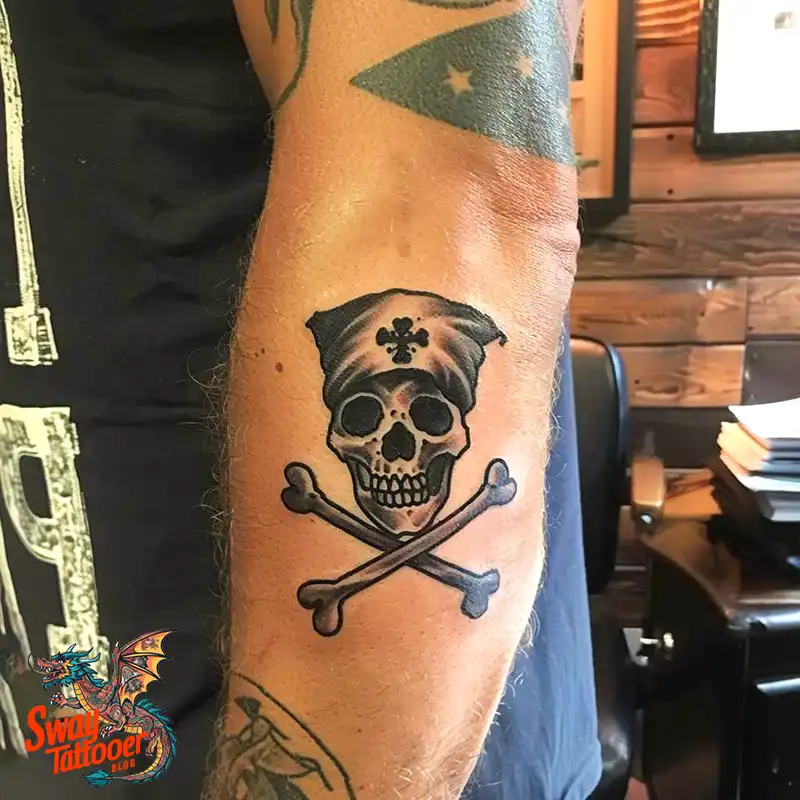
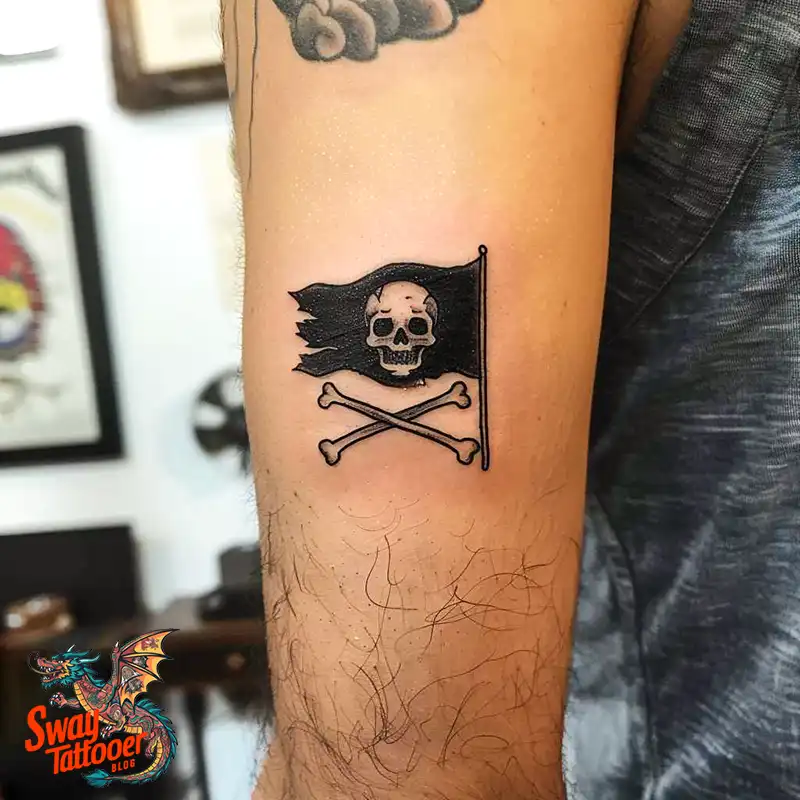
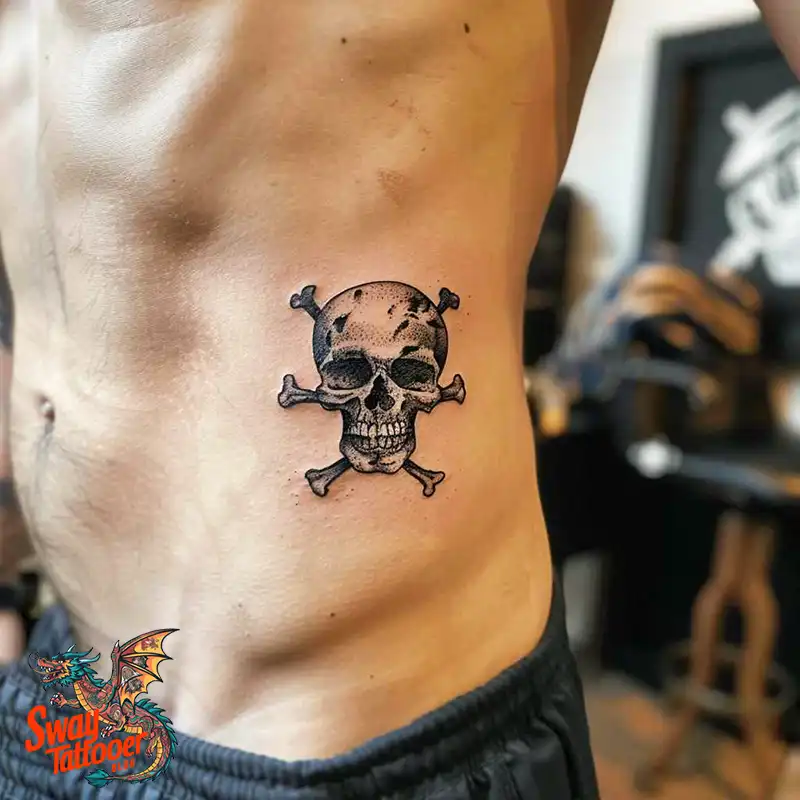
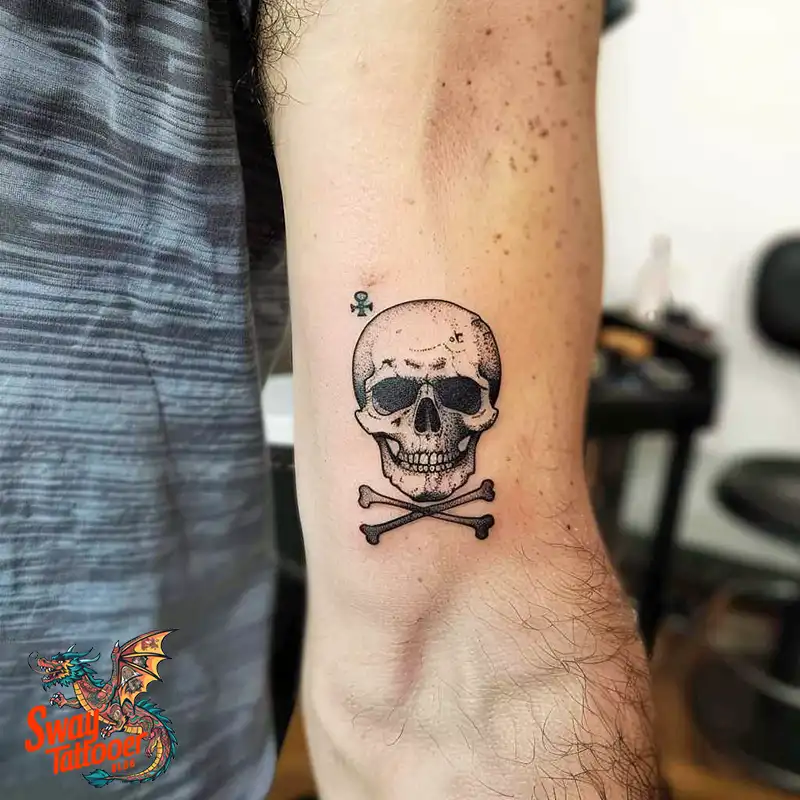
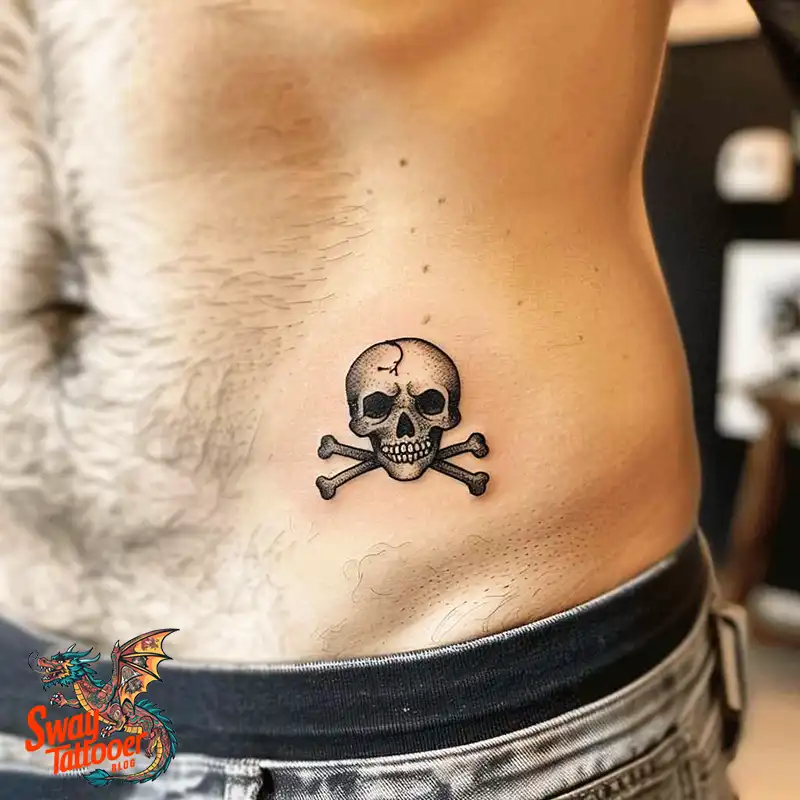
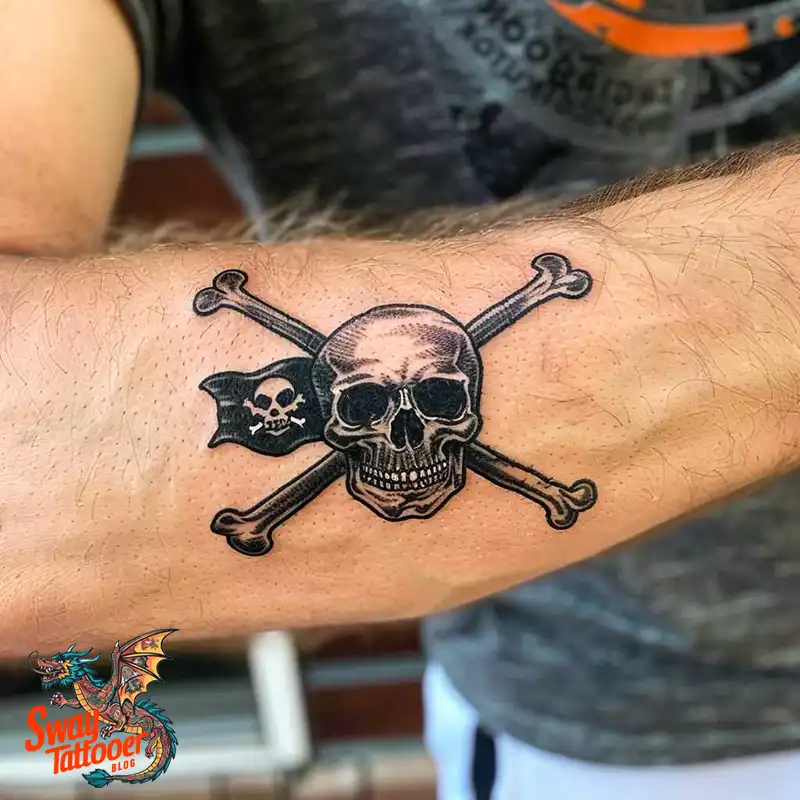
3. Are there different styles of Jolly Roger tattoos?
Yes, there are numerous styles of Jolly Roger tattoos to choose from, including:
- Traditional: Bold lines and vibrant colors, often with a classic skull and crossbones.
- Realistic: Highly detailed, often monochromatic designs that look very lifelike.
- Neo-traditional: Combines traditional elements with modern twists and more elaborate detailing.
- Cartoonish: Adds a playful or whimsical touch to the design, often with exaggerated features.
- Abstract: Takes artistic liberties to create unique, interpretive versions of the classic symbol.
4. How should I choose a tattoo artist for my Jolly Roger tattoo?
Selecting the right tattoo artist is crucial for getting a design you’ll love. Here are some tips:
- Research: Look for artists who specialize in the style you want. Review their portfolios to ensure their work aligns with your vision.
- Recommendations: Seek referrals from friends or online communities who have had positive experiences.
- Consultation: Have a discussion with potential artists to gauge their understanding of your concept and their ability to bring it to life.
5. Where on my body should I get a Jolly Roger tattoo?
The placement of your tattoo can affect both its impact and your personal comfort. Common placements include:
- Arm: Easy to display or conceal, and offers a good canvas size for detailed work.
- Back: Ideal for larger, more intricate designs.
- Chest: Can be easily hidden or shown off, and allows for a design with personal significance close to the heart.
- Leg: Offers a large space for the tattoo and can be easily covered if needed.
- Forearm: A popular choice for visibility and ease of extension with other designs.
6. How much does a Jolly Roger tattoo typically cost?
The cost of a Jolly Roger tattoo varies based on factors such as:
- Size: Larger tattoos require more time and resources, thus costing more.
- Detail: More intricate designs command higher prices.
- Artist’s Experience: Highly skilled or renowned artists may charge premium rates.
- Location: Tattoo prices can vary significantly depending on geographic location.
On average, you can expect to pay anywhere from $100 to $500 for a small to medium-sized Jolly Roger tattoo, while larger, more detailed designs could cost significantly more.
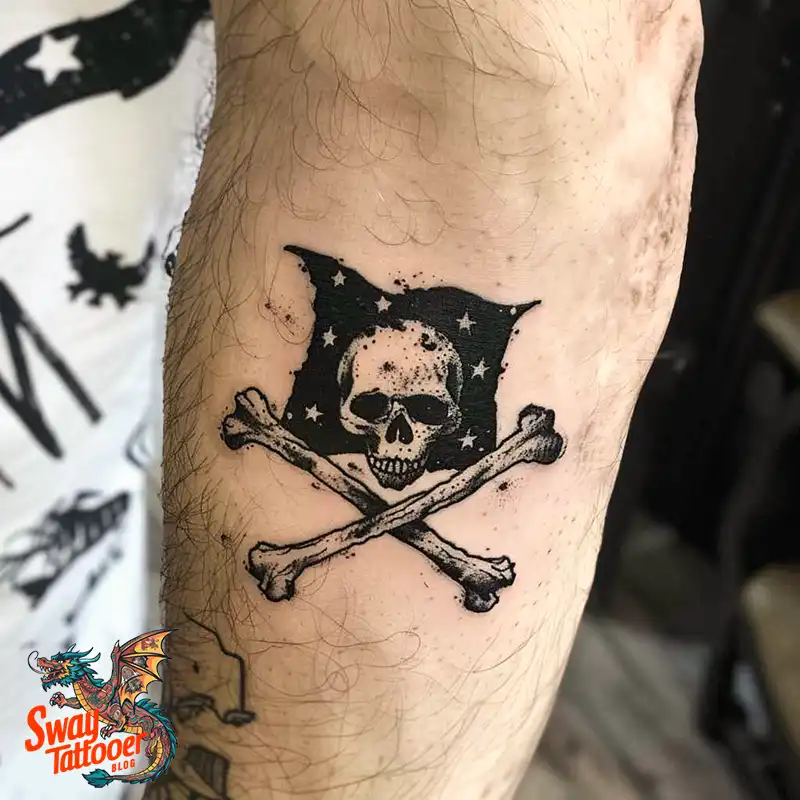
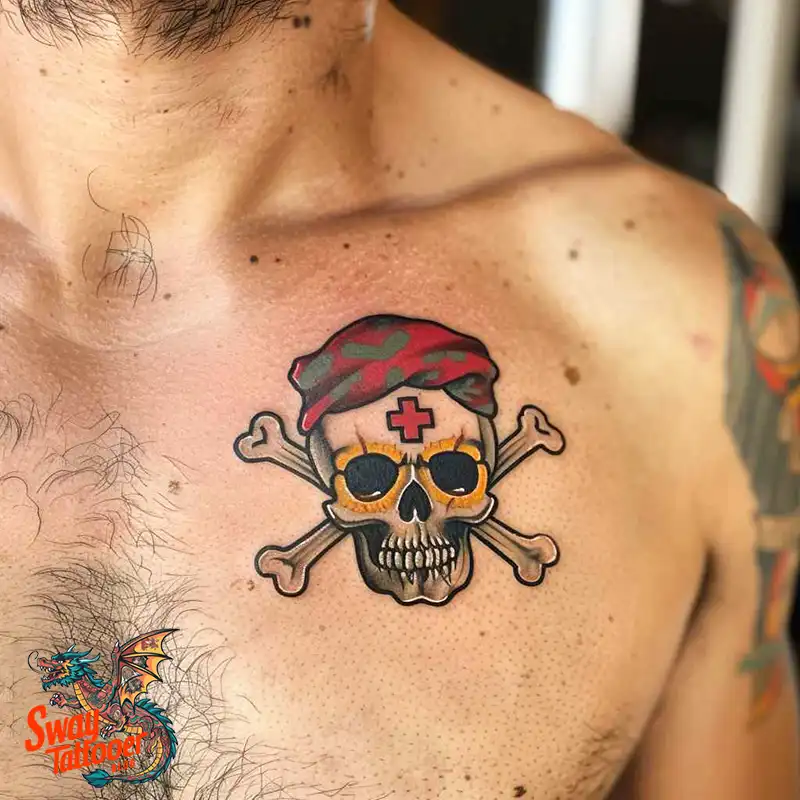
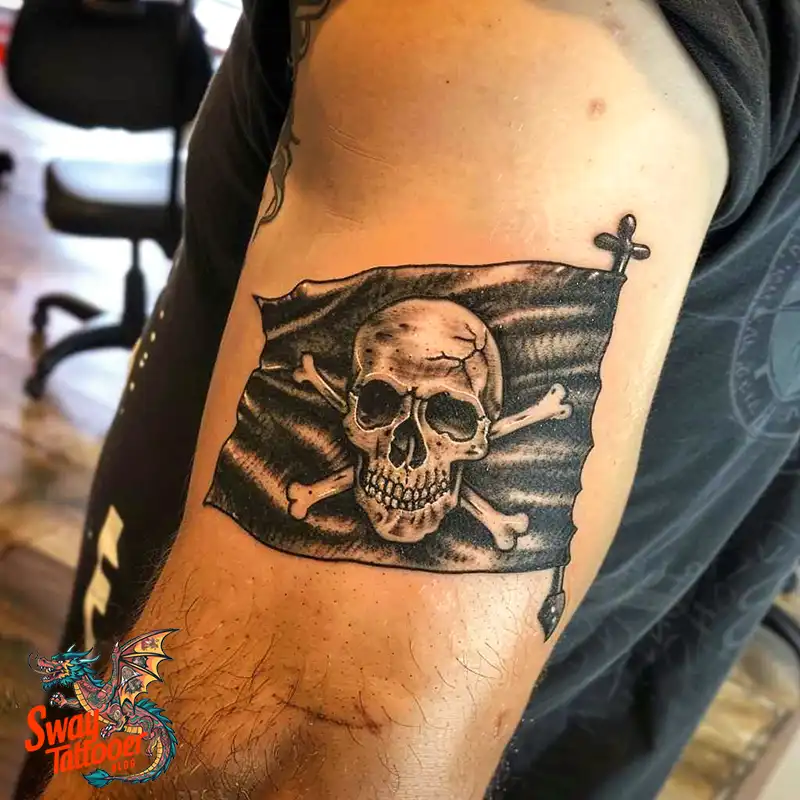
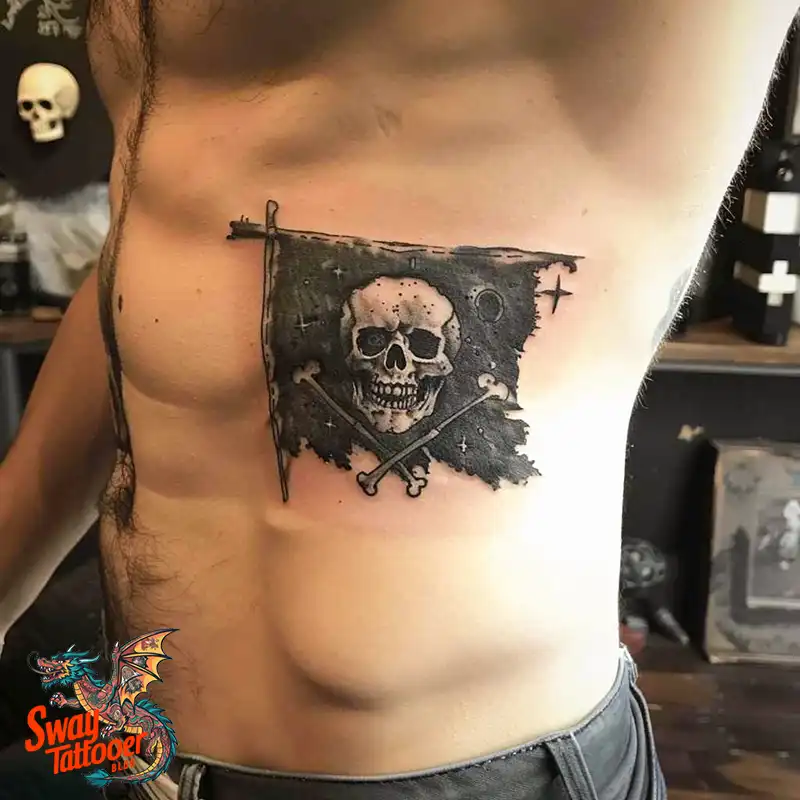
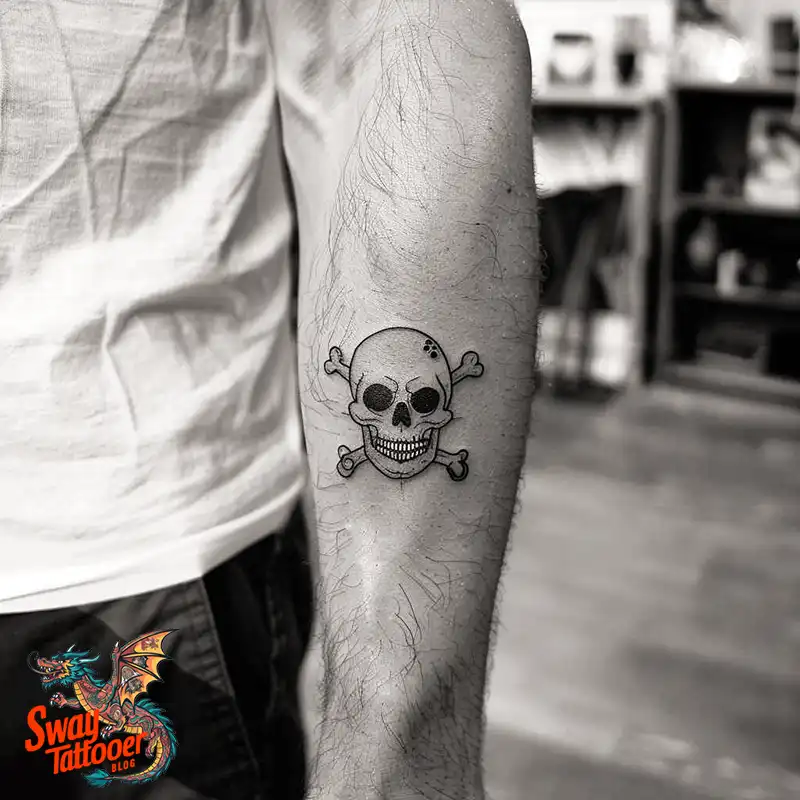
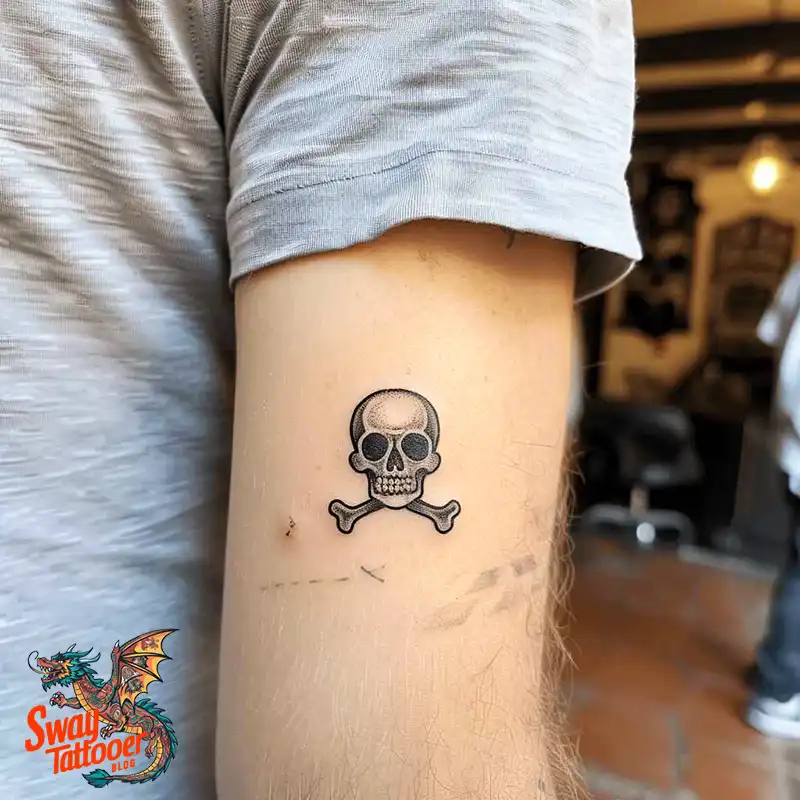
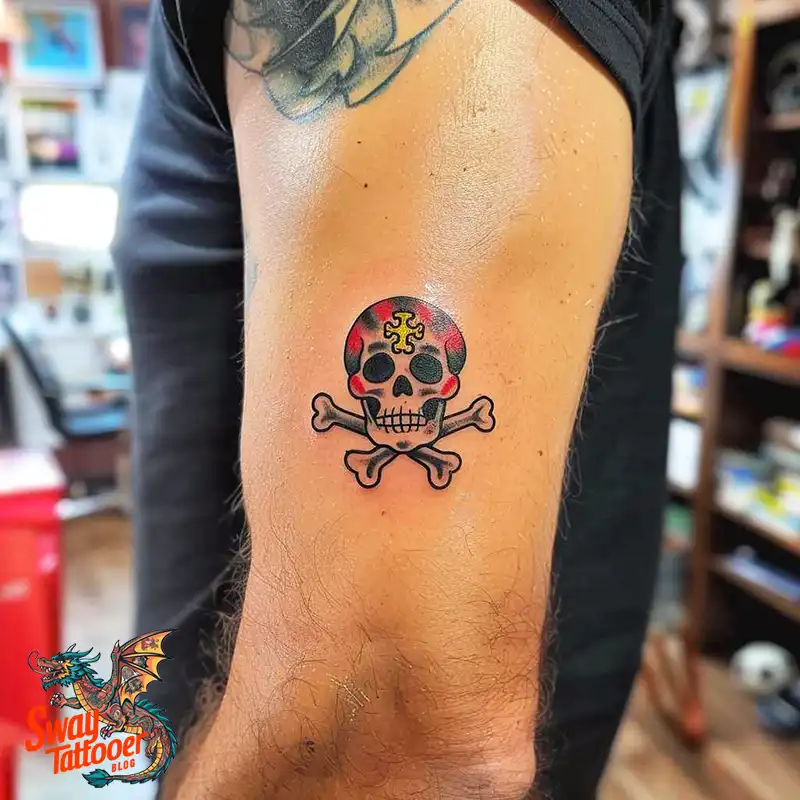
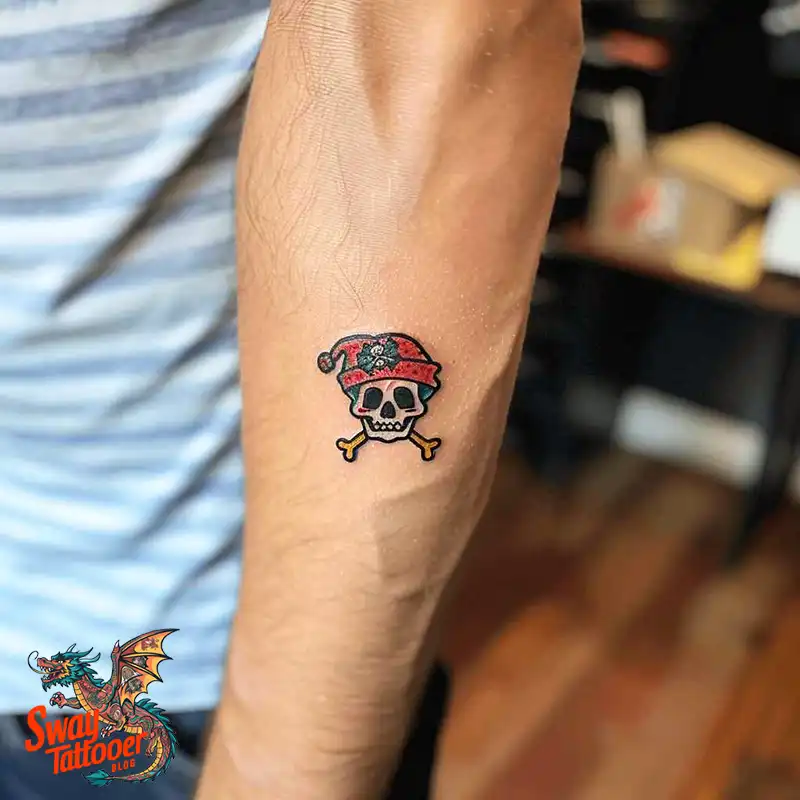
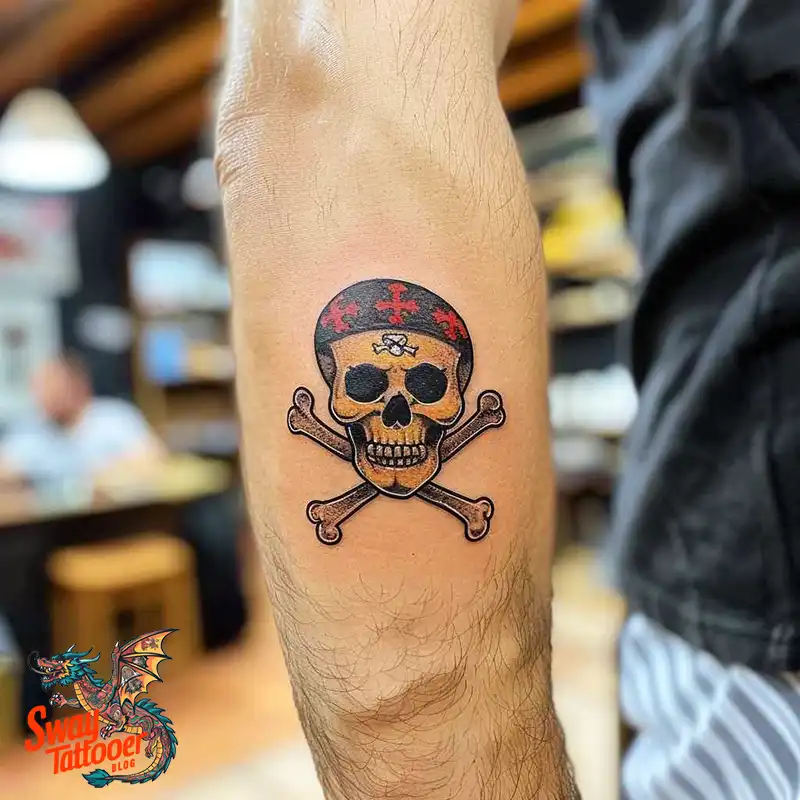
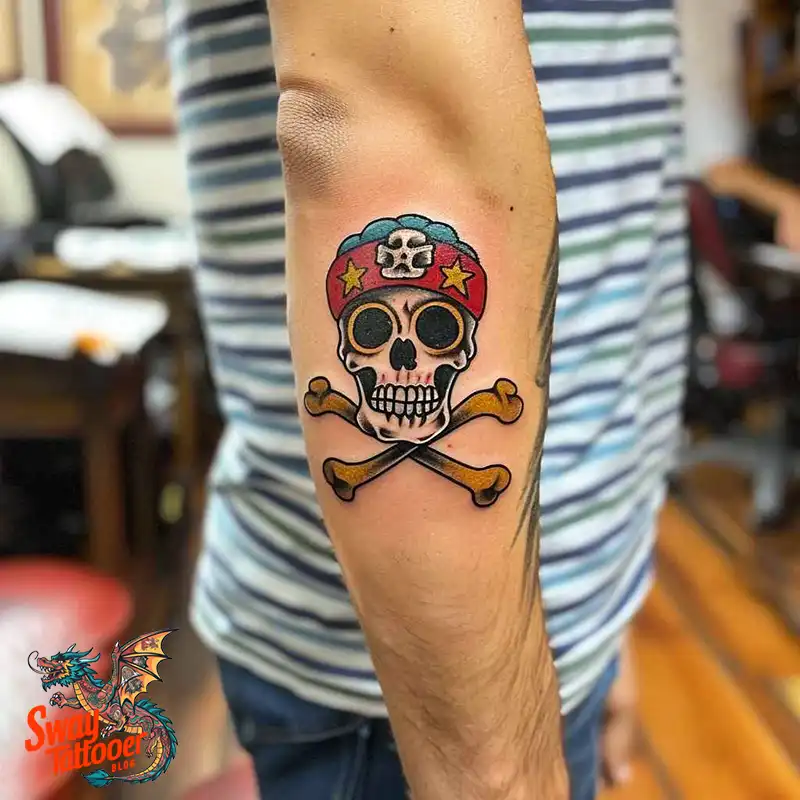
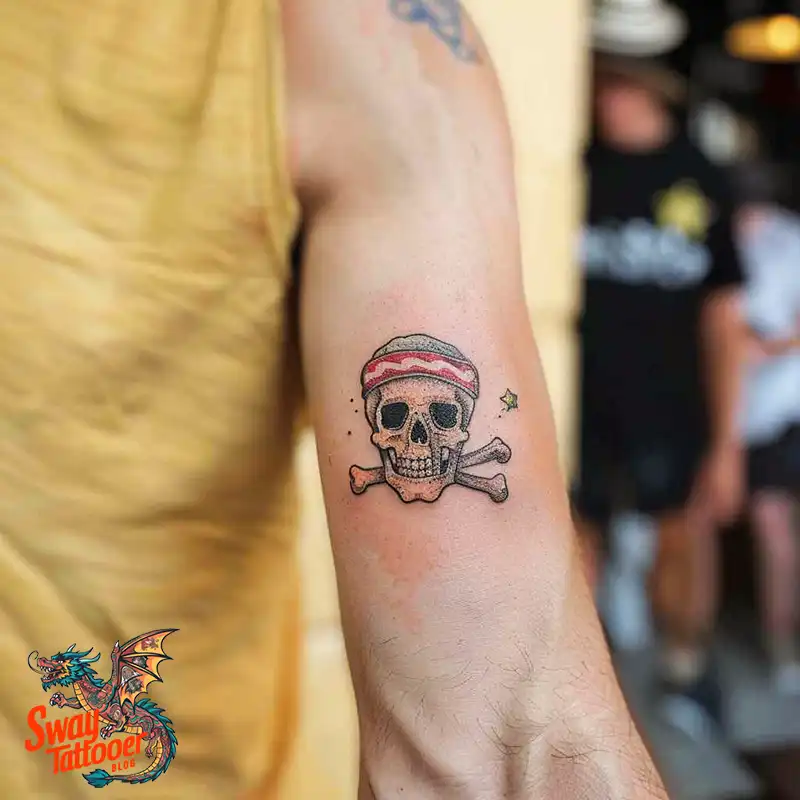
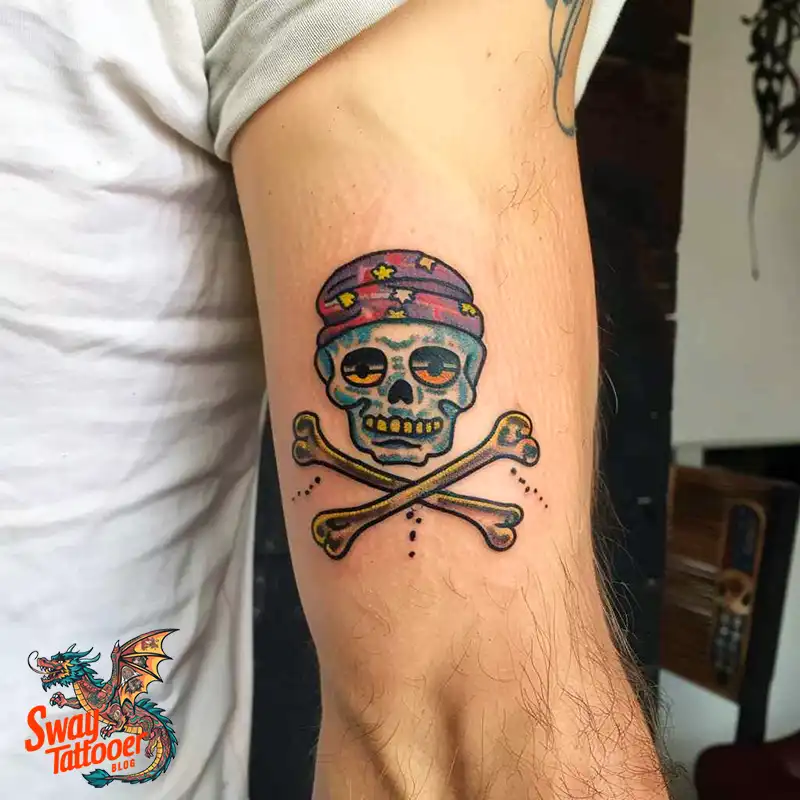
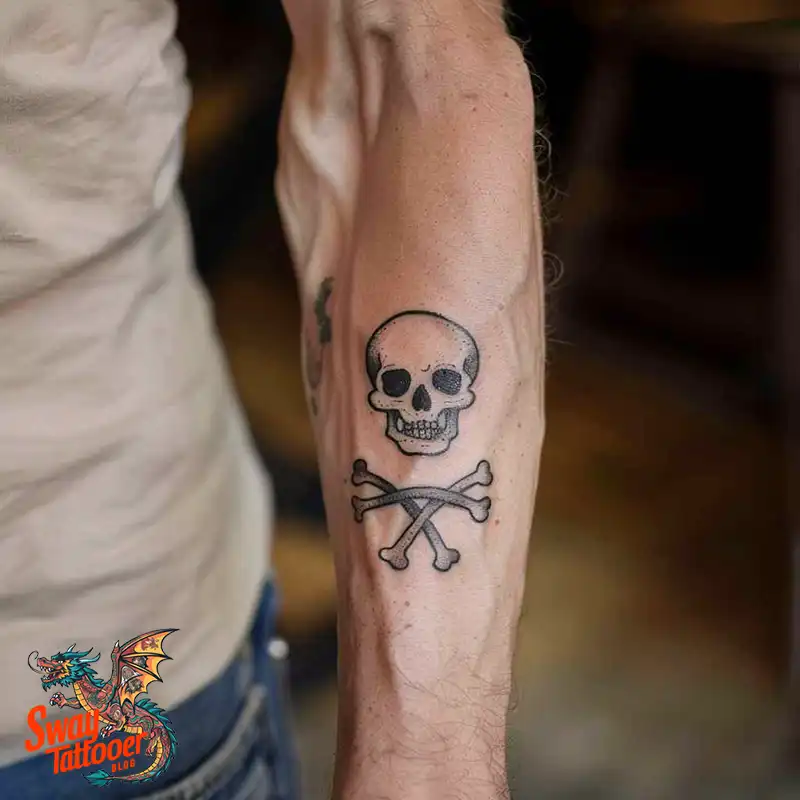
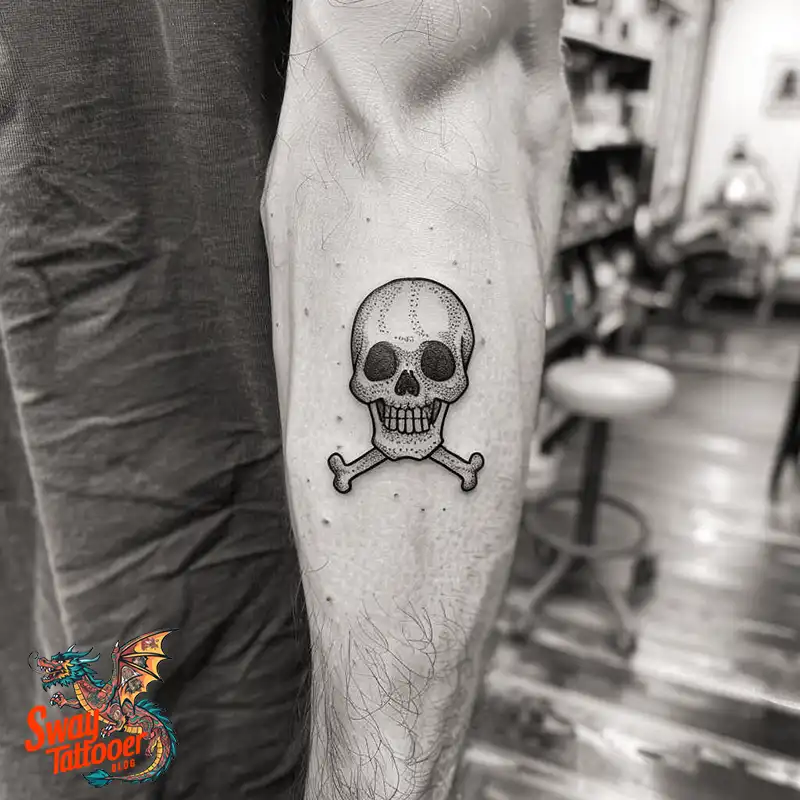
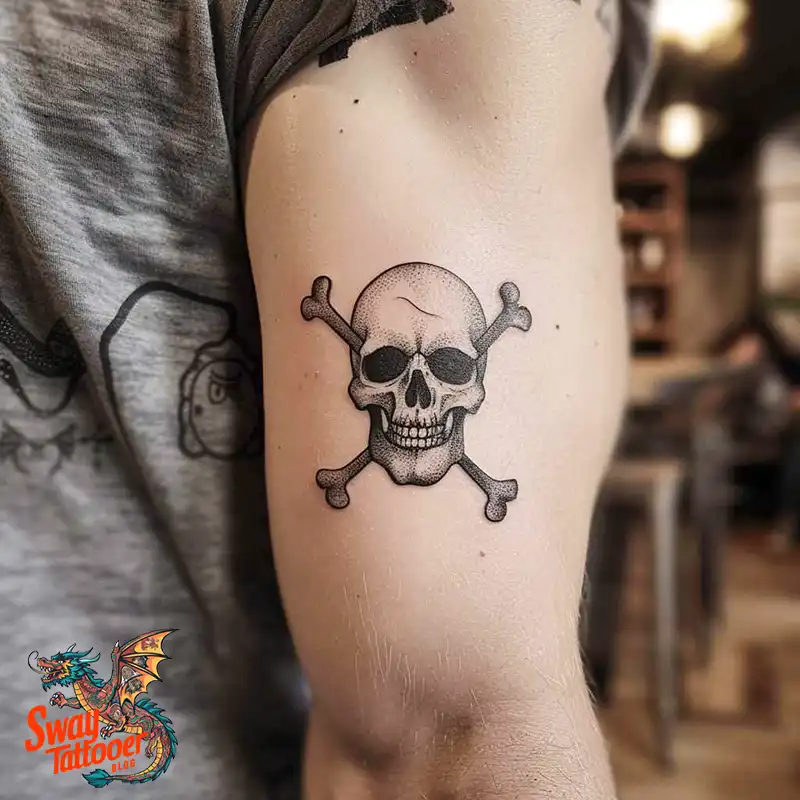
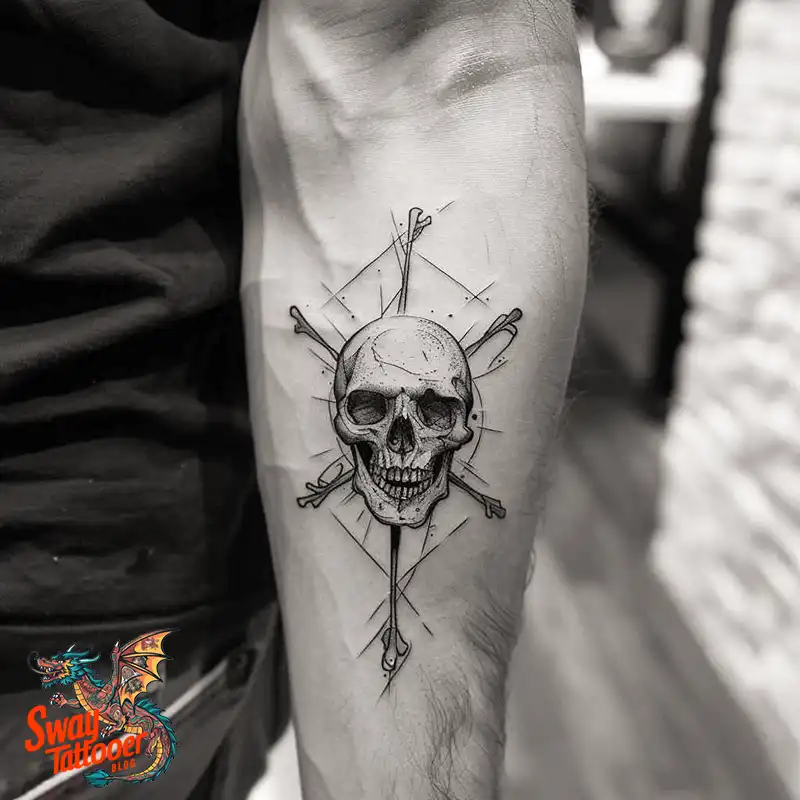
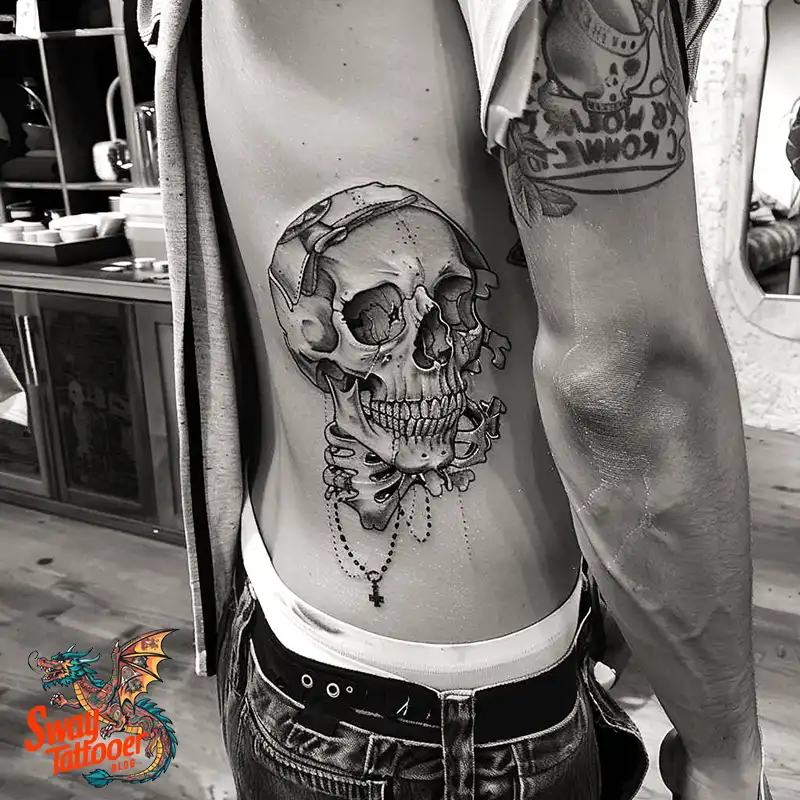
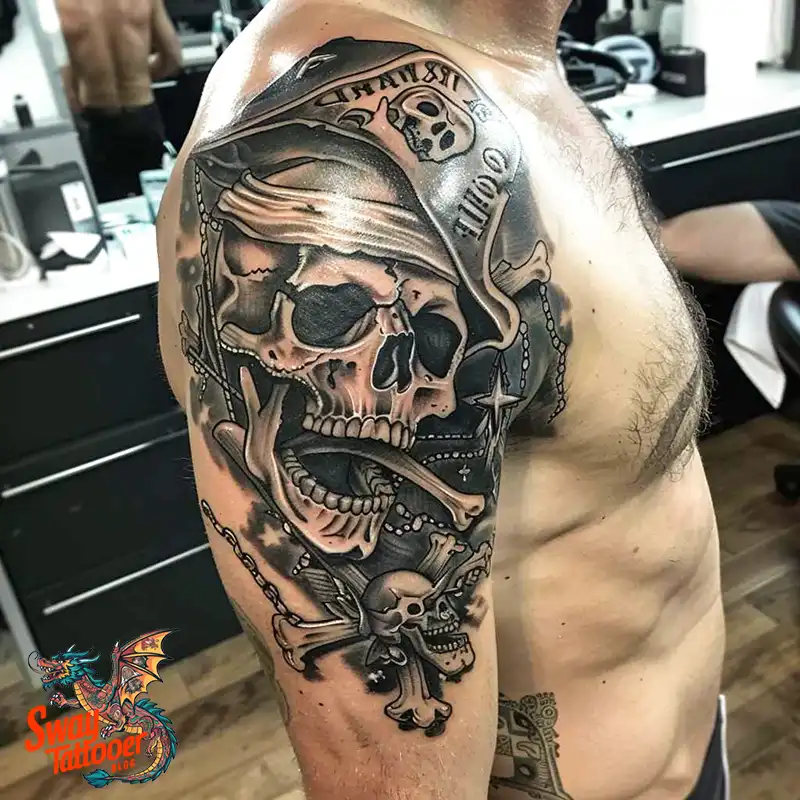
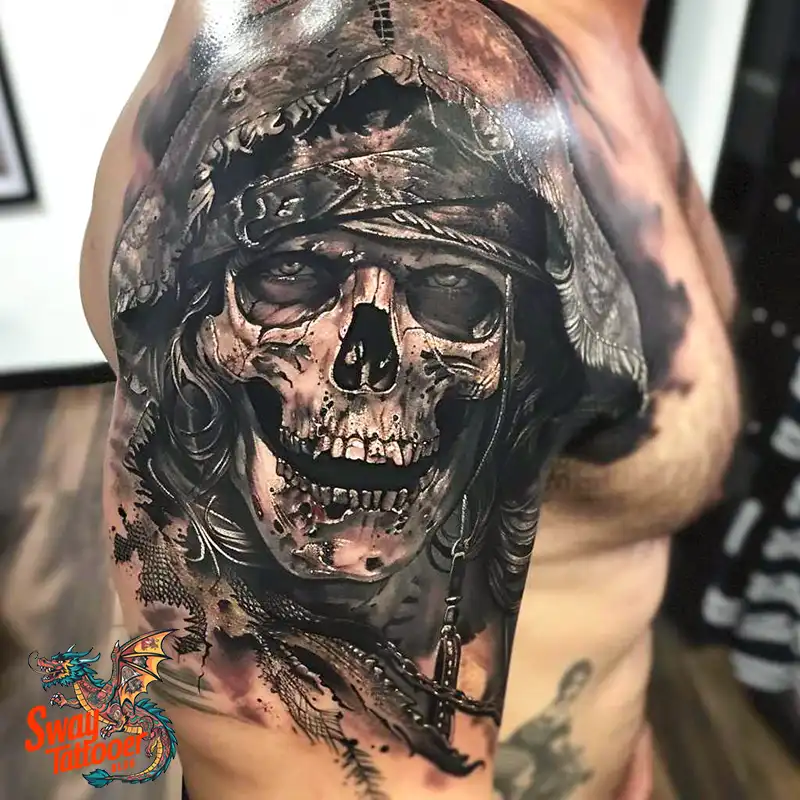
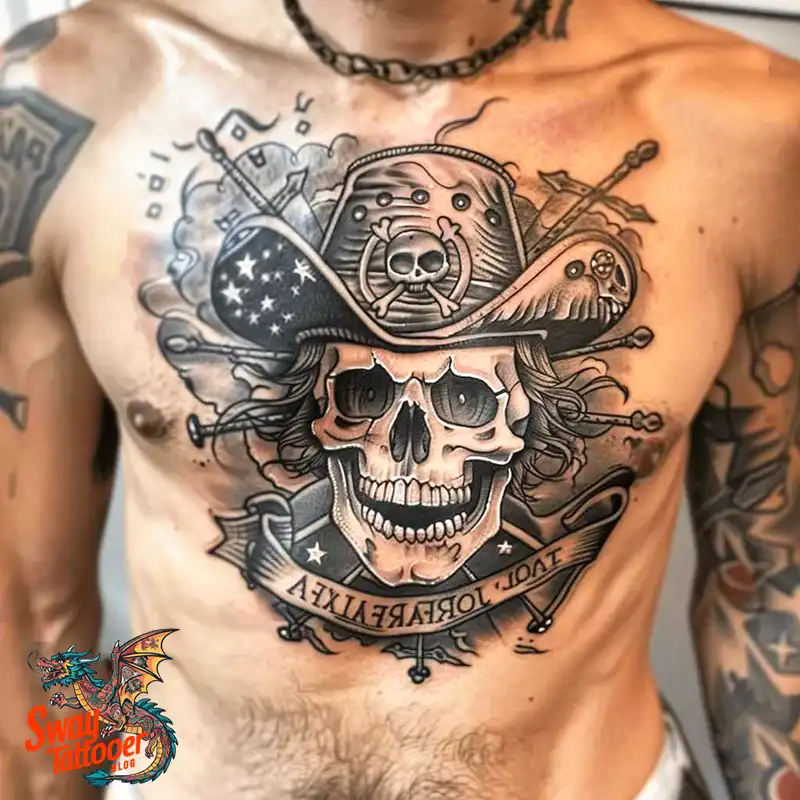
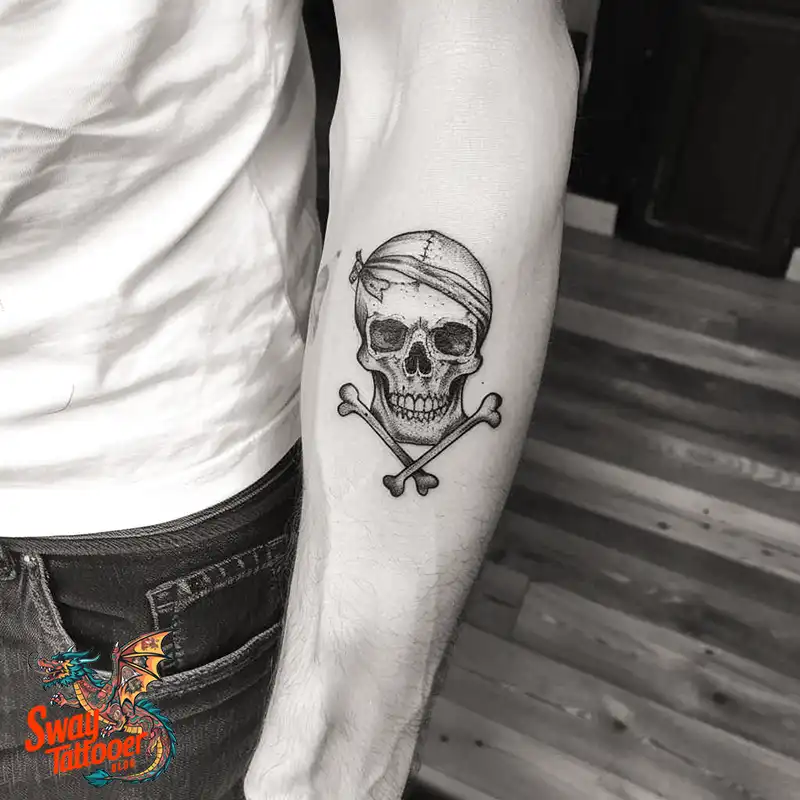
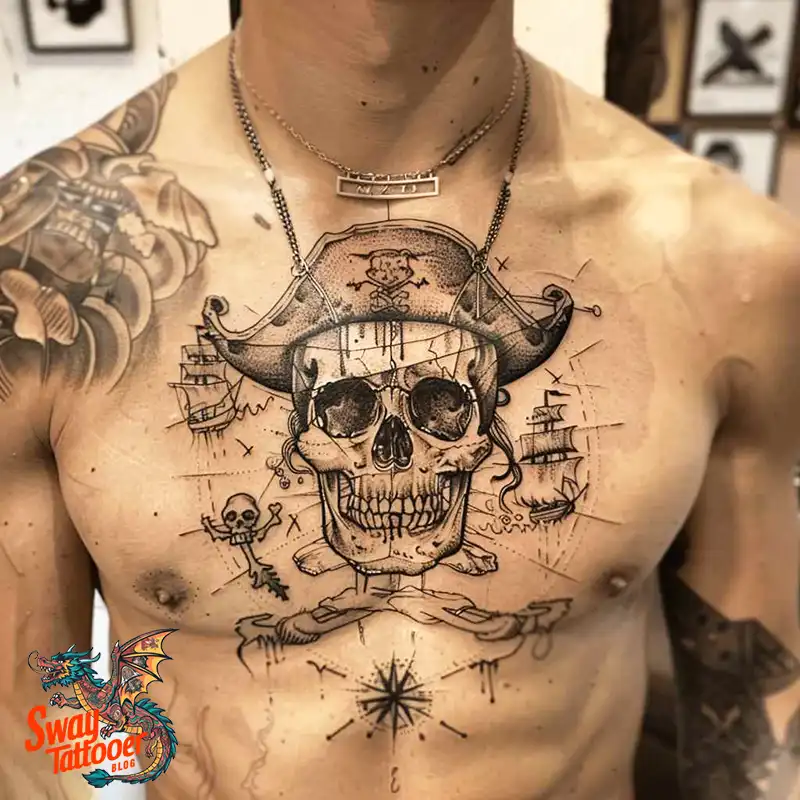
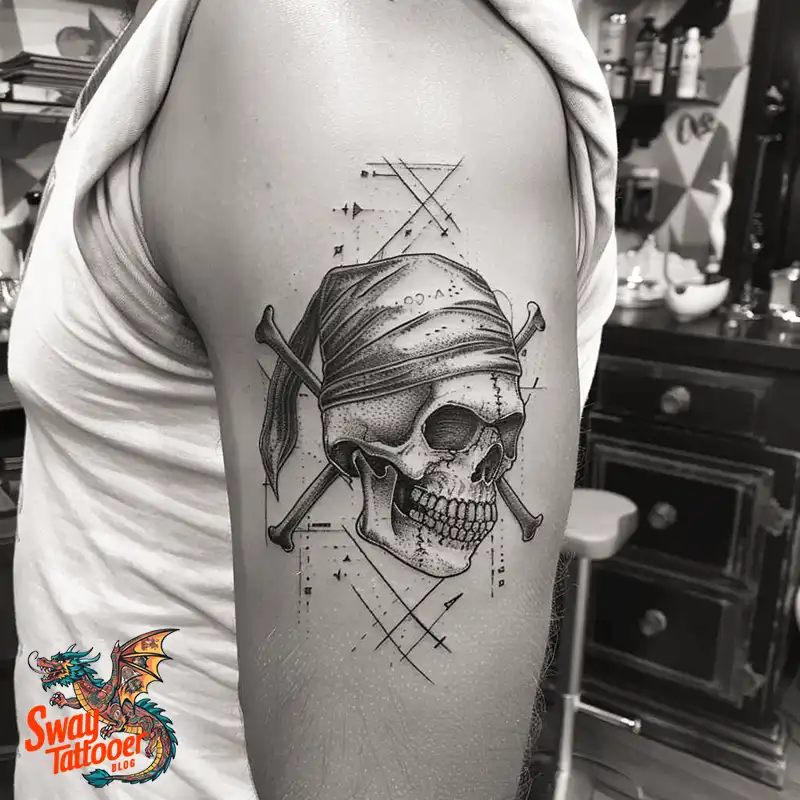
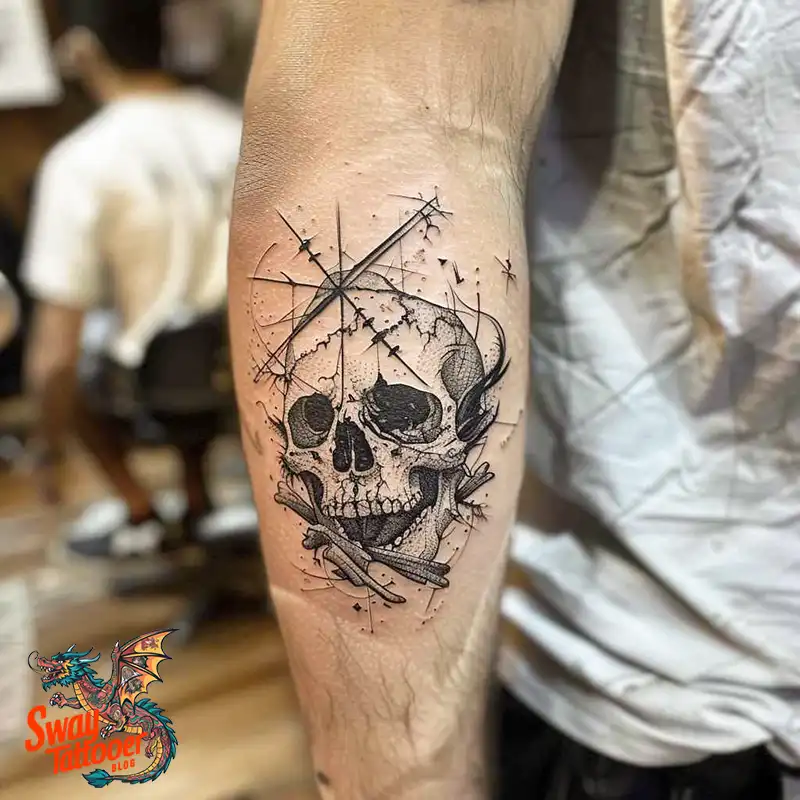
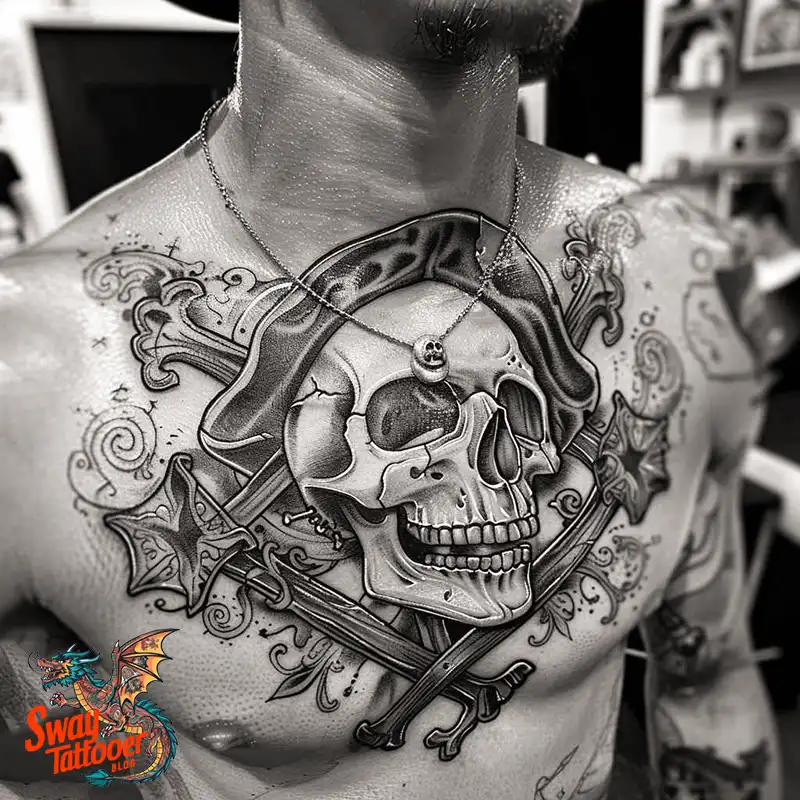
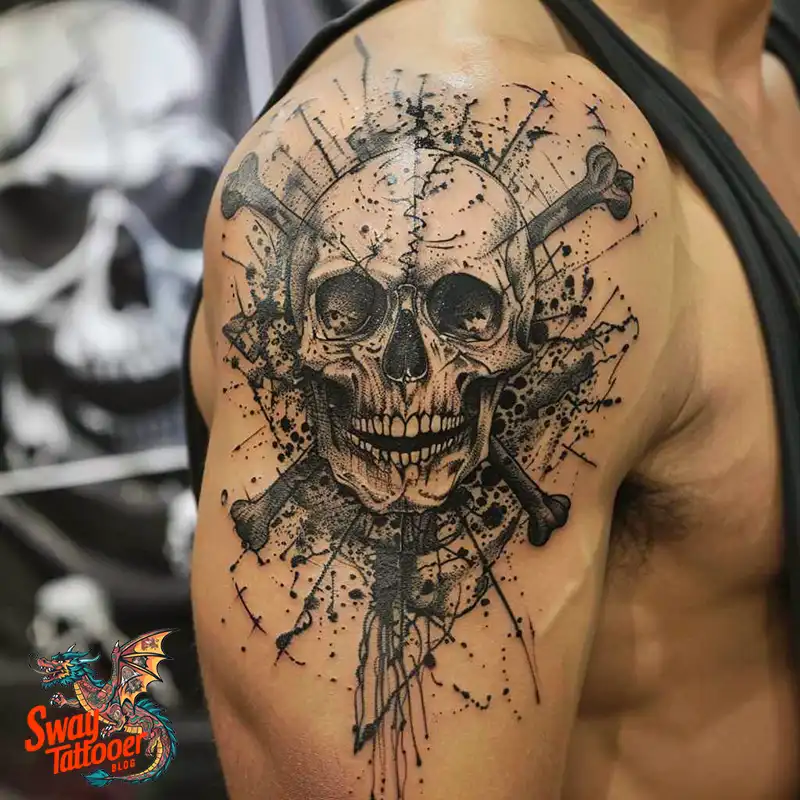
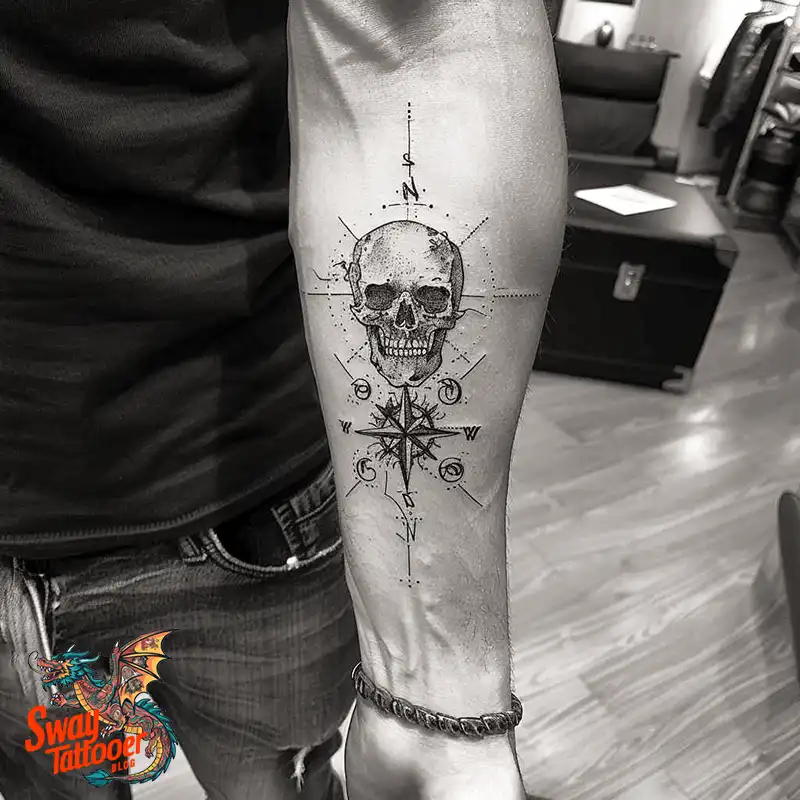
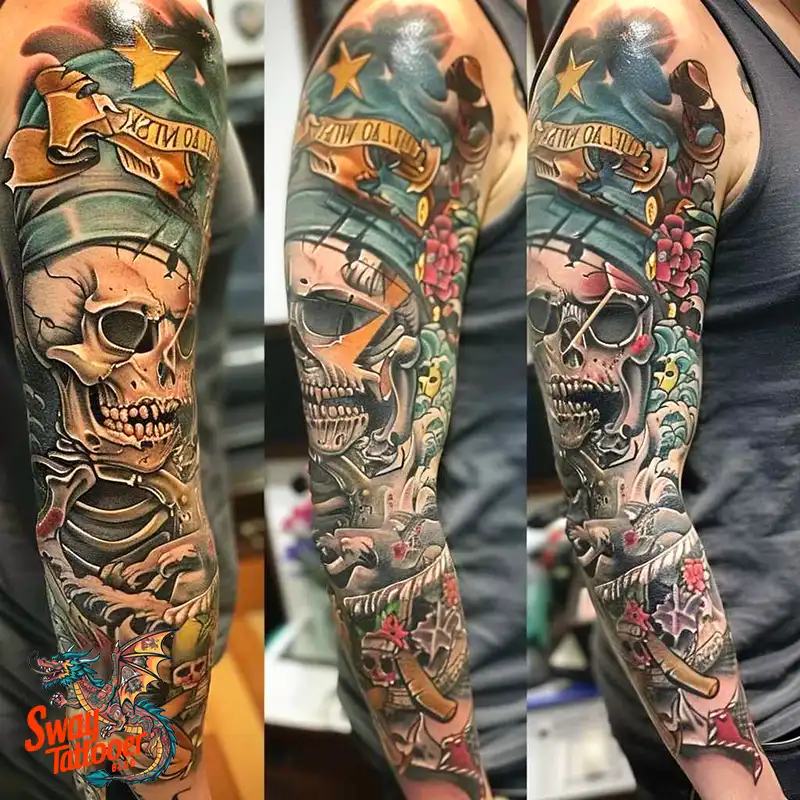
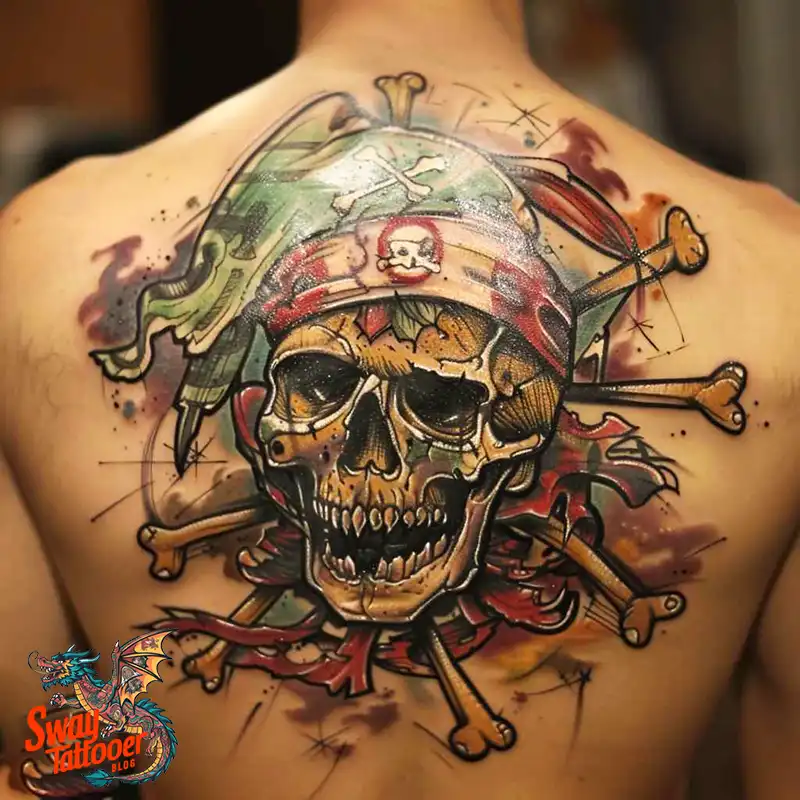
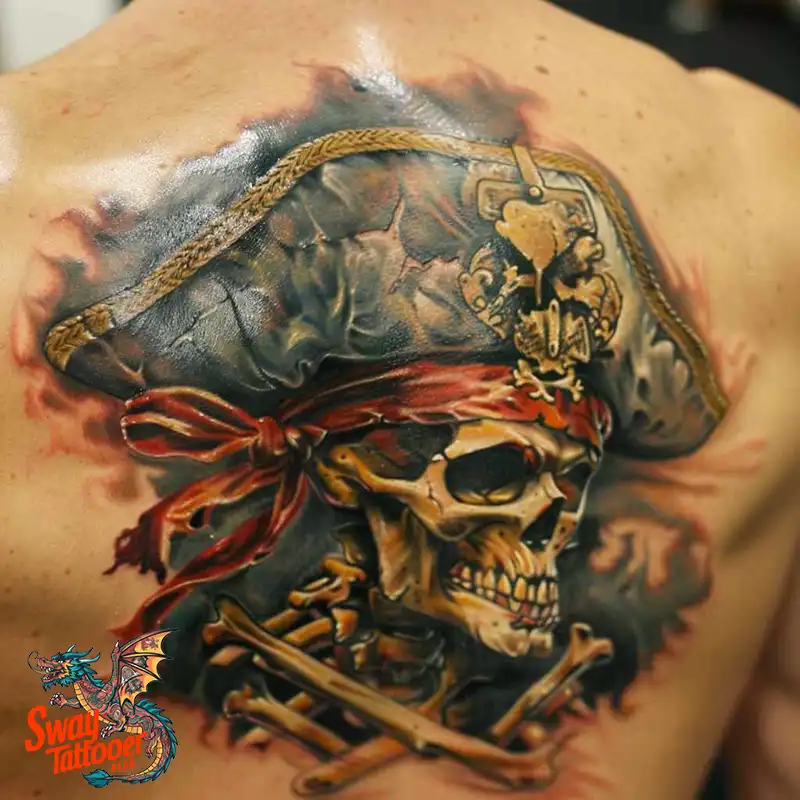
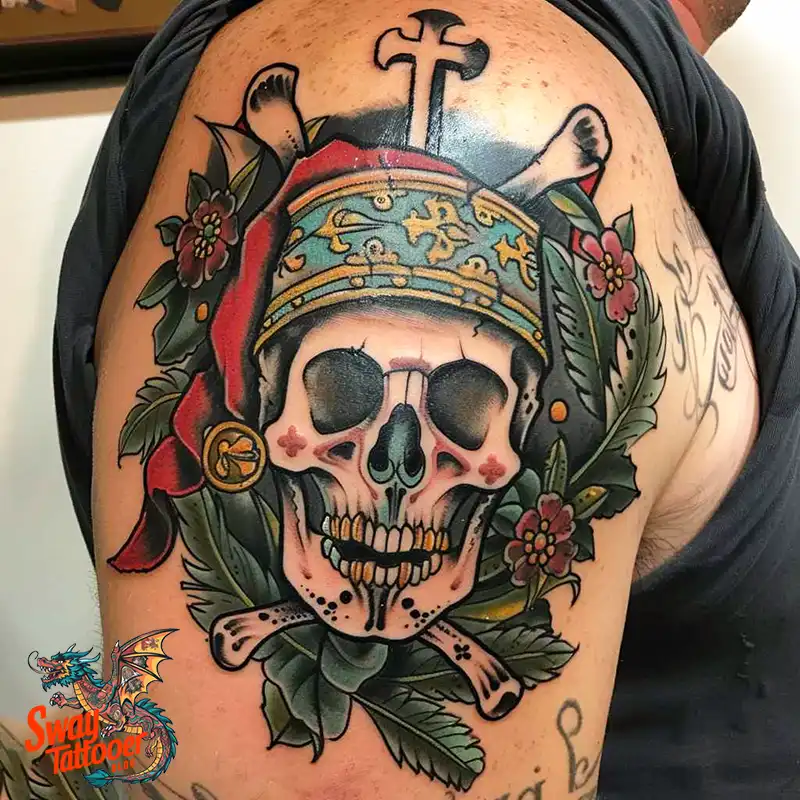
7. What should I do to prepare for my Jolly Roger tattoo session?
To prepare for your tattoo appointment:
- Hydrate: Drink plenty of water in the days leading up to your session.
- Rest: Ensure you get a good night’s sleep beforehand.
- Eat: Have a nutritious meal before your appointment to keep your energy levels up.
- Clothing: Wear comfortable clothing that allows easy access to the area being tattooed.
- Avoid Alcohol/Caffeine: These can thin your blood and make the tattooing process more difficult.
8. How do I care for my Jolly Roger tattoo after getting it?
Proper aftercare is essential for a tattoo to heal well and look its best. Follow these general steps:
- Keep It Clean: Gently wash the tattoo with mild soap and water, then pat dry with a clean towel.
- Moisturize: Apply a thin layer of recommended ointment or unscented lotion to keep the skin hydrated.
- Avoid Sun Exposure: Keep your tattoo out of direct sunlight to prevent fading and damage.
- No Scratching: Refrain from scratching or picking at the tattoo as it heals, even if it itches.
- Follow Artist’s Instructions: Adhere to any specific aftercare guidelines provided by your tattoo artist.
9. Can I customize my Jolly Roger tattoo?
Absolutely! Many people choose to personalize their Jolly Roger tattoos to add unique significance. This can include:
- Adding Elements: Incorporate other symbols like swords, ships, or treasure chests.
- Color Choices: Opt for colors that have personal meaning or simply appeal to your aesthetic.
- Inscriptions: Include quotes, names, or dates that add a personal touch.
- Stylistic Tweaks: Adjust the design to fit your preferred artistic style, whether that’s minimalist, ornate, or anything in between.
10. Is there any cultural or historical significance to be aware of?
The Jolly Roger has a rich history rooted in pirate lore. Pirates used the flag to strike fear into their enemies, signaling that mercy would not be shown to those who resisted. While it is historically tied to piracy, in modern times it often carries more symbolic meanings related to personal identity and values. However, it’s always good to be mindful of its origins and cultural connotations.
By understanding these aspects, you can make an informed decision about getting a Jolly Roger tattoo that resonates with you personally.
Conclusion
Jolly Roger tattoos are a strong symbol of rebellion, freedom, and adventure. They come from the history of pirates at sea. These tattoos often show skulls, crossbones, and other sea symbols, which make them look daring and bold.
In our discussion, we learned that the Jolly Roger started as a pirate flag. Over time, it turned into a popular tattoo design. Some people choose simple black-and-white designs, while others prefer bright and detailed ones. Each style has its own special meaning.
Pirate stories in books, movies, and legends have kept the Jolly Roger exciting for many people. This tattoo shows a love for a wild, free life, just like pirates who sailed the open seas.
In short, a Jolly Roger tattoo is more than just ink. It tells a story of courage and defiance, and it celebrates the spirit of adventure. If you choose this tattoo, you’re not just getting a design—you’re claiming a piece of history and a sign of your brave, adventurous nature.
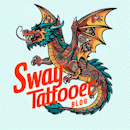

Leave a Reply